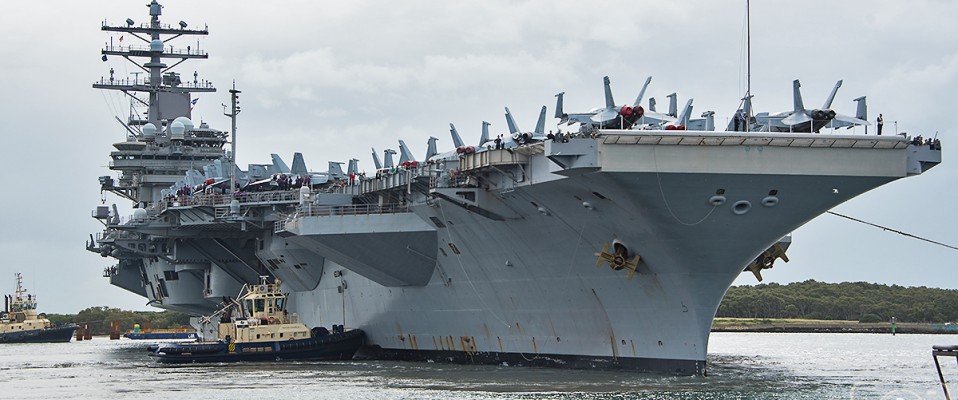The ‘Gipper’ flying the flag at Talisman Sabre 19
USS Ronald Reagan CVN-76 participates in Talisman Sabre 2019
“Your flight to the ‘Reagan’ is loud, fast, dark and smelly, but you better hold on!”
Report and photos by Daniel Vorbach
August 15, 2019
The loadmaster and air-crewman wave their clenched fists furiously in the air as they scream in unison “Here we go, Here we go, Here we go” you sit and wait. The Grumman C-2 Greyhound from the U.S. Navy’s replenishment squadron VRC-30 Detachment 5 “The Providers” slams into the deck, hard, and stops harder going from 175 kilometres per hour to a complete stop in three seconds. The two Allison T.56 turboprops roar in a full throttle torturous rage as the aircraft catches the first arrestor wire.
As the C-2’s rear loading ramp lowers, passengers onboard the Greyhound catch their first glimpse of the vast expanse that is the aircraft carriers flight deck, the first view they have had since departing RAAF base Amberley an hour and a half earlier. As the media scrum glances around at the various aircraft operations being conducted its an environment that keeps you on your toes, your then ushered to the PAO as he extends his hand and welcomes you to the only forward deployed aircraft carrier in the United States Navy, the USS Ronald Reagan.
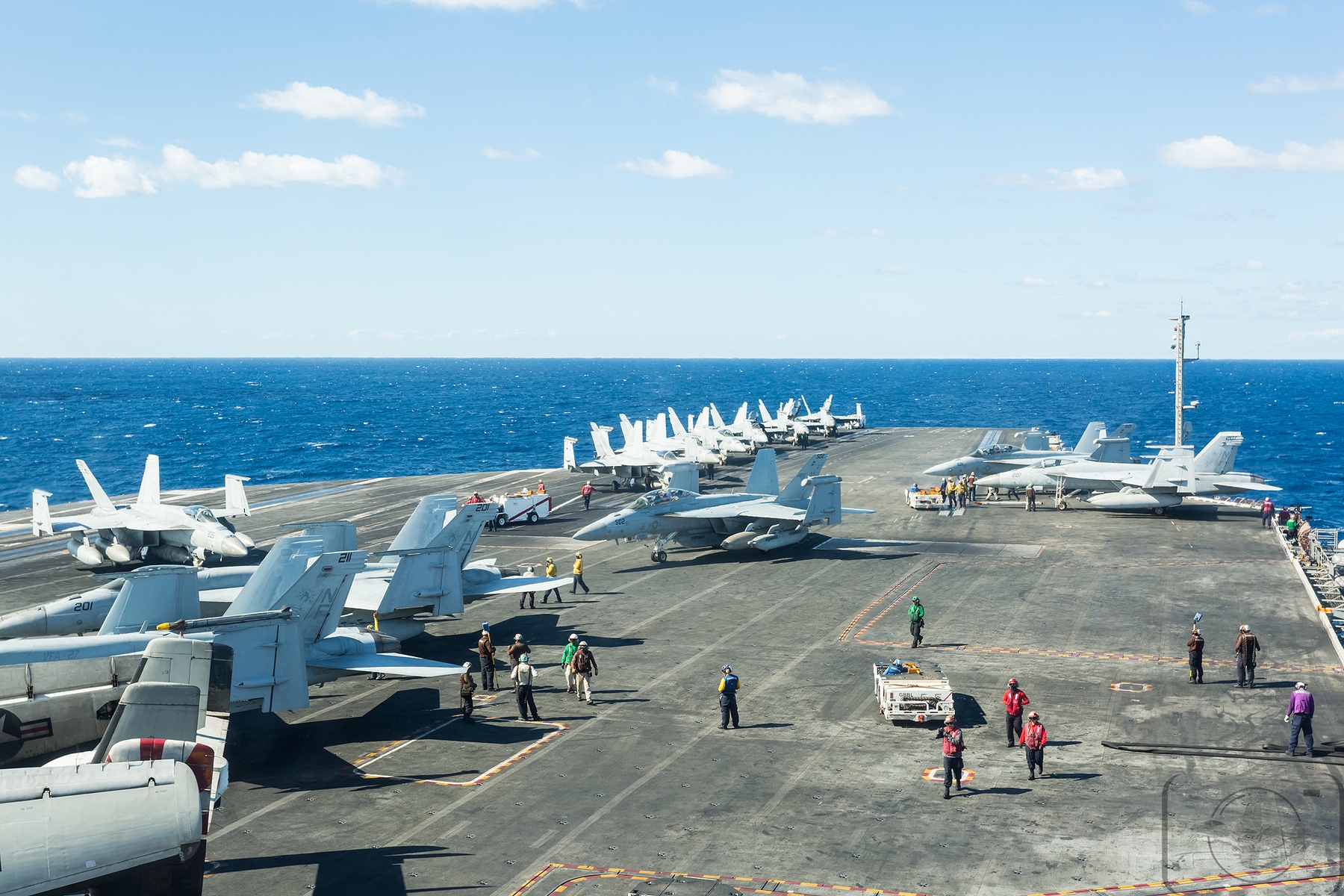
Based in Yokosuka, Japan the USS Ronald Reagan CVN-76 is a unique and vital part of Exercise Talisman Sabre, with it’s combination of nearly 70 fixed and rotary wing aircraft from Carrier Air Wing 5 (CVW-5), with over 5000 personnel, at 18 storeys high and a deck at 333ft long, it is clearly an imposing figure and one of the most powerful ships in the region.
Throughout the exercise the ship and more importantly the roll carried out by CVW-5 varied from day to day. The air-wing were switching between maritime strikes and land attack rolls and air interdiction, allowing for the honing of interoperability skills with United States closest allies.
Every day of the exercise up to 80 sorties were being conducted from aircraft of CVW-5 which included F/A-18E/F Super Hornets, EA-18G Growler, C-2 Greyhound and E-2D Hawkeye aircraft.
During one drill on CVN-76 F/A-18E/F Super Hornets from VFA-102 “Diamondbacks” and VFA-27 “Royal Maces” were launched from steam powered catapults embedded in the ship’s deck. Along with P-8 surveillance planes from U.S. Navy VP-5 and the Royal Australian Airforces 11 Squadron with helicopters from HSM-77 and HSM-51, they were tasked with hunting and locating submarines on the carrier’s tail.
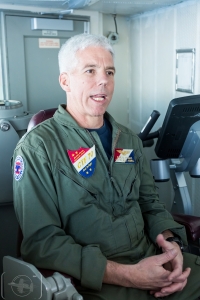 APD interviewed the Commander of the 7th Fleet Battle Group, Rear Admiral Karl O’ Thomas, who has served with the United States navy for 33 years and is a former E-2 Hawkeye driver who is participating in Exercise Talisman Sabre for the first time in his career. Serving the whole time aboard U.S. Navy aircraft carriers, he told us about the team work that comes together to make the ship work, with the average age of the crew just 22 years old.
APD interviewed the Commander of the 7th Fleet Battle Group, Rear Admiral Karl O’ Thomas, who has served with the United States navy for 33 years and is a former E-2 Hawkeye driver who is participating in Exercise Talisman Sabre for the first time in his career. Serving the whole time aboard U.S. Navy aircraft carriers, he told us about the team work that comes together to make the ship work, with the average age of the crew just 22 years old.
“It’s been a great exercise for us being able to operate with our closest allies, it’s the type of training we need to do to further hone our war-fighting skills.” RADM Thomas states.
“Clearly it’s one of the most capable ships in this region, the fact that we can move quickly from one exercise to another allows us to cover a lot of ground and work with a lot of partners and allies and increase the strength and resolve of the US presence in the area.”
Through all the modern technology and cutting edge firepower aboard the ship, this is not the case in the Flight Deck Control Room. In the centre of this small, cramped & busy room lays the scale replica of flight deck & hangar bay, known as the ‘Ouija board’.
Using a sophisticated system of coloured pins, nuts and silhouettes, Senior Chief Sycago explained that “everything that happens out on the deck, happens here”.
Watching the aircraft silhouettes moving on the “board’ coinciding with the movements on deck is fascinating in its simplicity, but with a digital version in the works it’s days are numbered and this unique look at the way the colours both inside and out mimic each other will be lost to visitors who will embark on the ship in the future.
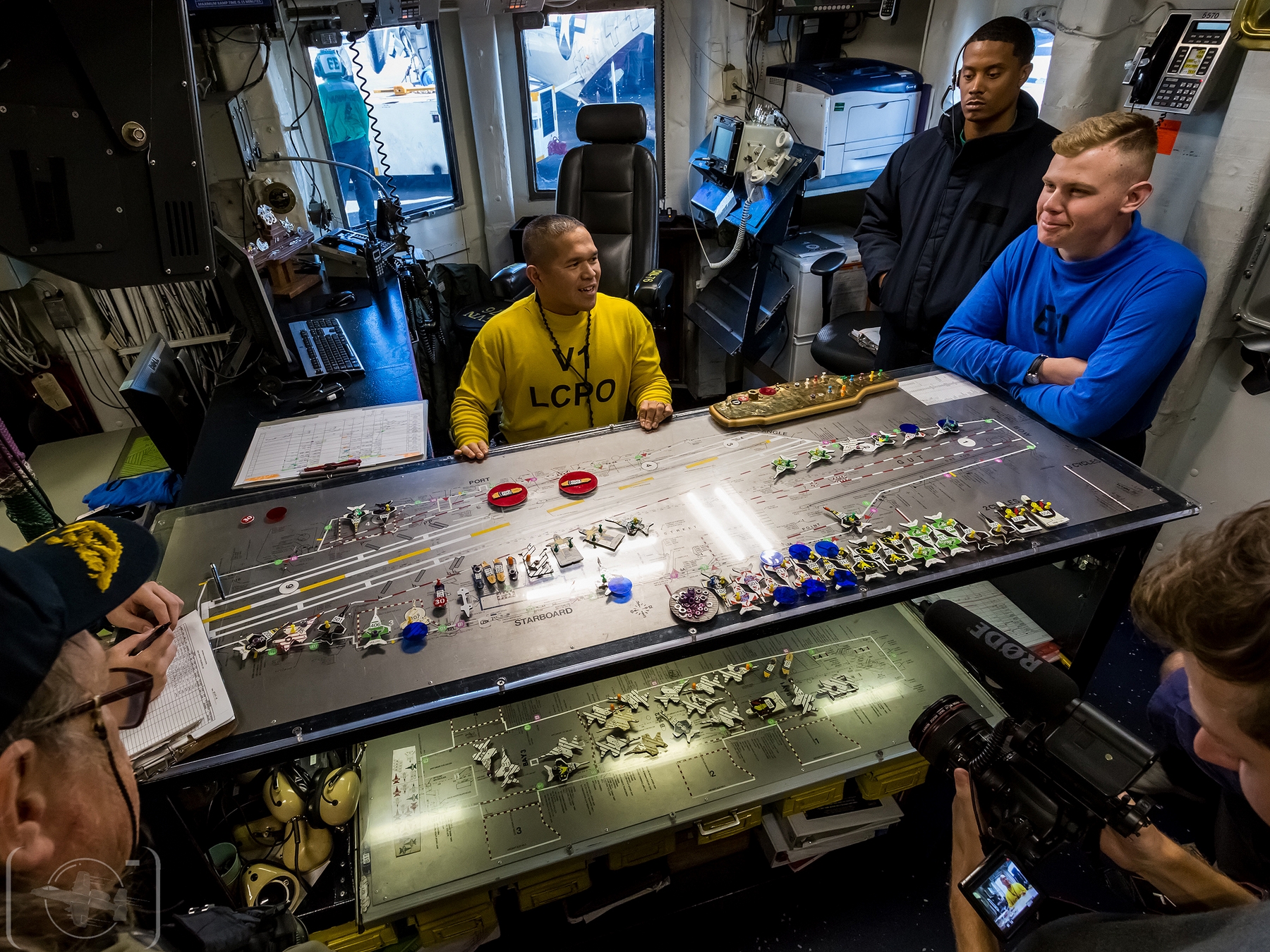
On deck the colours identify the roles within the flight deck, from the yellow of the Catapult Officers or “shooters” to the purple of the Refuelers known as “Grapes” nobody speaks, everything is communicated through hand signals in a fine tuned ballet of aircraft movements, jet blast, tugs, hoses, arrestor cables and four aircraft elevators which can deliver a aircraft from the hanger to the flight deck in just four seconds.
This amazing experience is over just a fast as the VAQ-141 “Shadowhawks” EA-18G Growler departs the deck from catapult #1.
The Nimitz-class aircraft carrier has a 63-bed hospital, six gyms, a chapel, dentist and even a Starbucks.
Commissioned in 2003, the USS Ronald Reagan is now in its 17th year of service, and while the first of three new, Ford-class aircraft carriers (USS Gerald R Ford) has now been commissioned, Rear Admiral Thomas says the Nimitz will remain relevant.
“The thing that makes an aircraft carrier modern is the air-wing,” he says.
“We remain modern as this exercise is about being ready. It’s about being interoperable, it’s about being able to execute tactics together and communicate and just be more lethal.”
On a cruise of this magnitude operating away from its home port for over three months there will be milestones that are celebrated onboard the ship as was the case when Commanding Officer of Strike Fighter Squadron VFA-102 “Diamondbacks” Commander Harry Evans completed his 1,000th TRAP (carrier landing) a testament to a long career flying with the Navy which not many aviators get to achieve.
“A trap is really the culmination of a flight — the controlled crash if you will,” said the Syracuse, New York native. “It’s a lot of people working together from the maintainers in my squadron, to the yellow shirts on the roof, to the grapes giving us gas, to the green shirts launching and recovering. It’s a huge team effort to get an airplane ready to go and come down for a safe landing.”
Evans served as the WSO (pronounced WIZZO) Weapons System Officer during his landing. “I sit in the back seat of the F/A-18F. I control navigation, weapons systems, and communication. I’m basically another set of eyes and ears to back up the pilot and working our crew coordination to accomplish the mission.”
Evans said his 1,000th trap is a huge milestone not many aviators reach during their Naval career and attributed it to his Sailors and family.
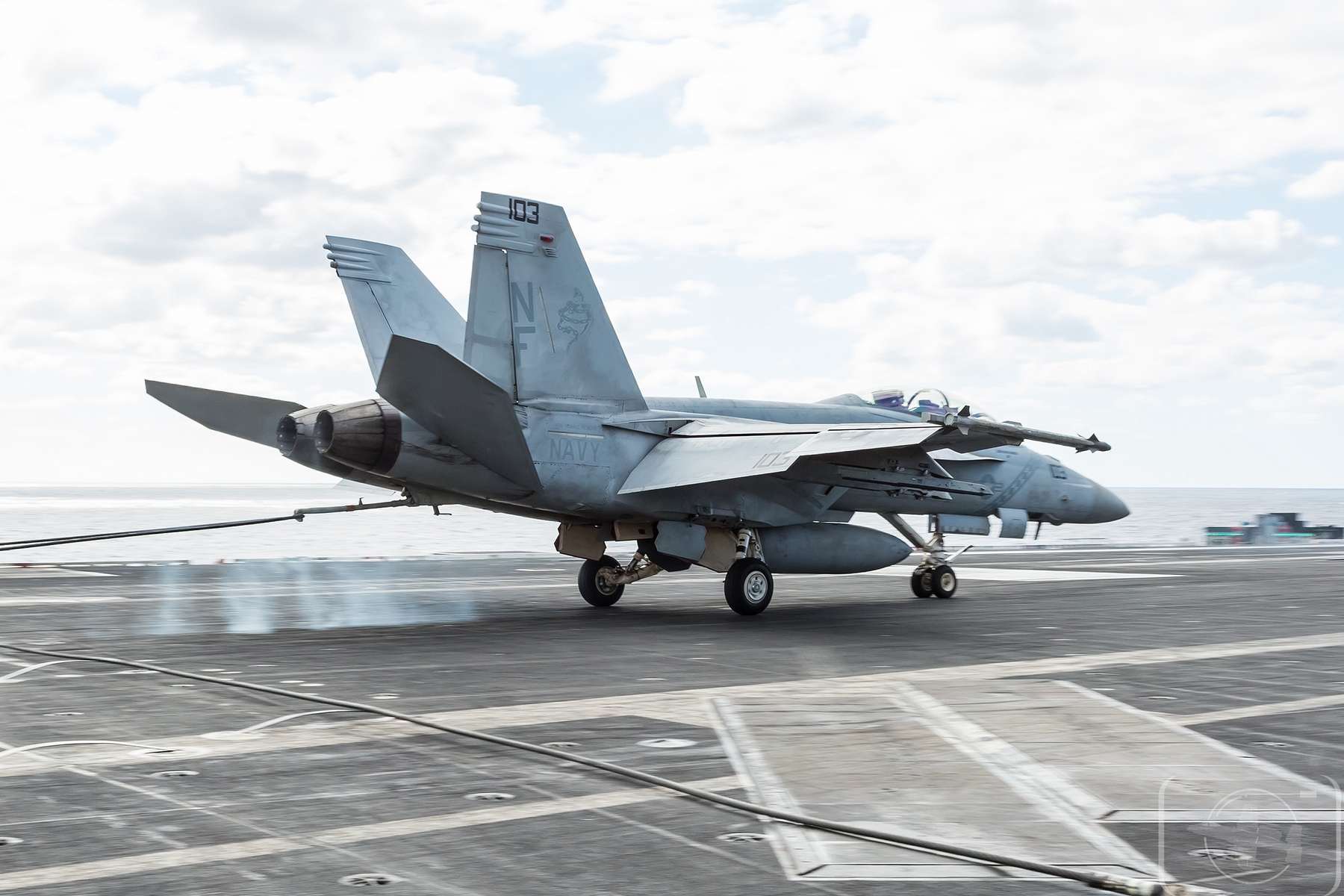
“This is a testament to all my hard-working Sailors in 102. The amount of work it takes to maintain aircraft to get it into the air and safely back to support our mission and tasking is immense. We do a lot of things in a controlled and sequenced harmony to get it right. I have to thank my family because it’s a lot of time away from home doing this job. I’m thankful they support me to have this amazing opportunity every day.”
For the media that embarked onboard the ship for just a few hours, the time has come to depart the ship back to point of origin and all Media are given a debrief below deck, we thank the team for a special look at the seventeen year old lady that is the USS Ronald Reagan, and we then adorn our cranial, a three piece helmet with built in goggles and life jacket, known as a “Horse Collar” and move our way to the idling C-2 Greyhound for our approximate forty minute flight back to RAAF base Amberley.
The loadmaster and air-crewman again wave their clenched fists in the air “Here we go, Here we go, Here we go” again rings out over the sound of the engines which now are spooling up.
We await the catapult shot that ends our visit aboard the USS Ronald Reagan and the one thing everyone has been patiently awaiting in eagerness and…….. BANG !!
You lurch forward into the four point harness holding you firmly into the seat, going from 0 to 230 kilometres per hour in 3 seconds, your face contorts and your feet leave the floor as you hurtle down the catapult accelerating faster than you can possibly explain, three seconds that feel like minutes of violence, giving way to calm once leaving the deck, your ride takes flight, homeward bound with adrenaline pumping through your veins,
Mission Accomplished.
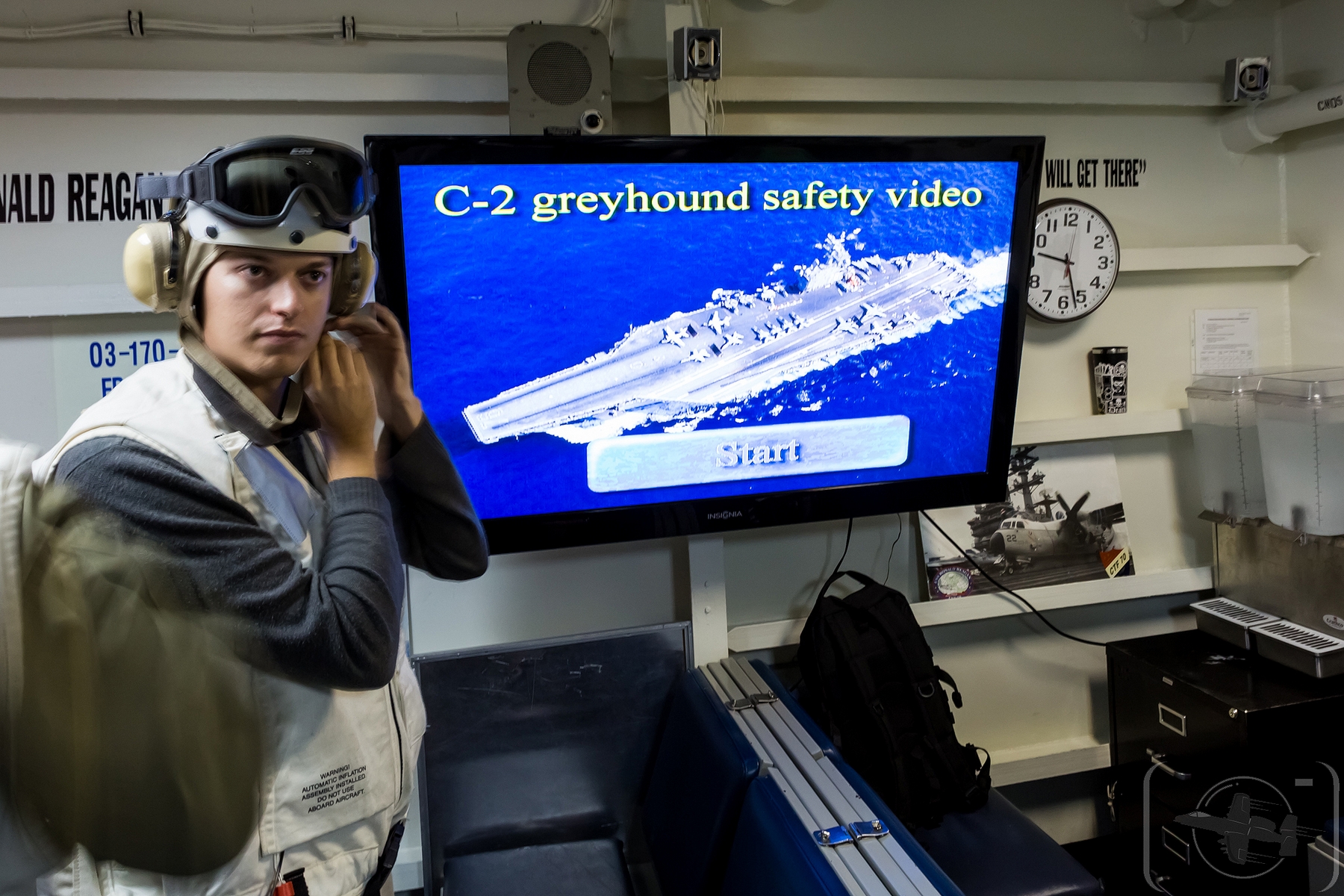
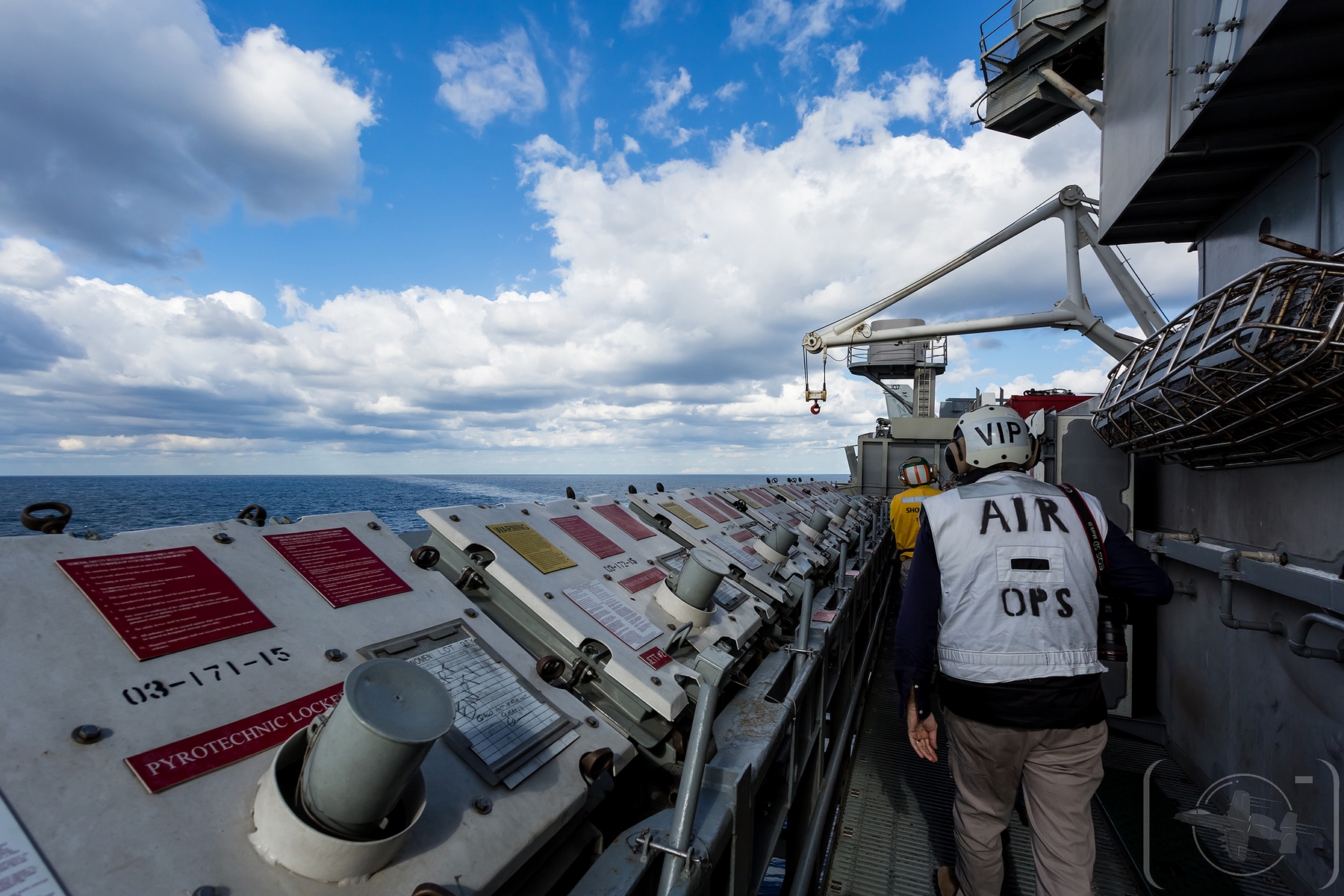
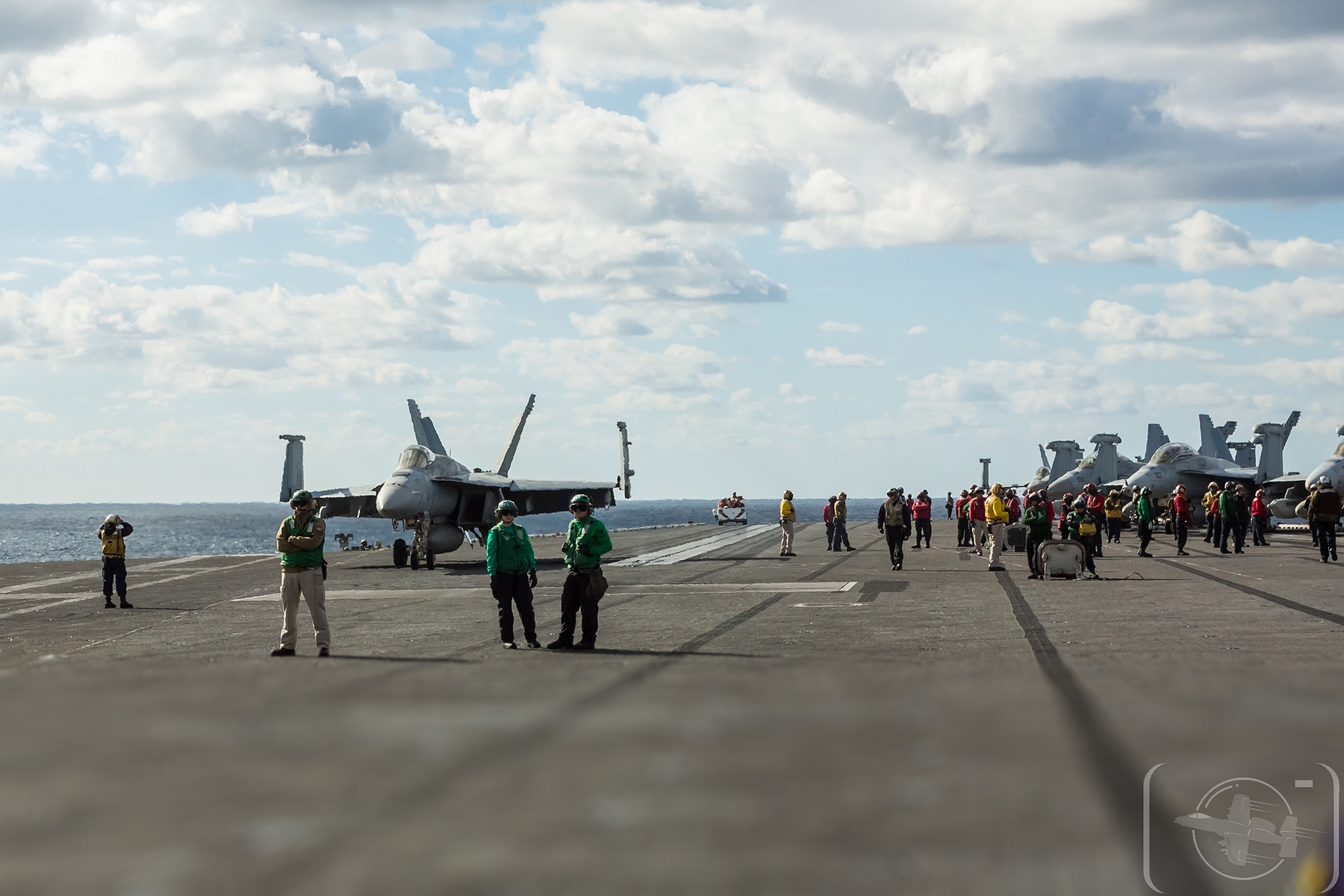
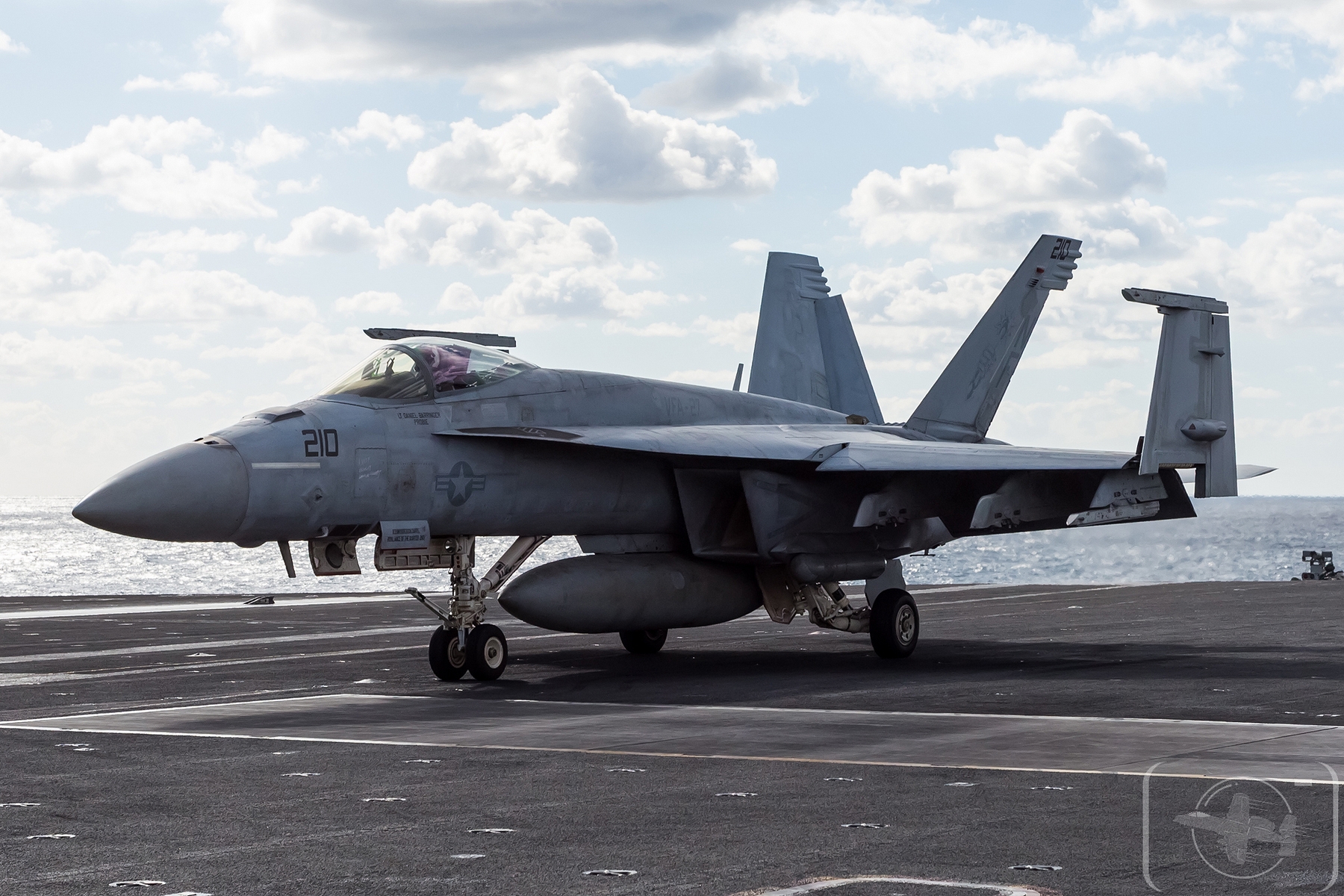
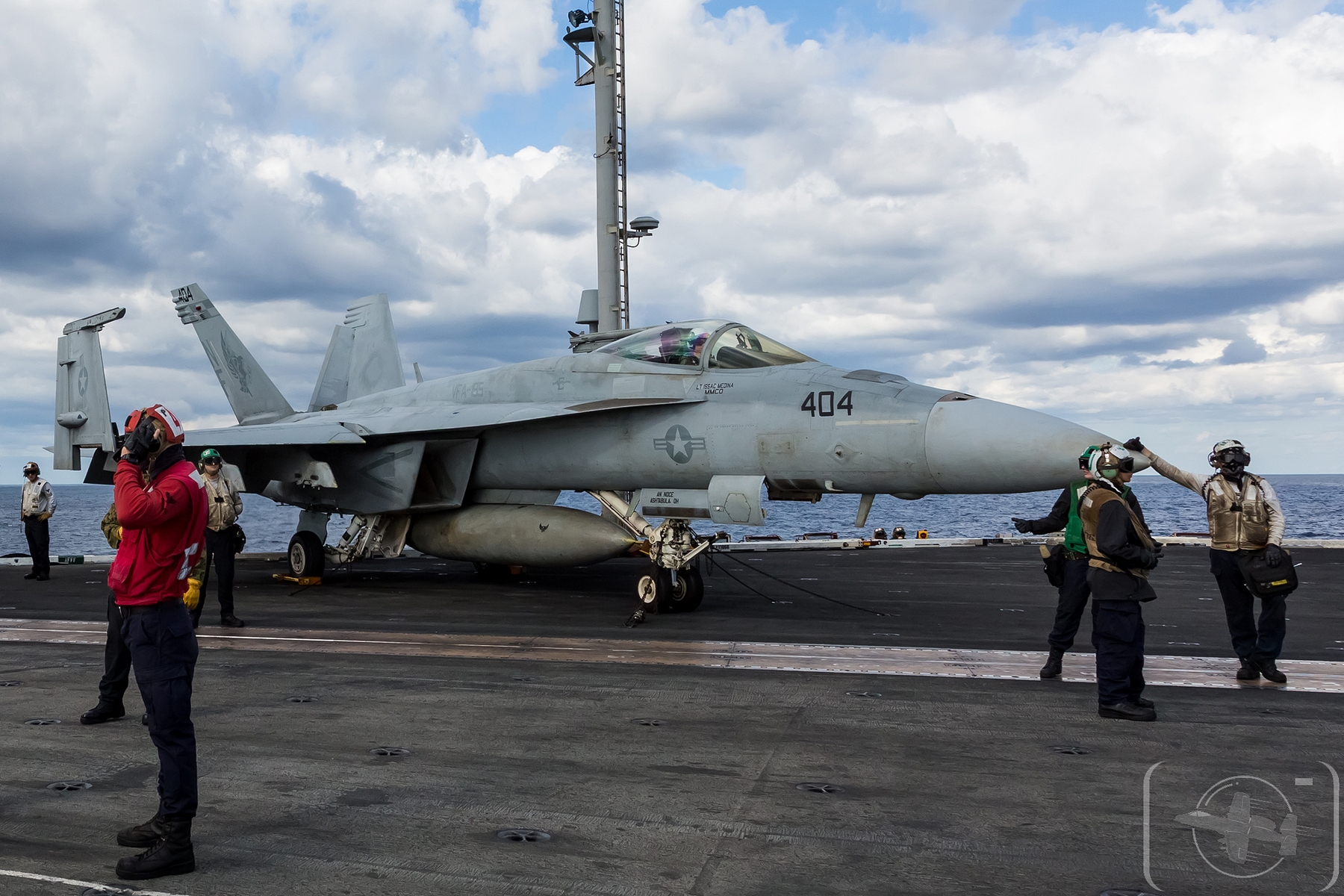
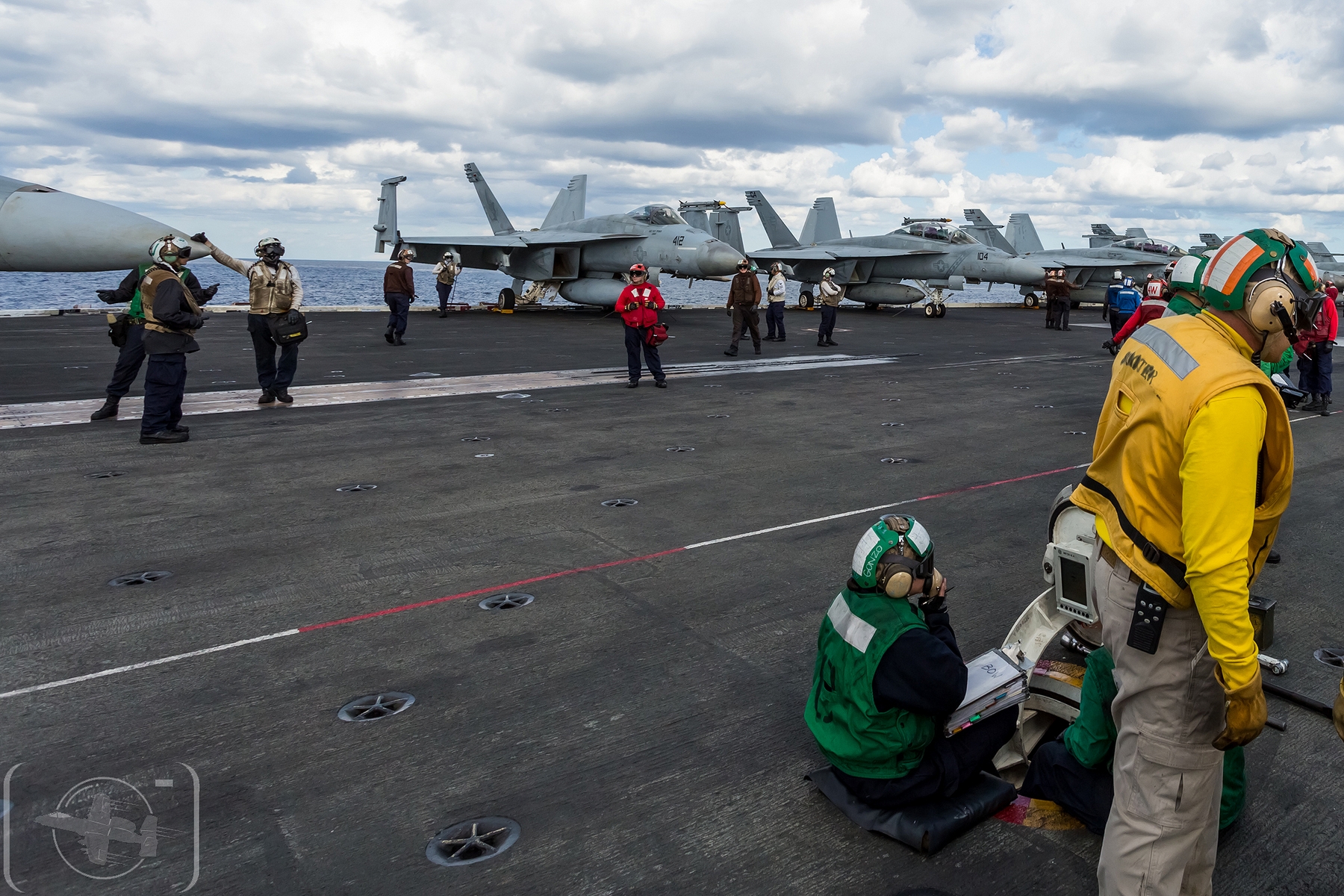
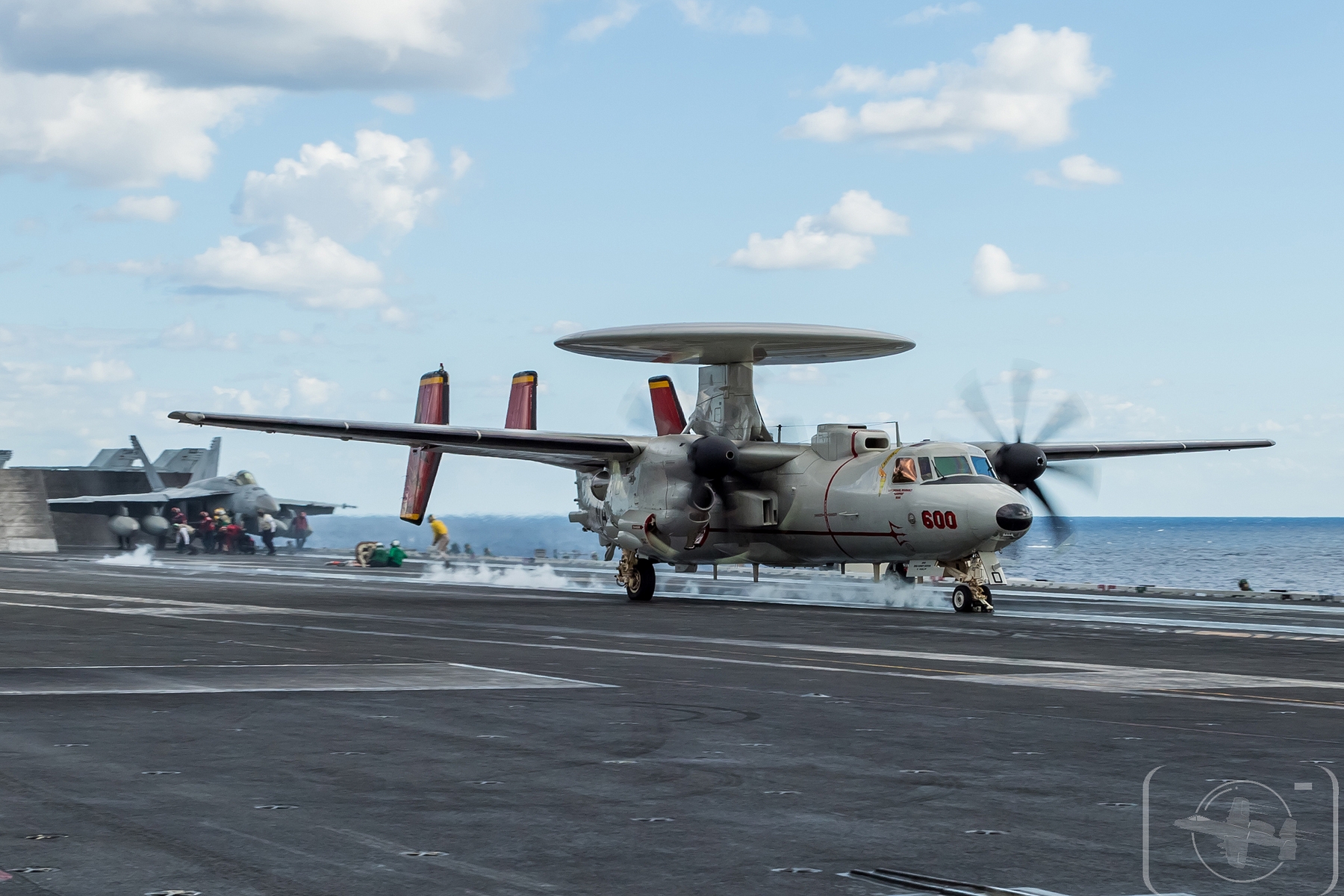
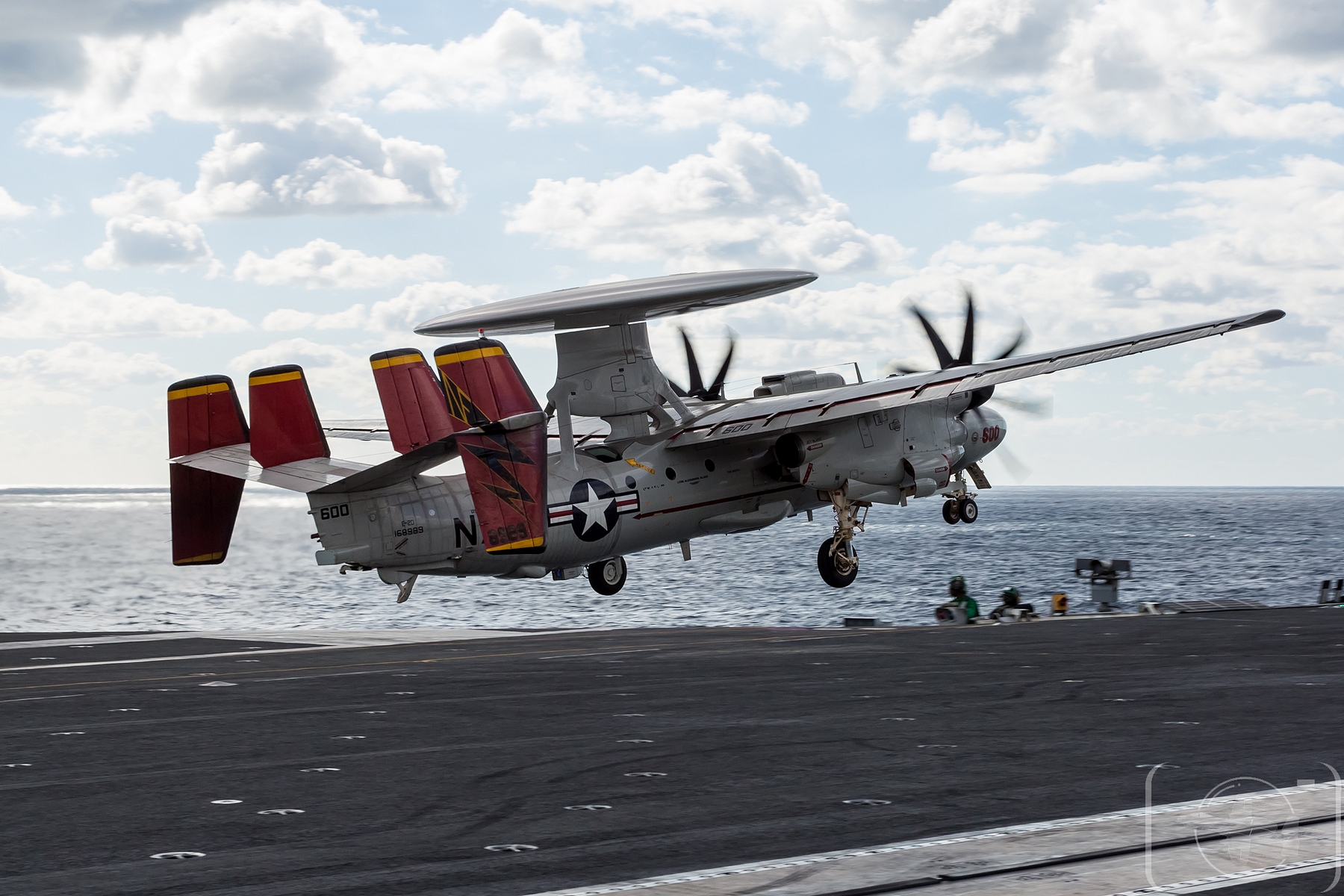
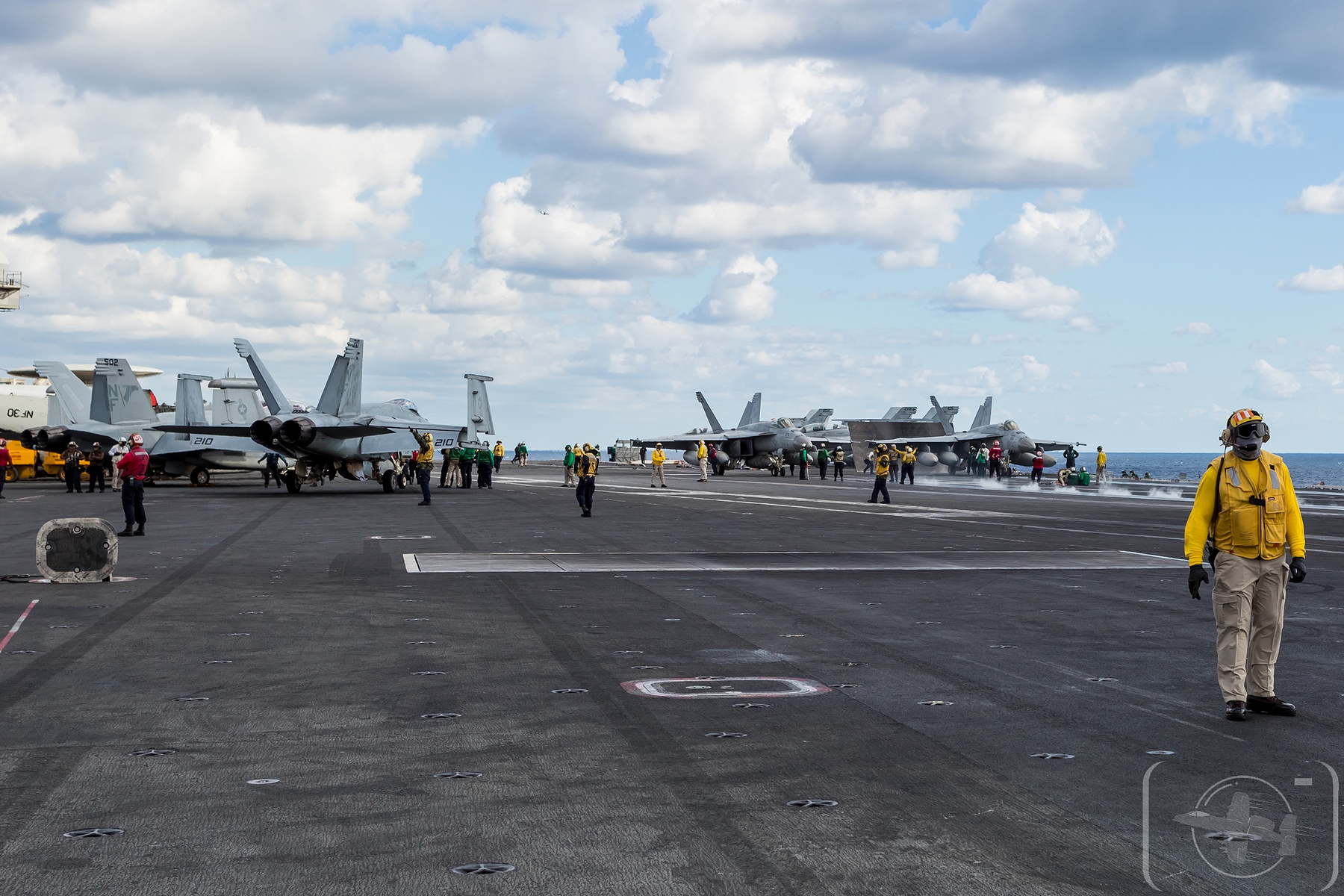
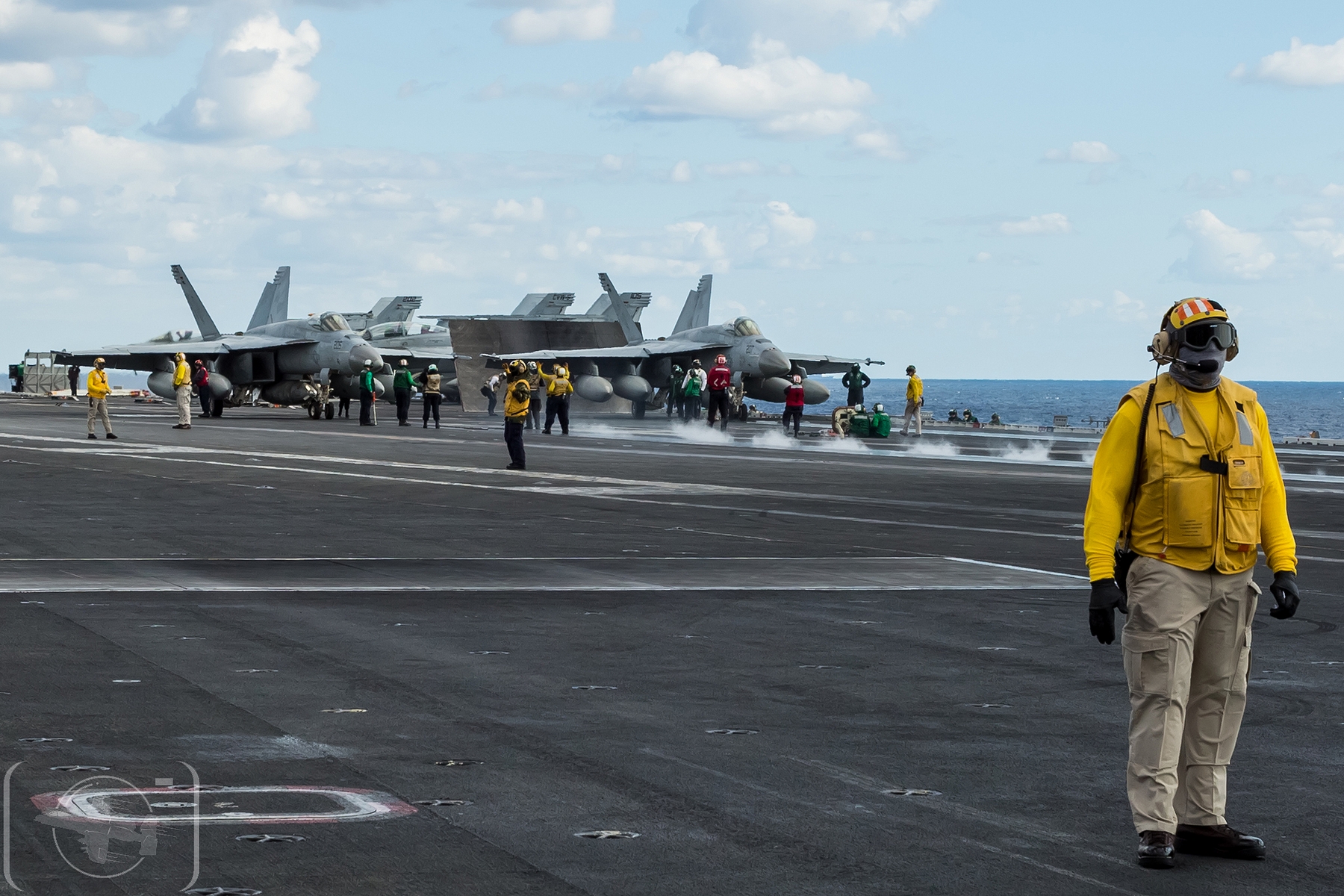
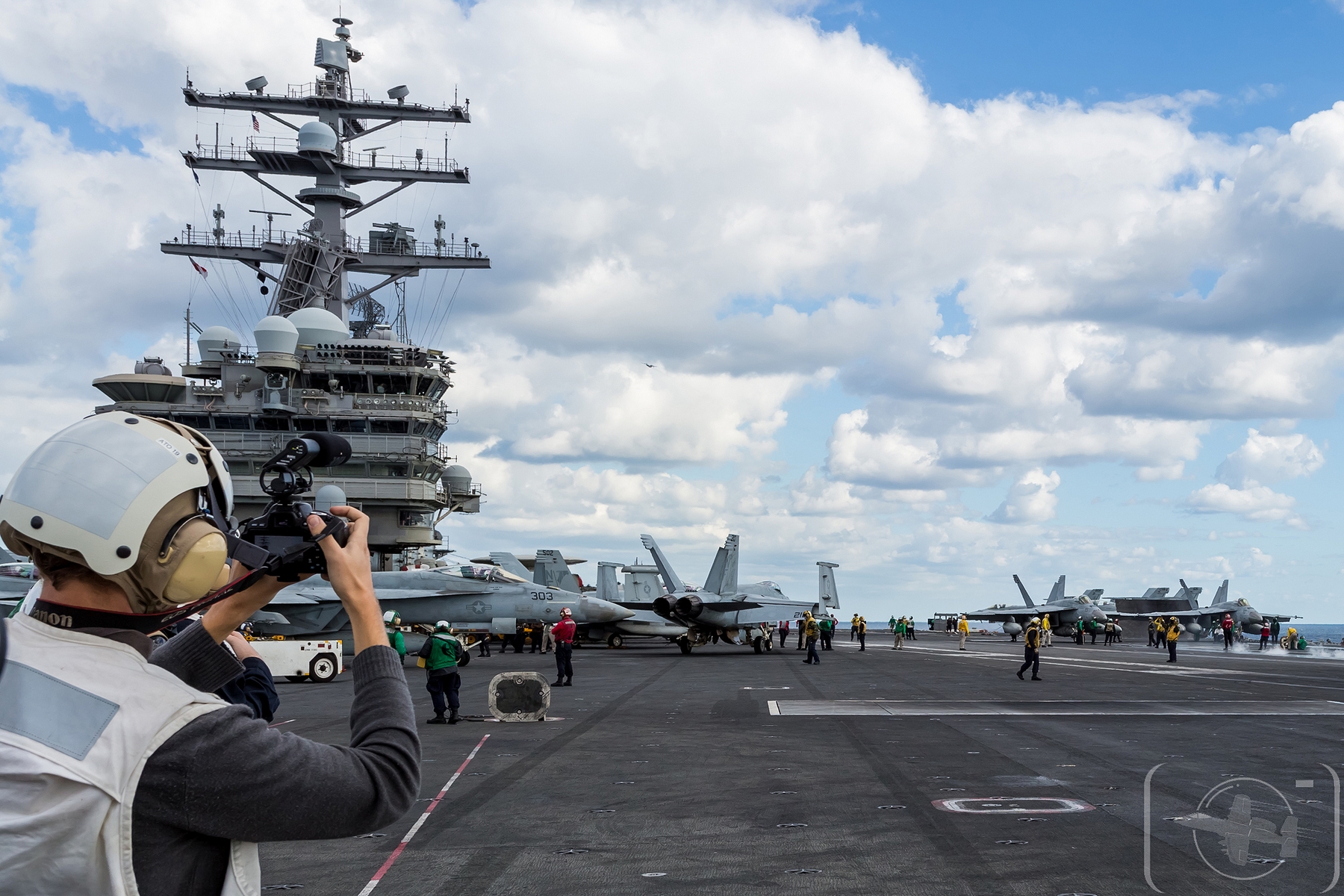
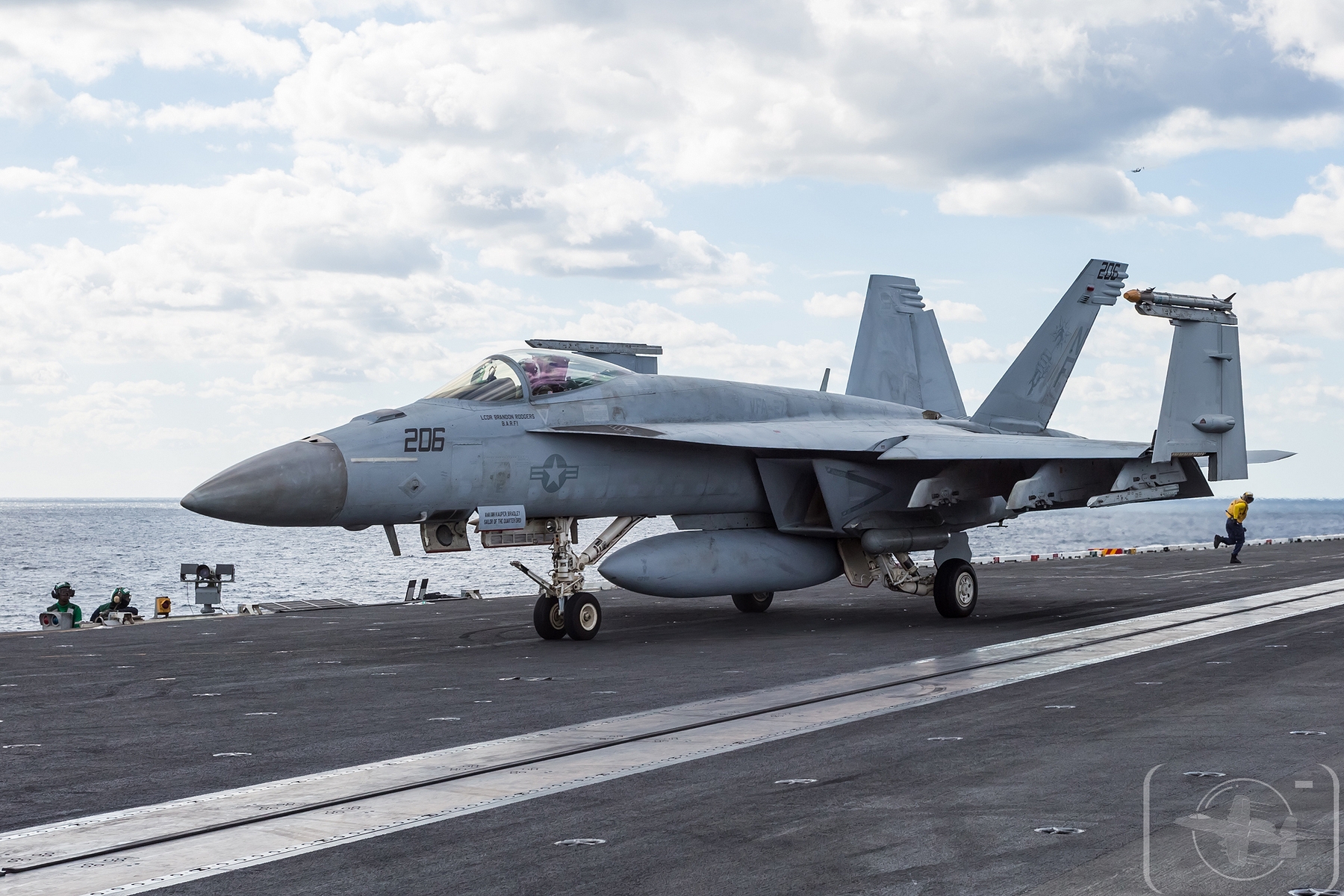
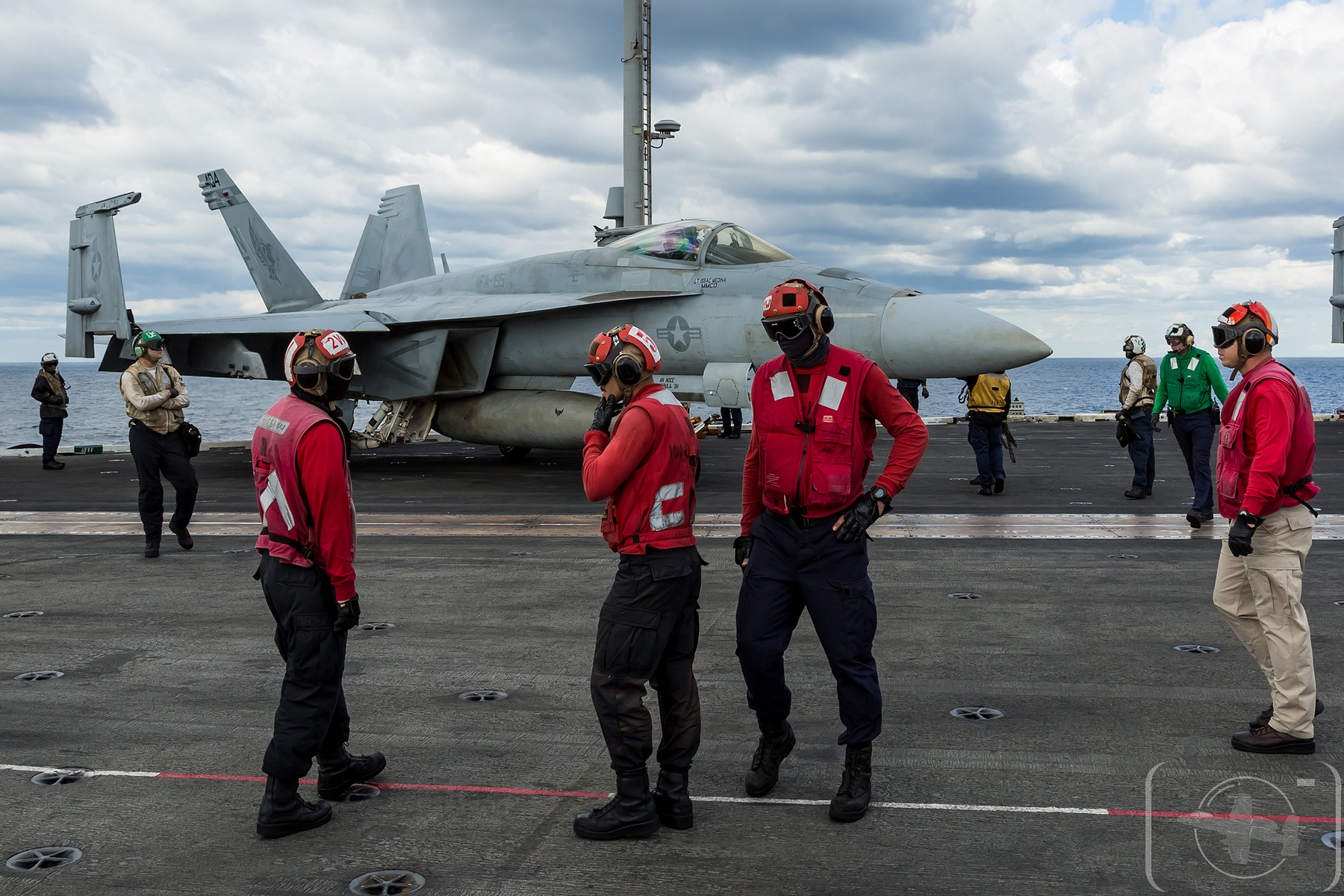
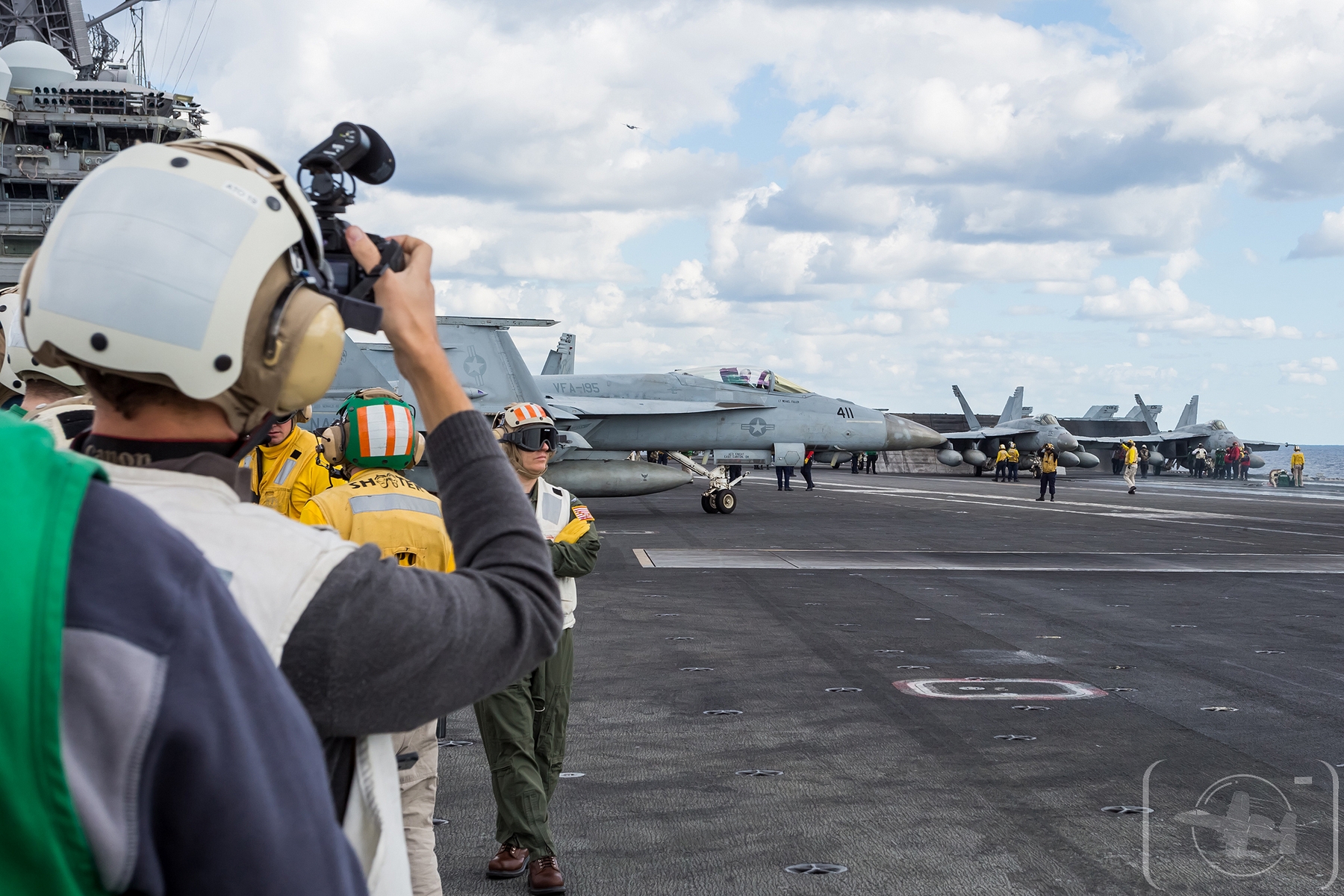
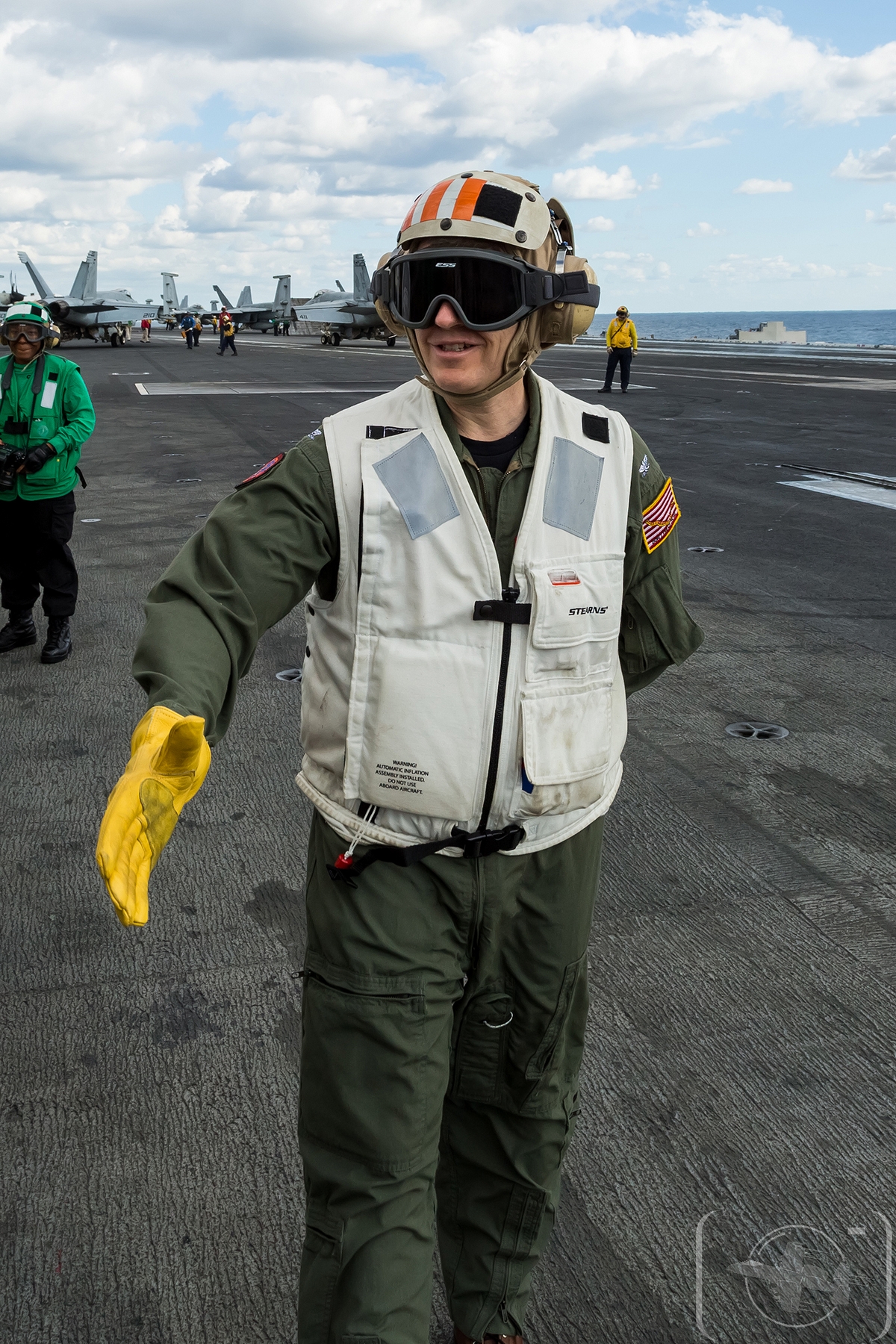

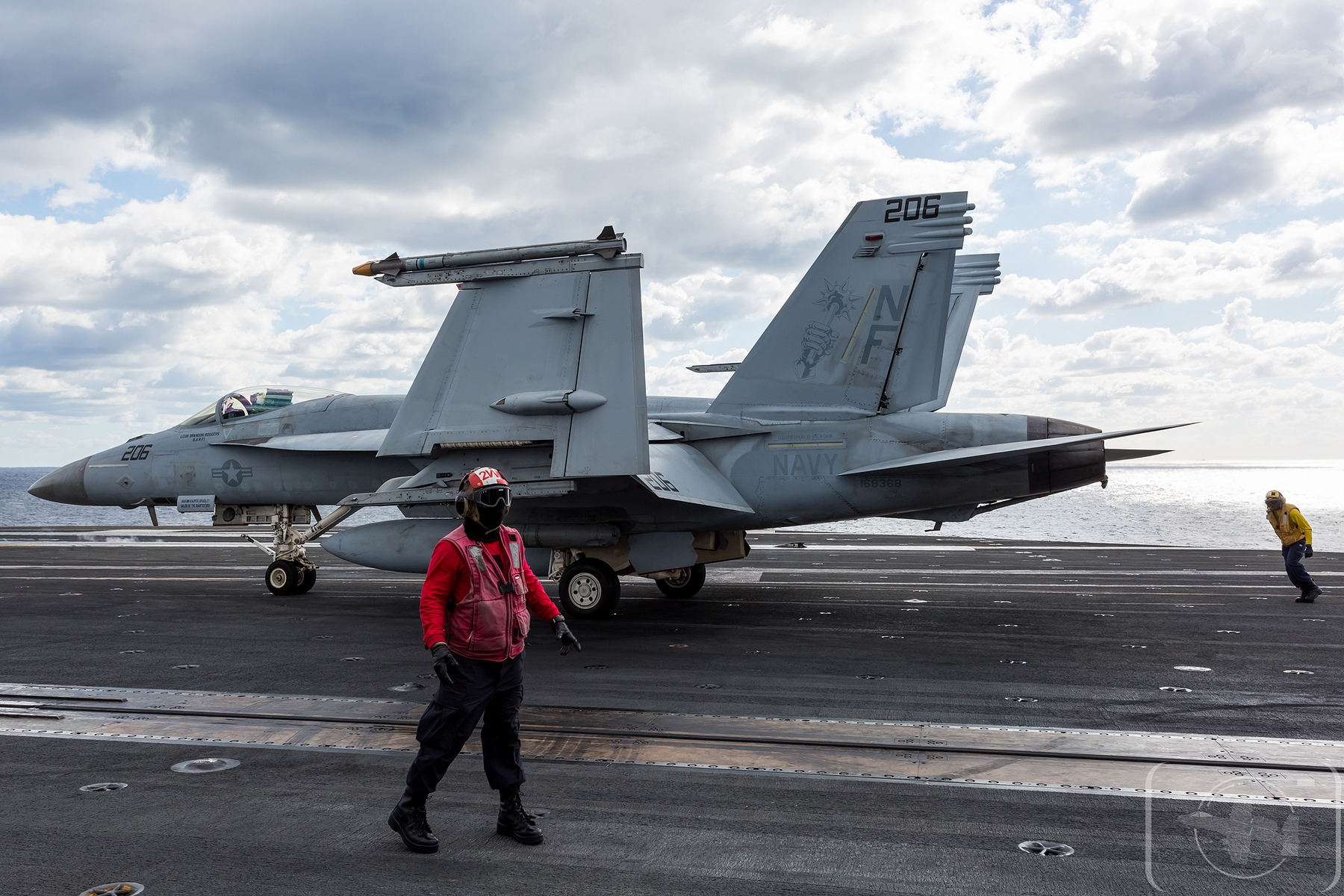
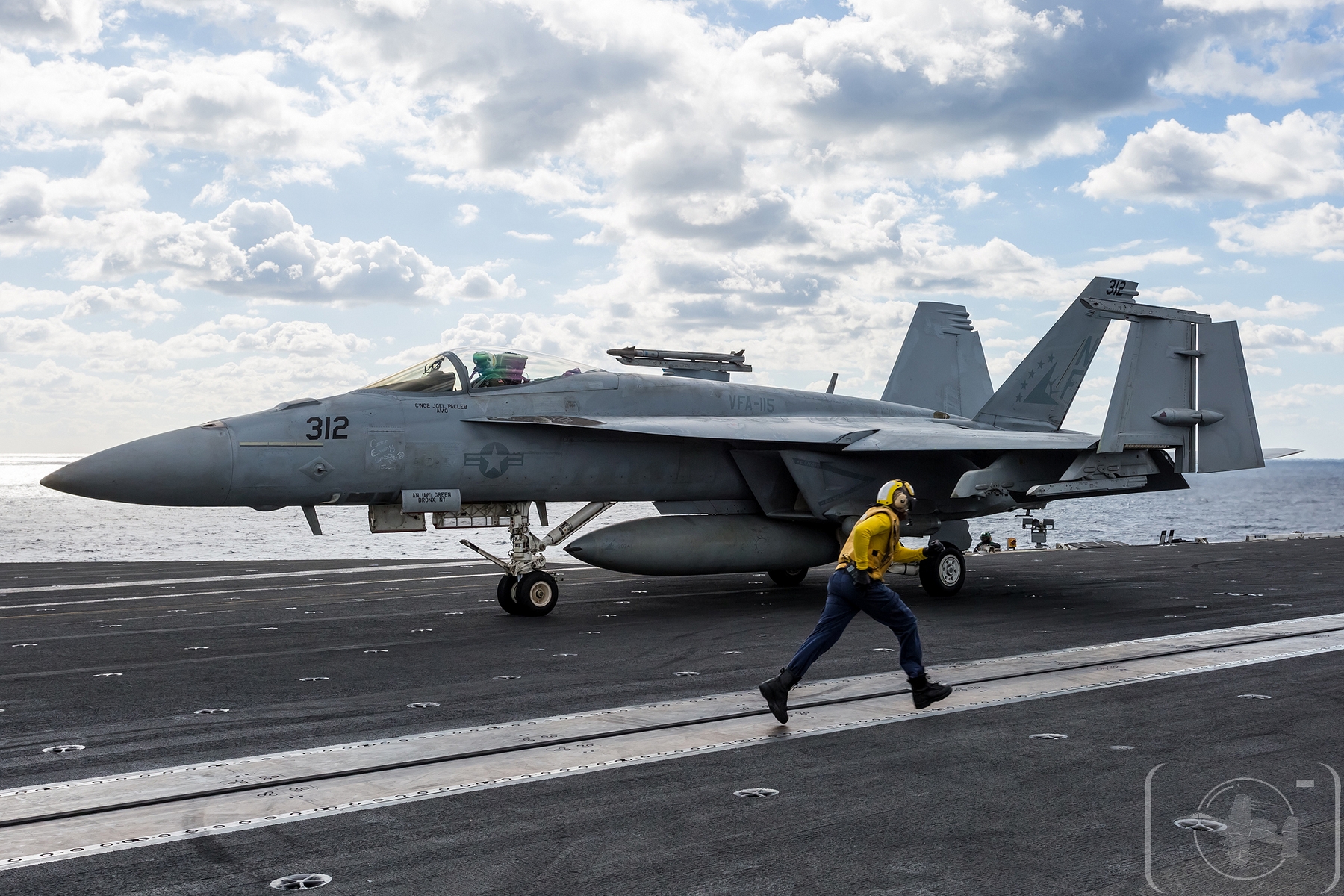
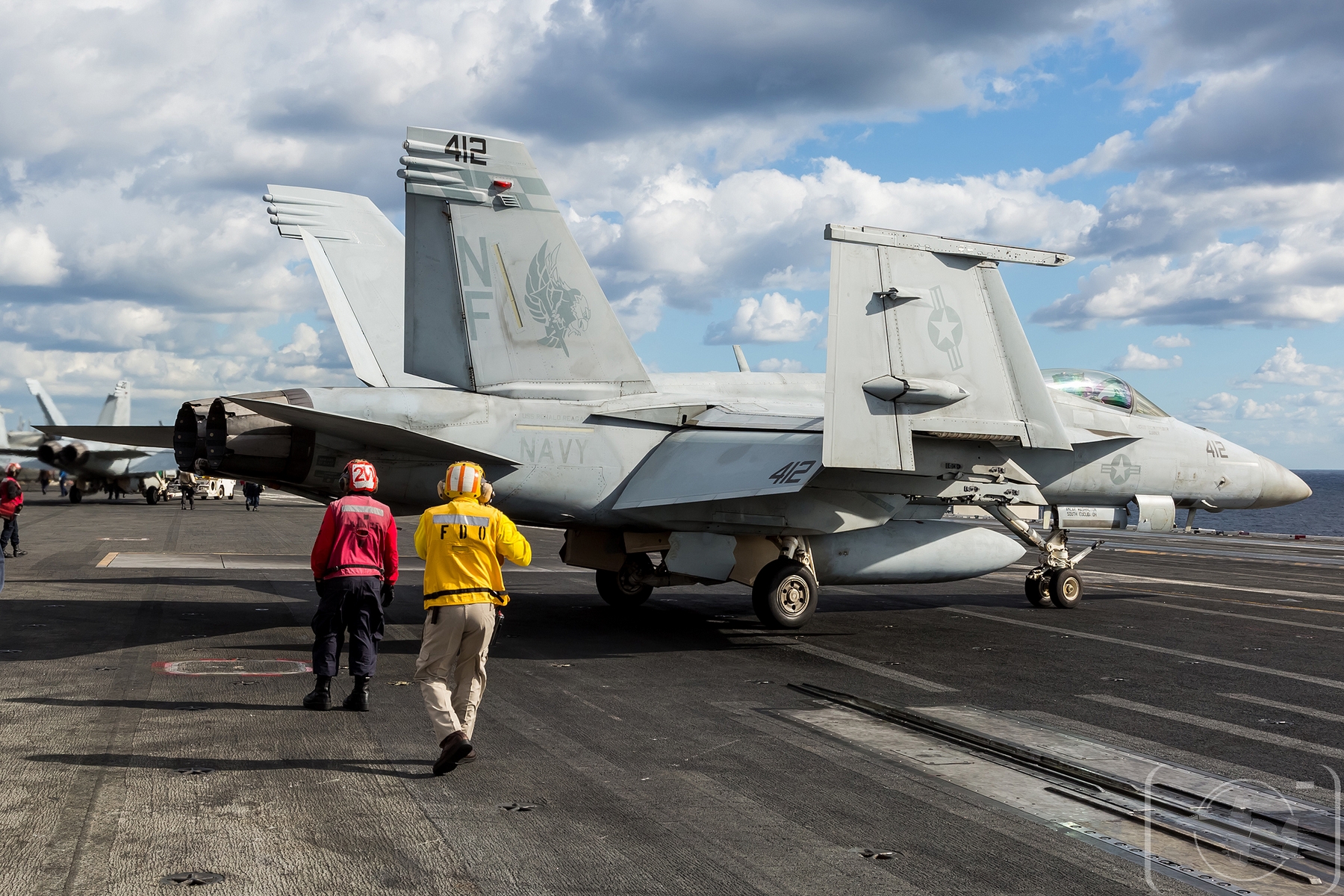
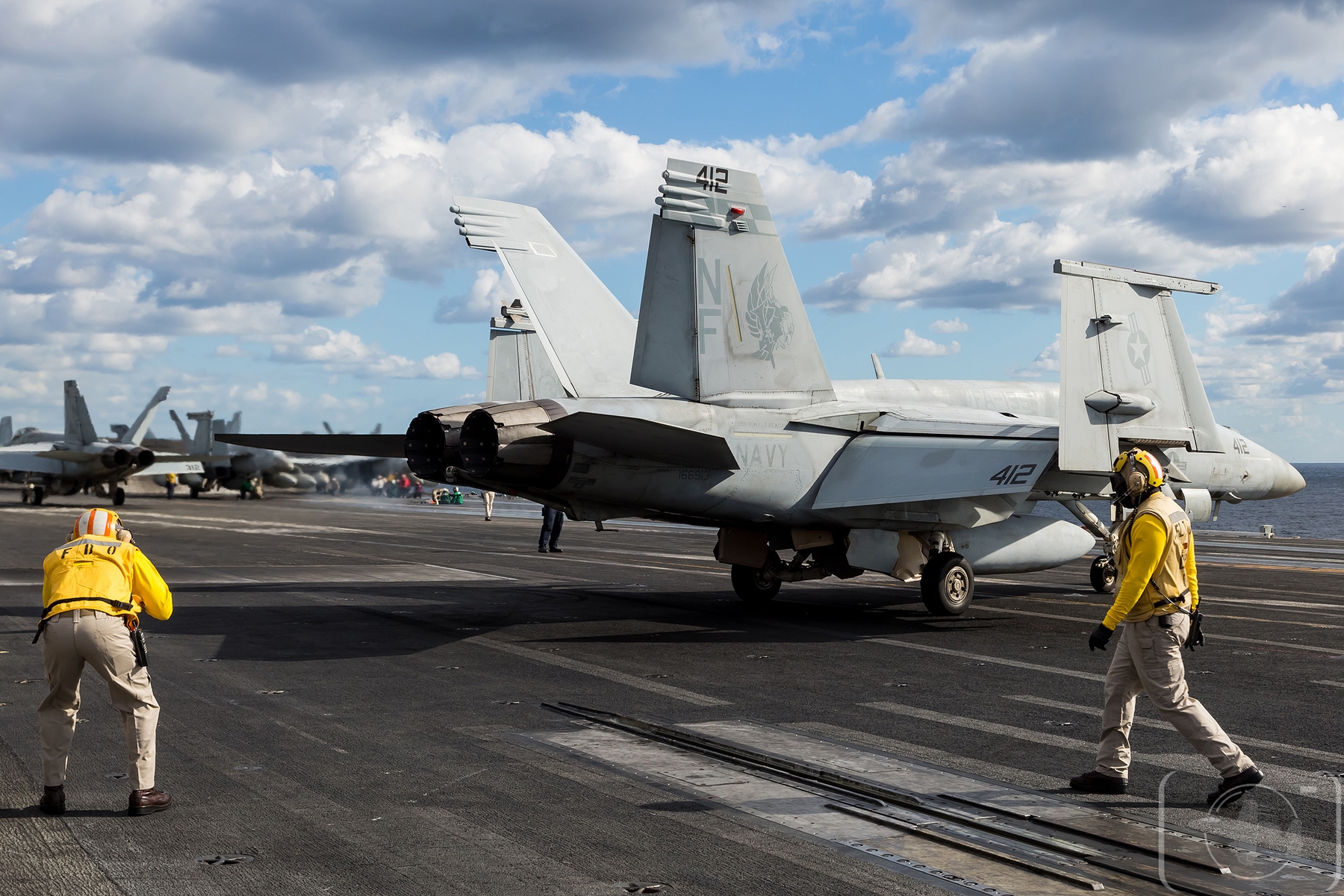
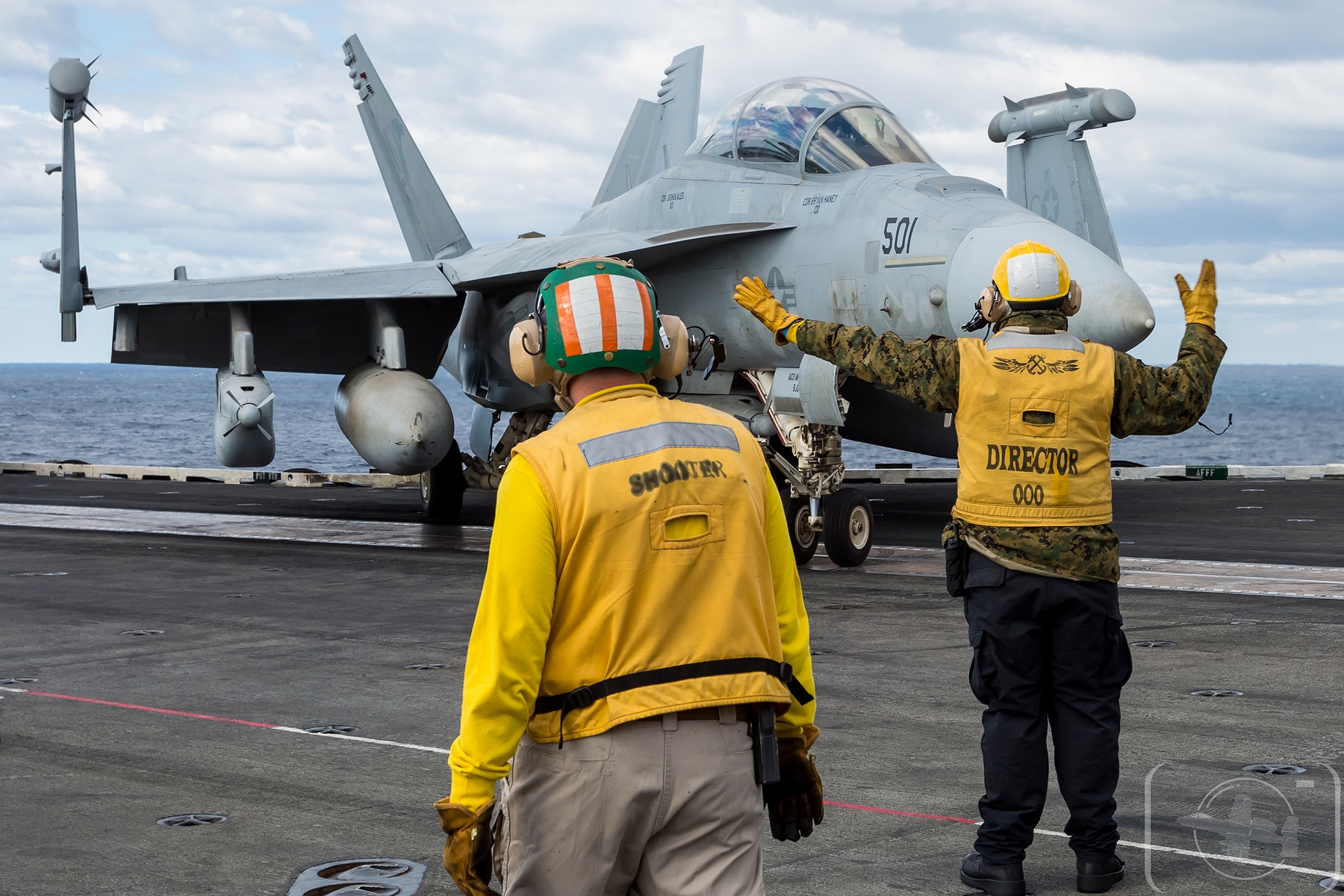
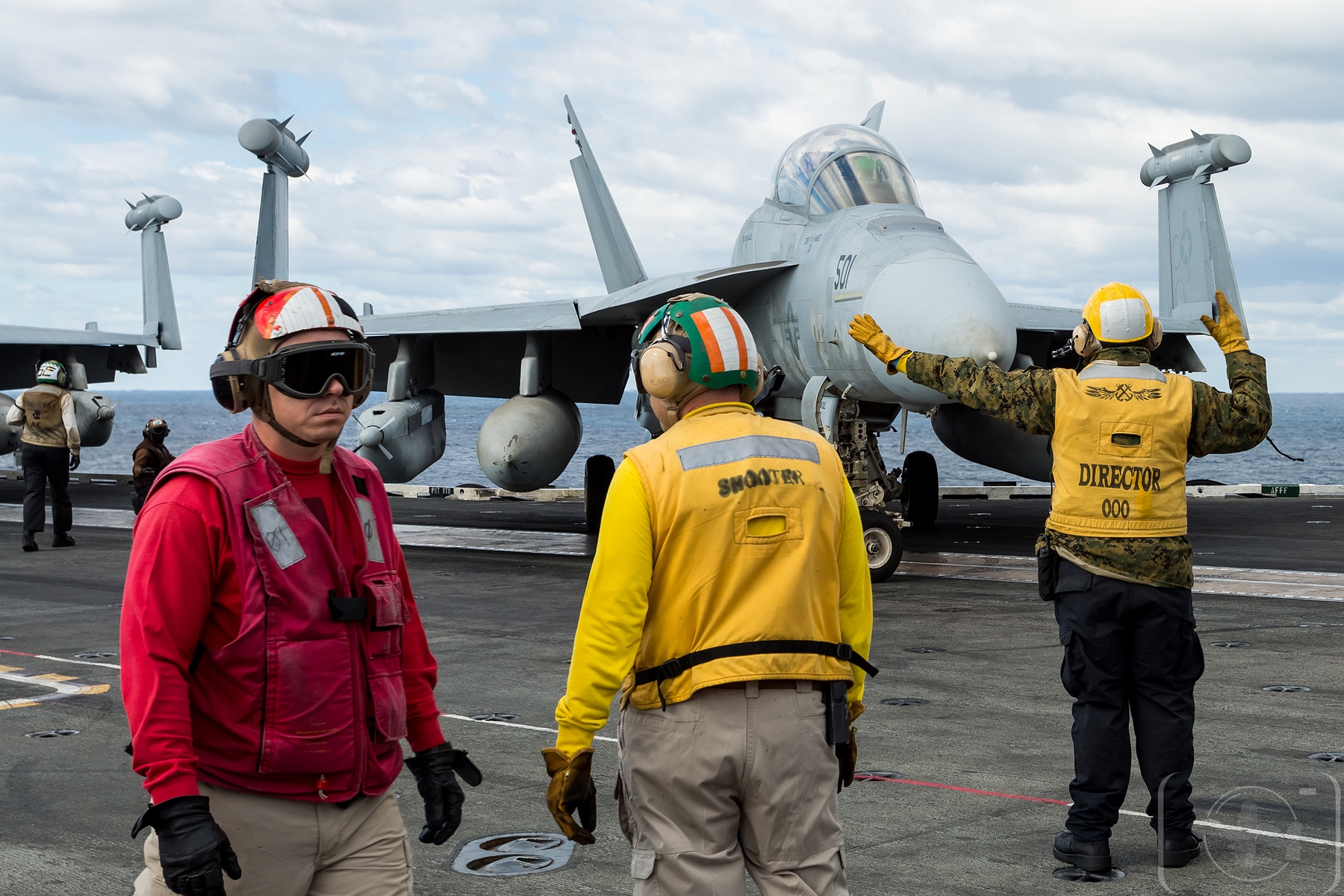
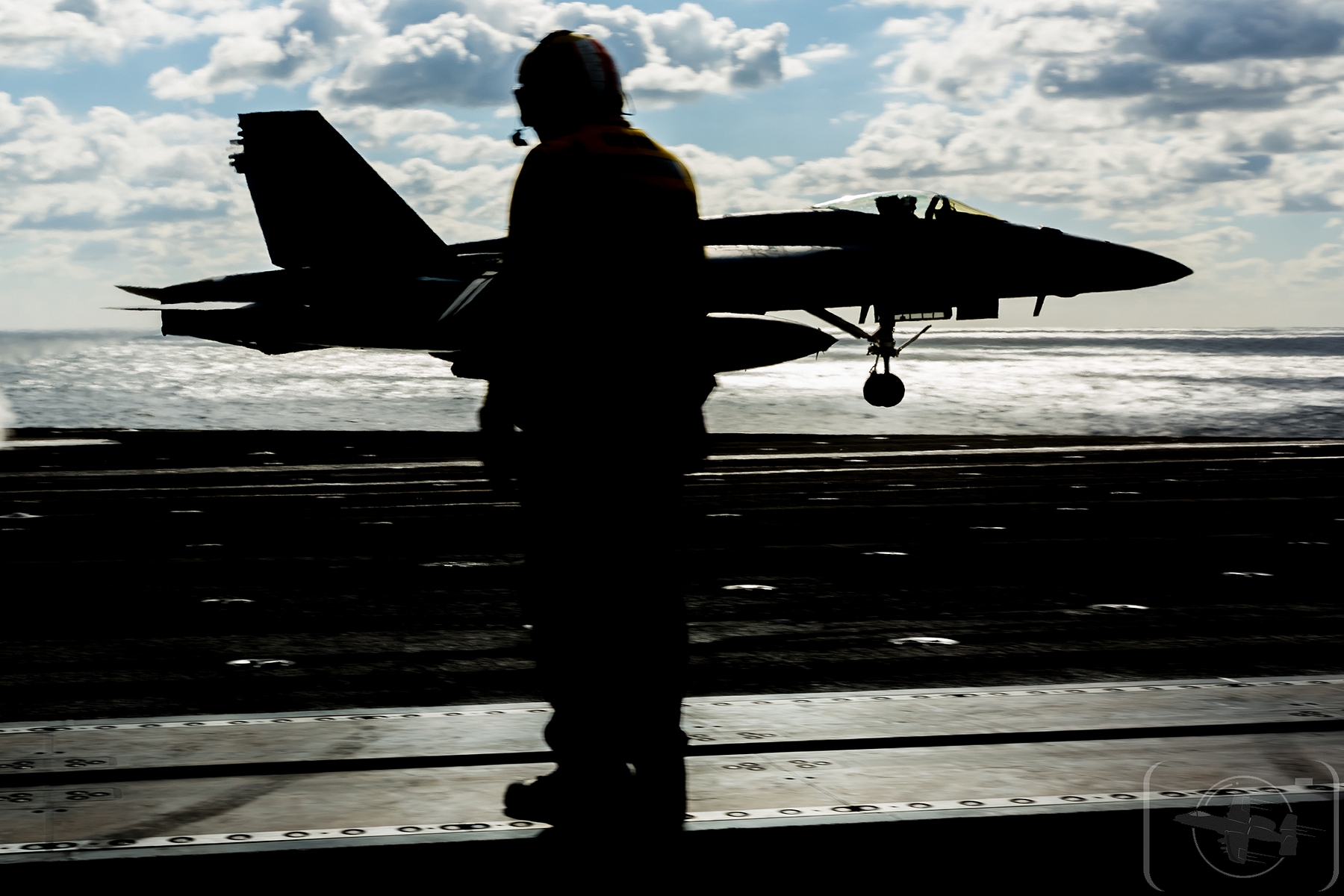
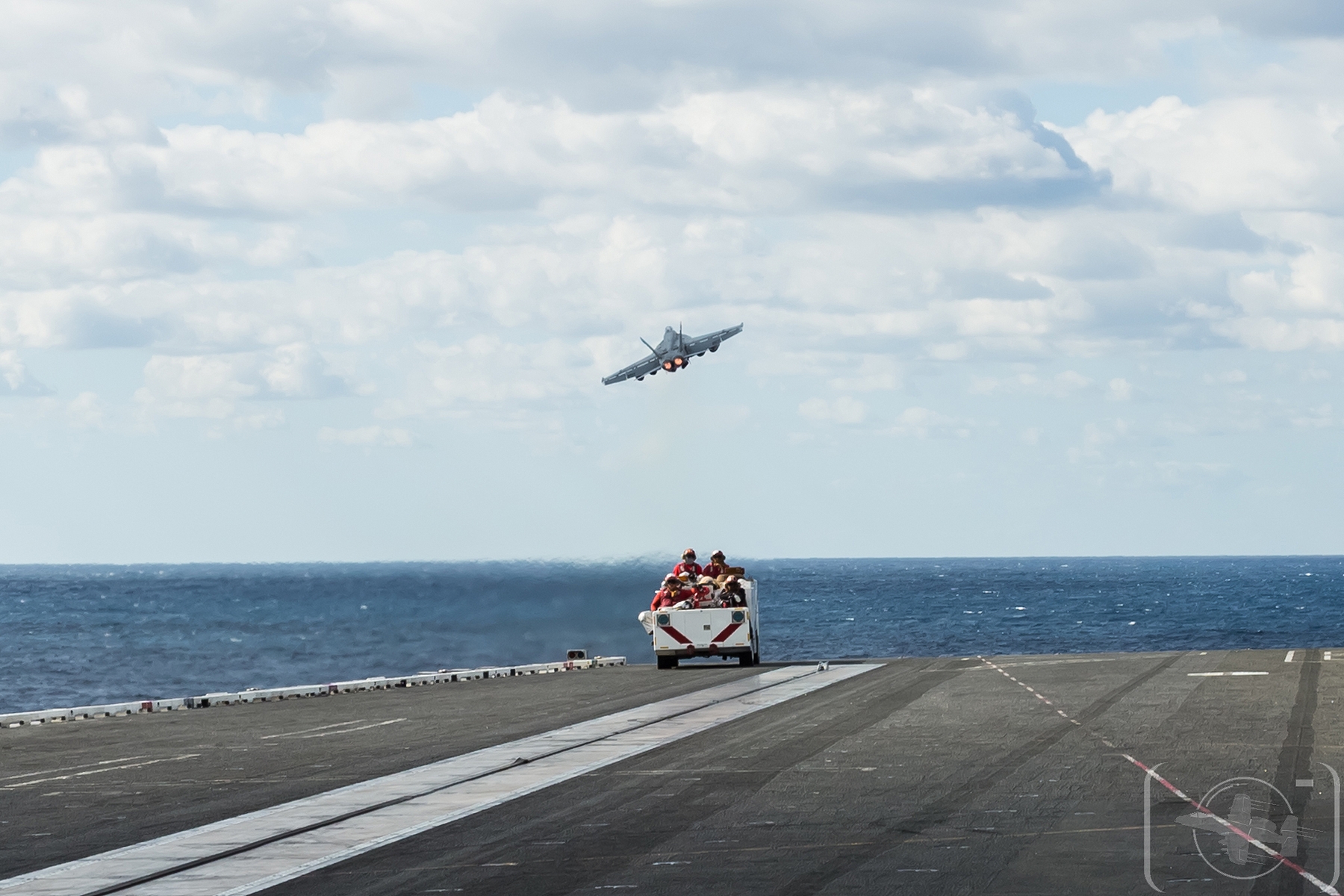
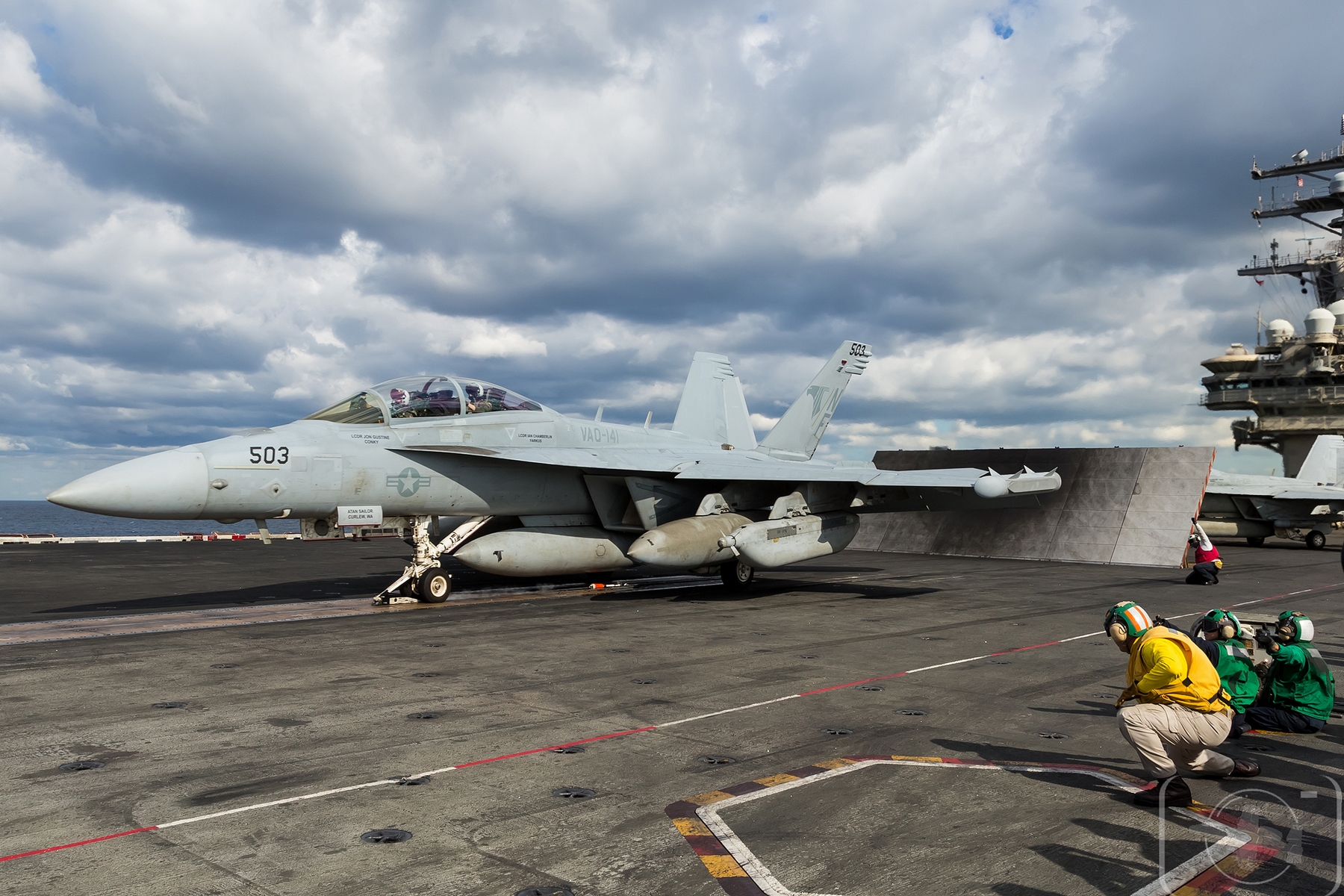

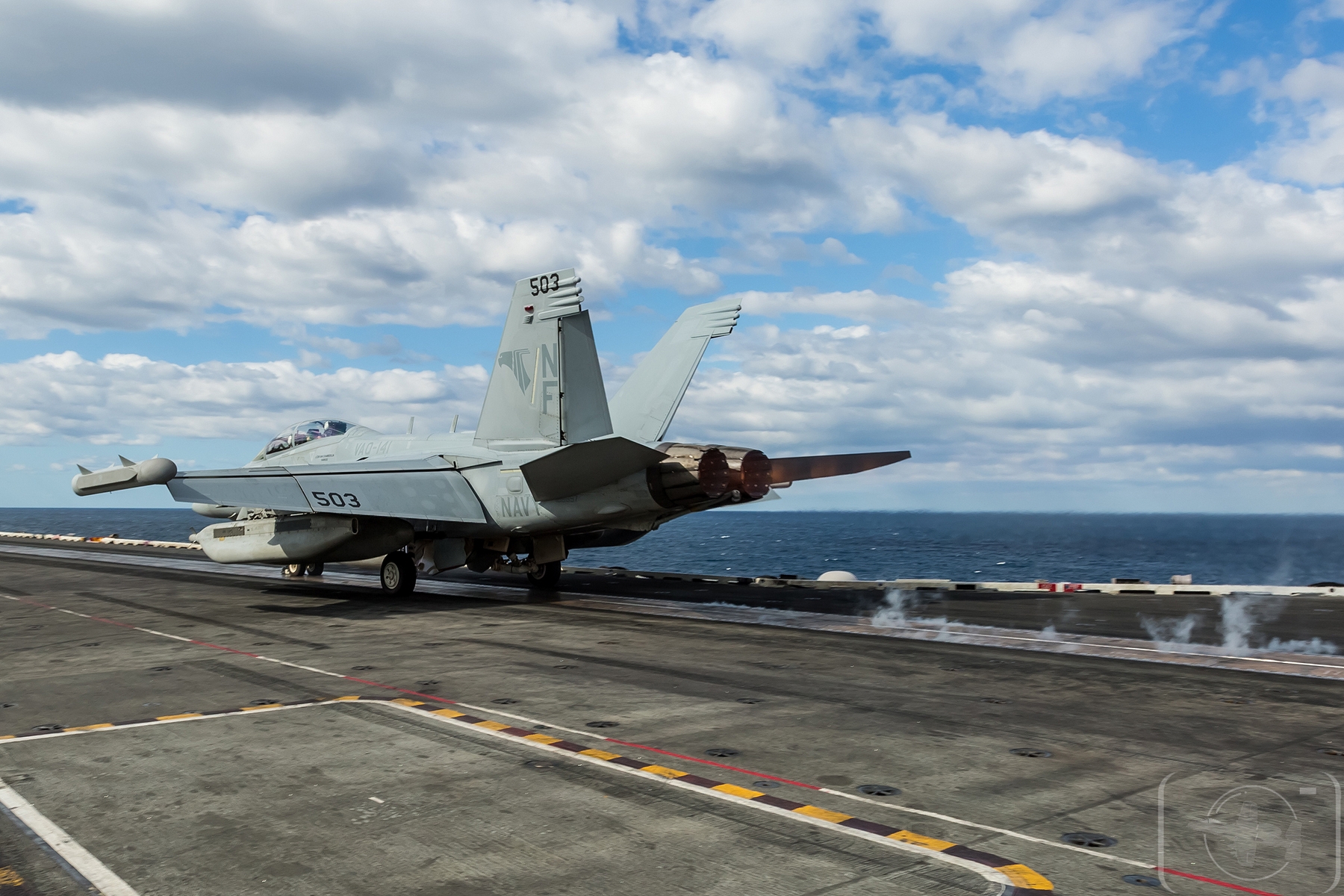
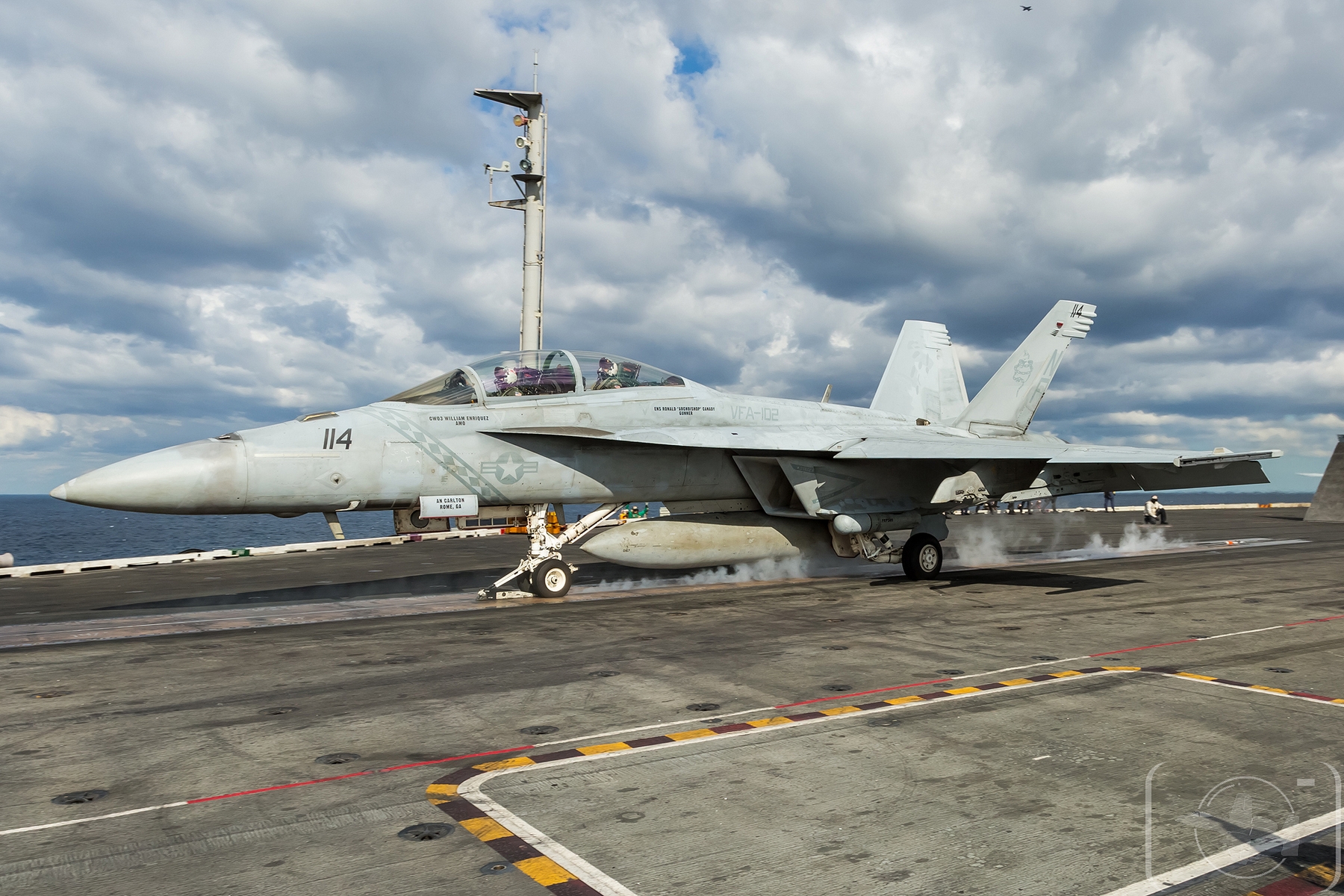
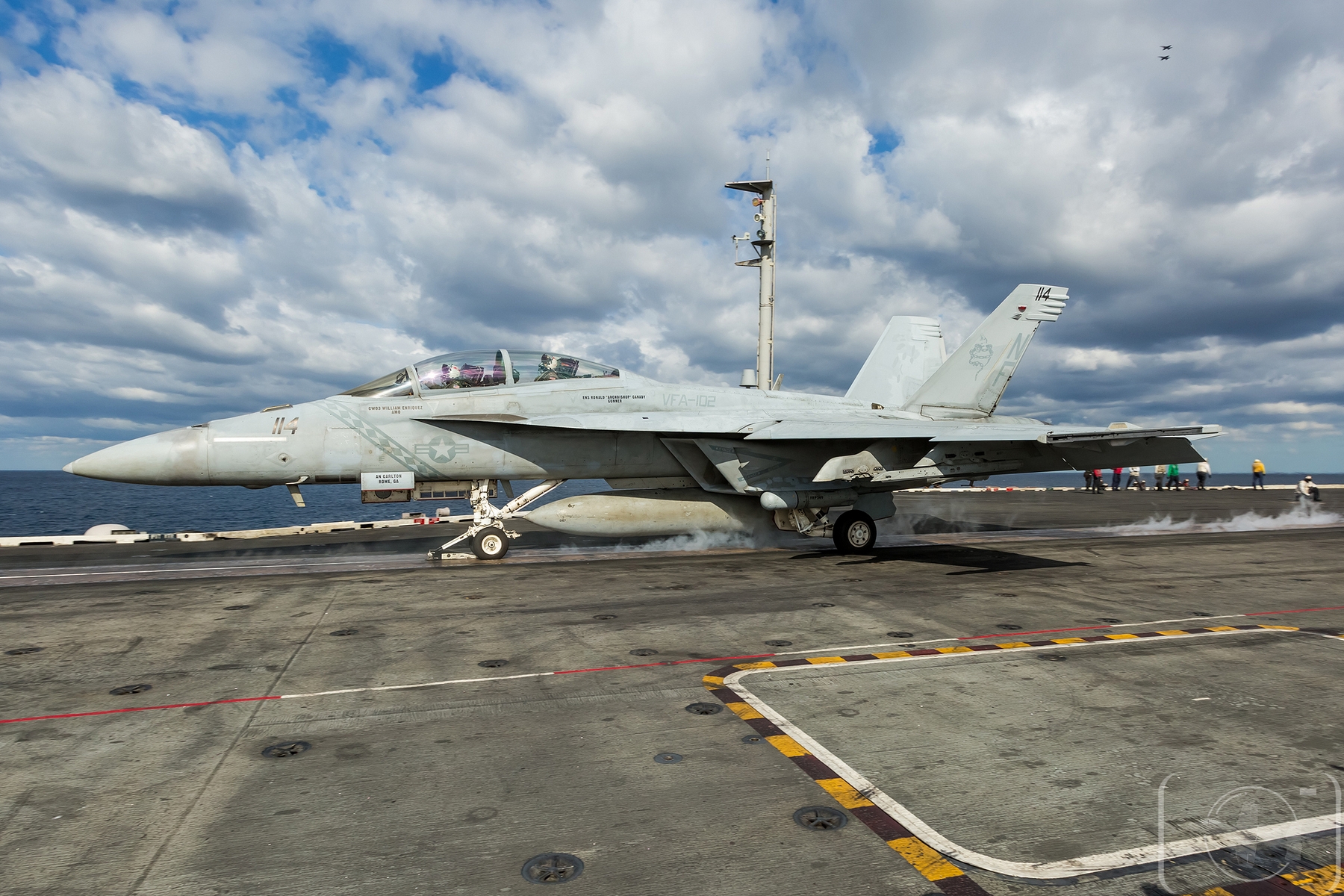
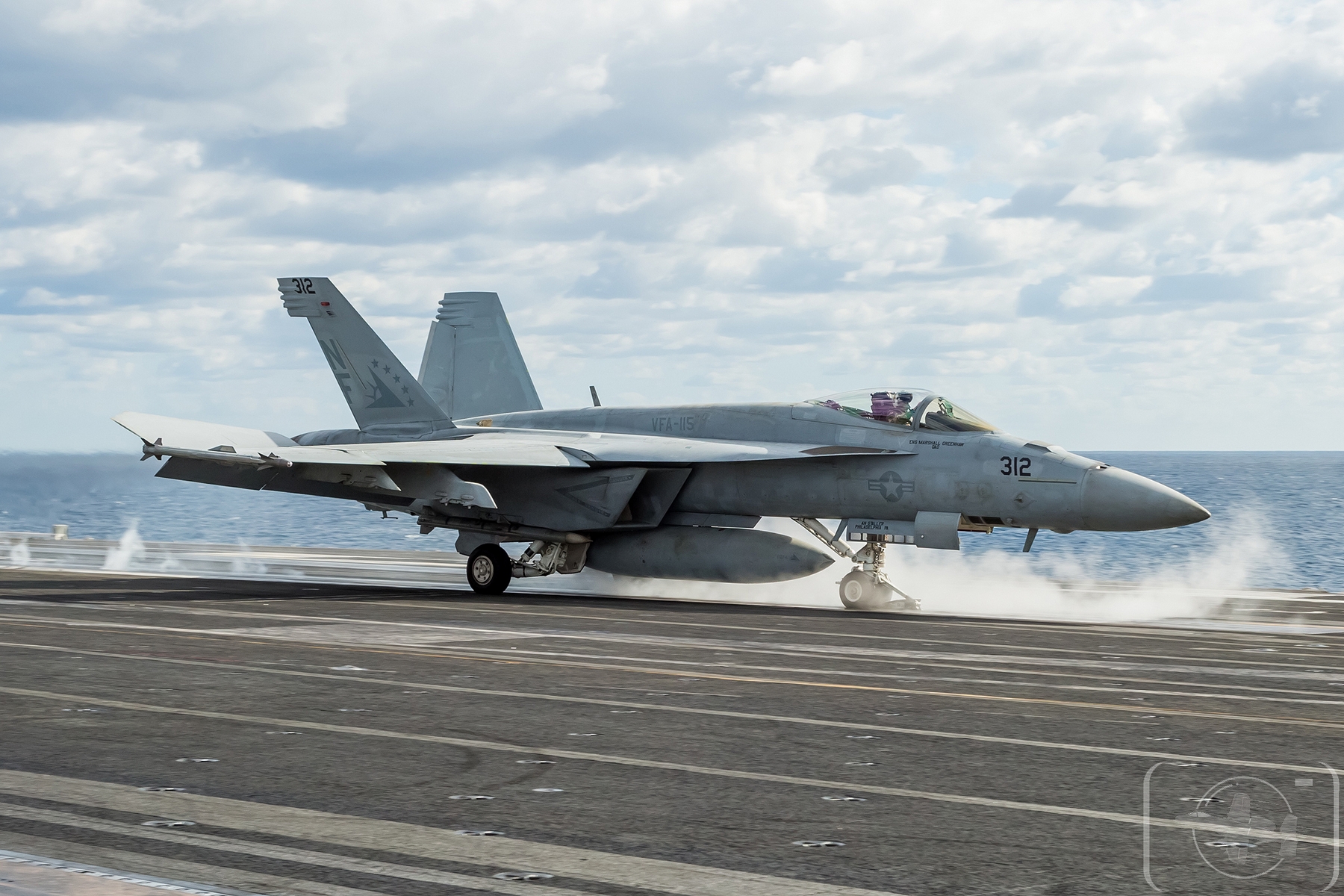
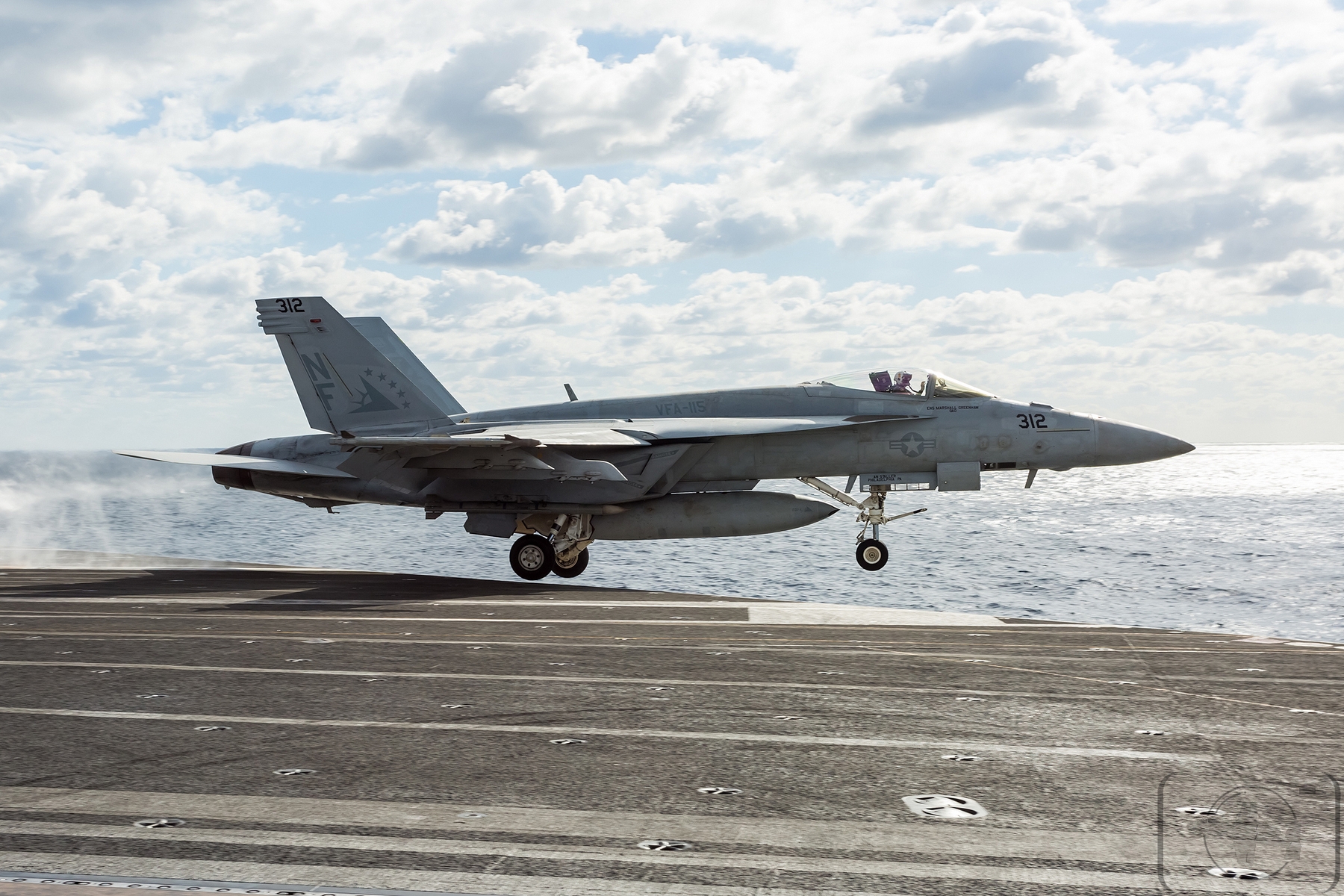
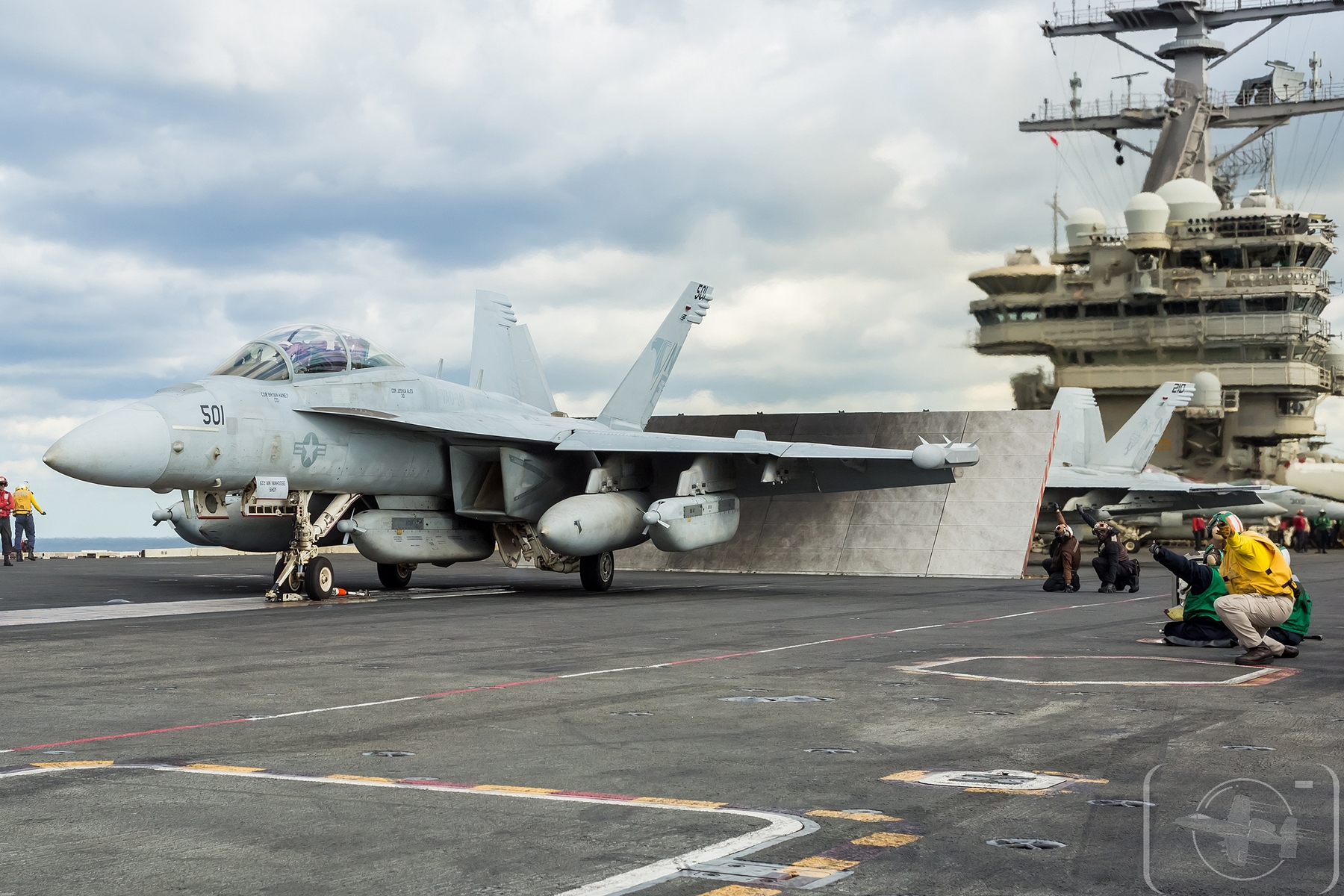
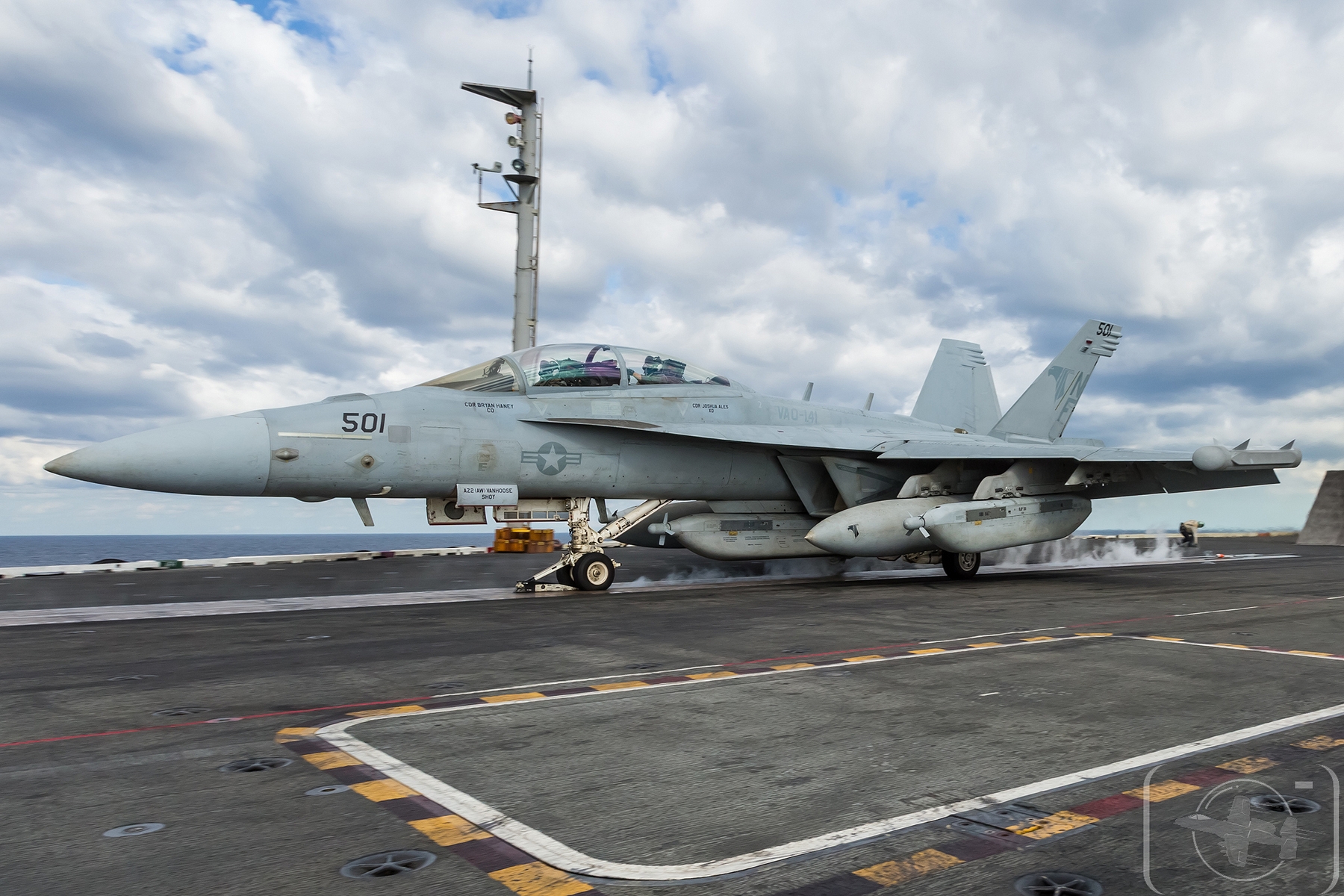
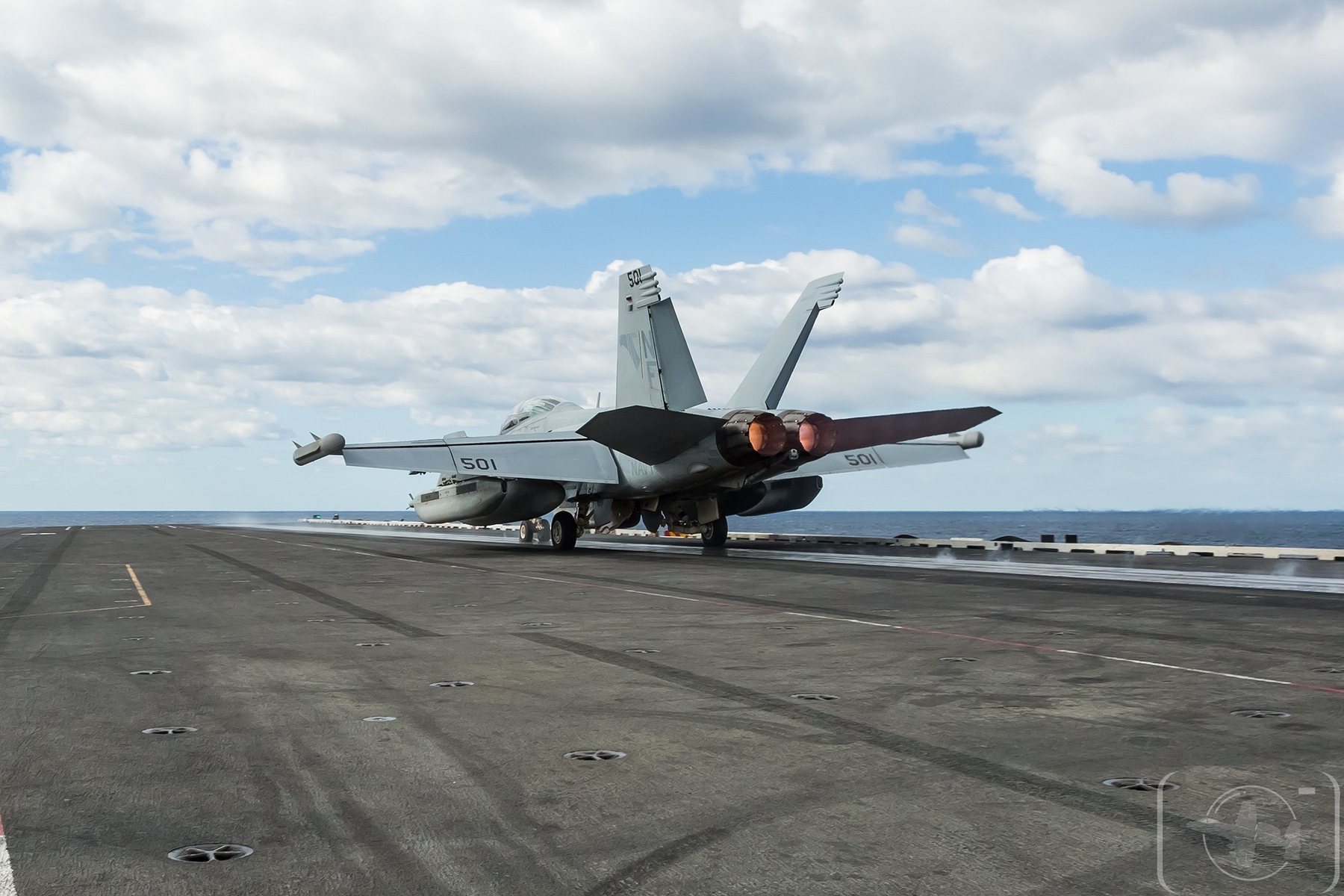
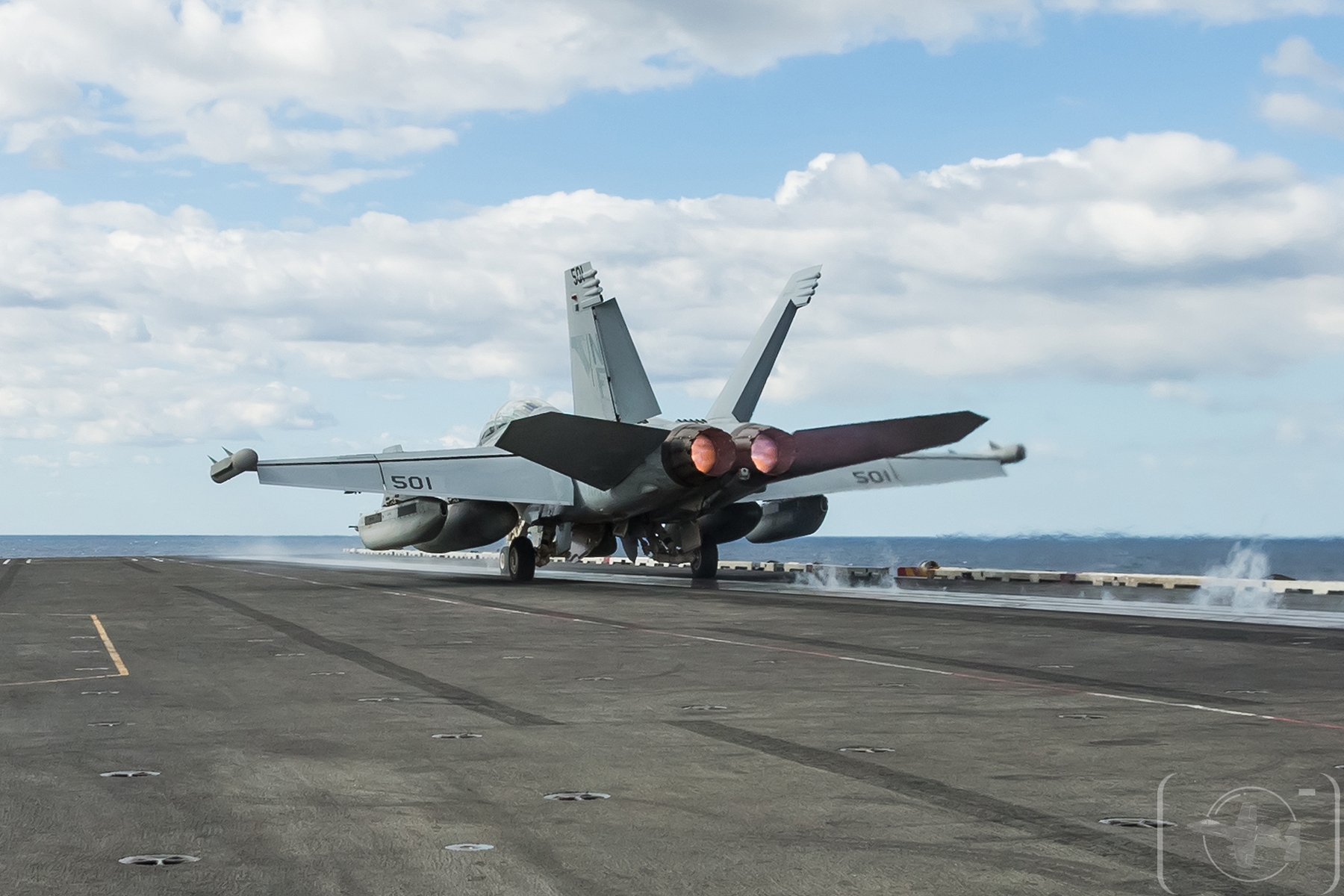
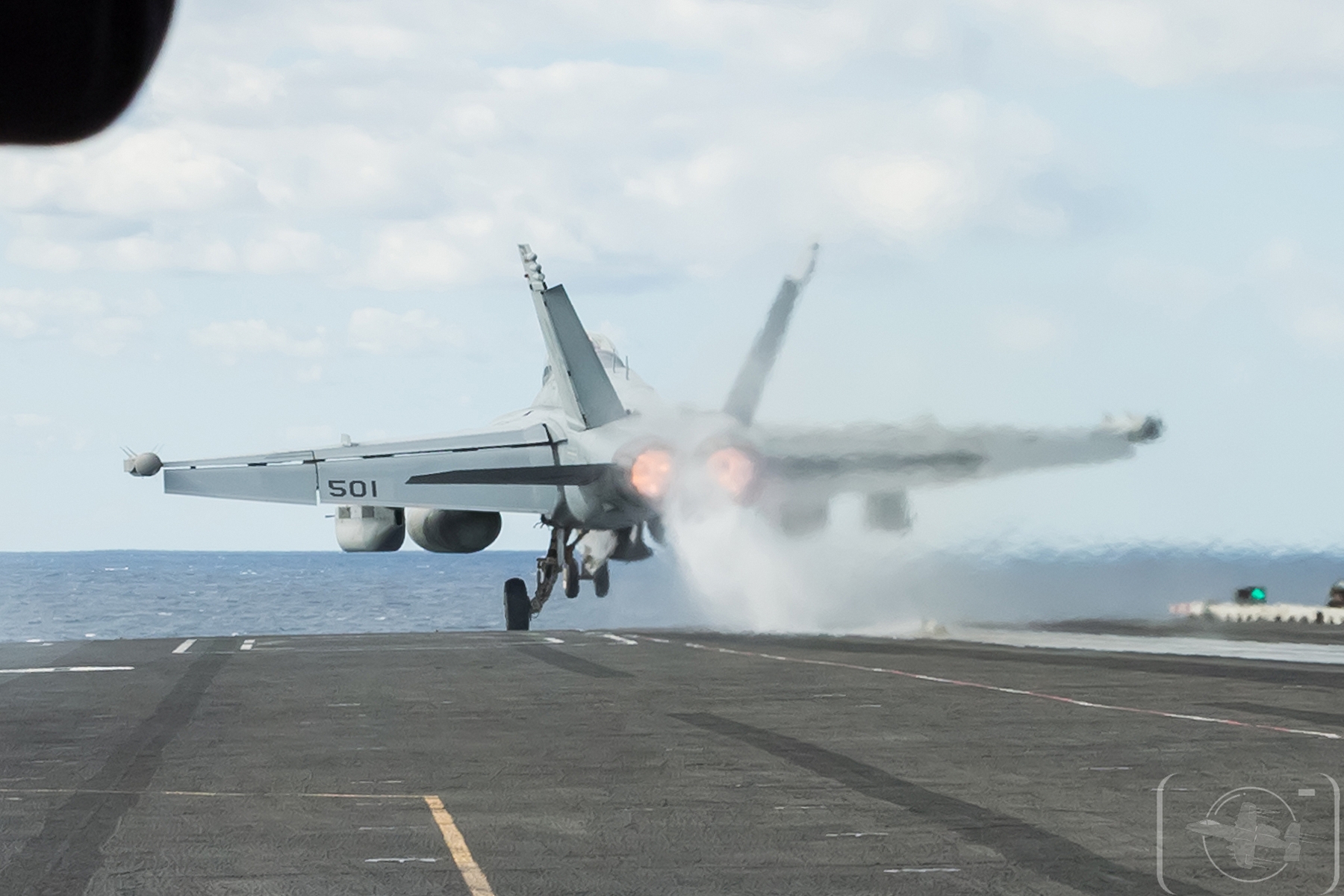
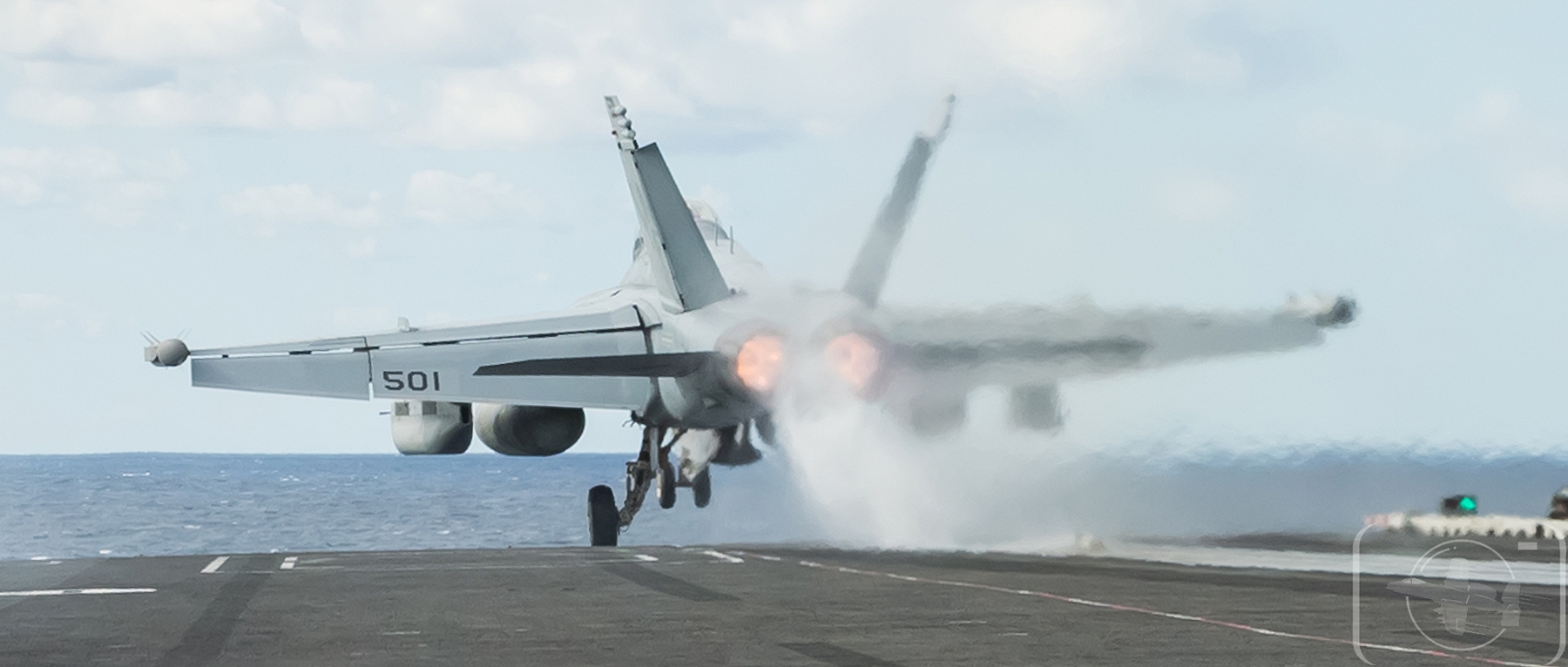
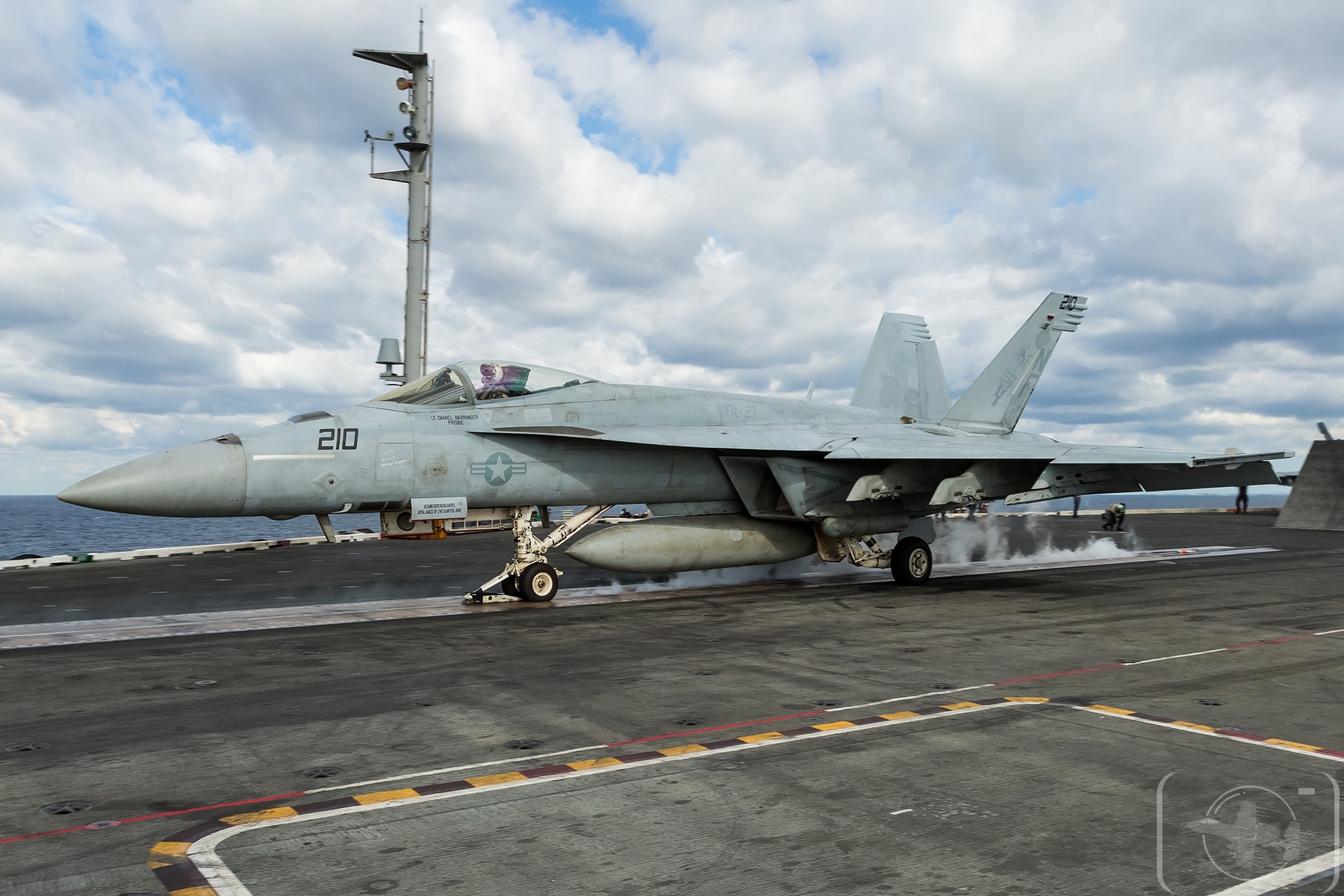

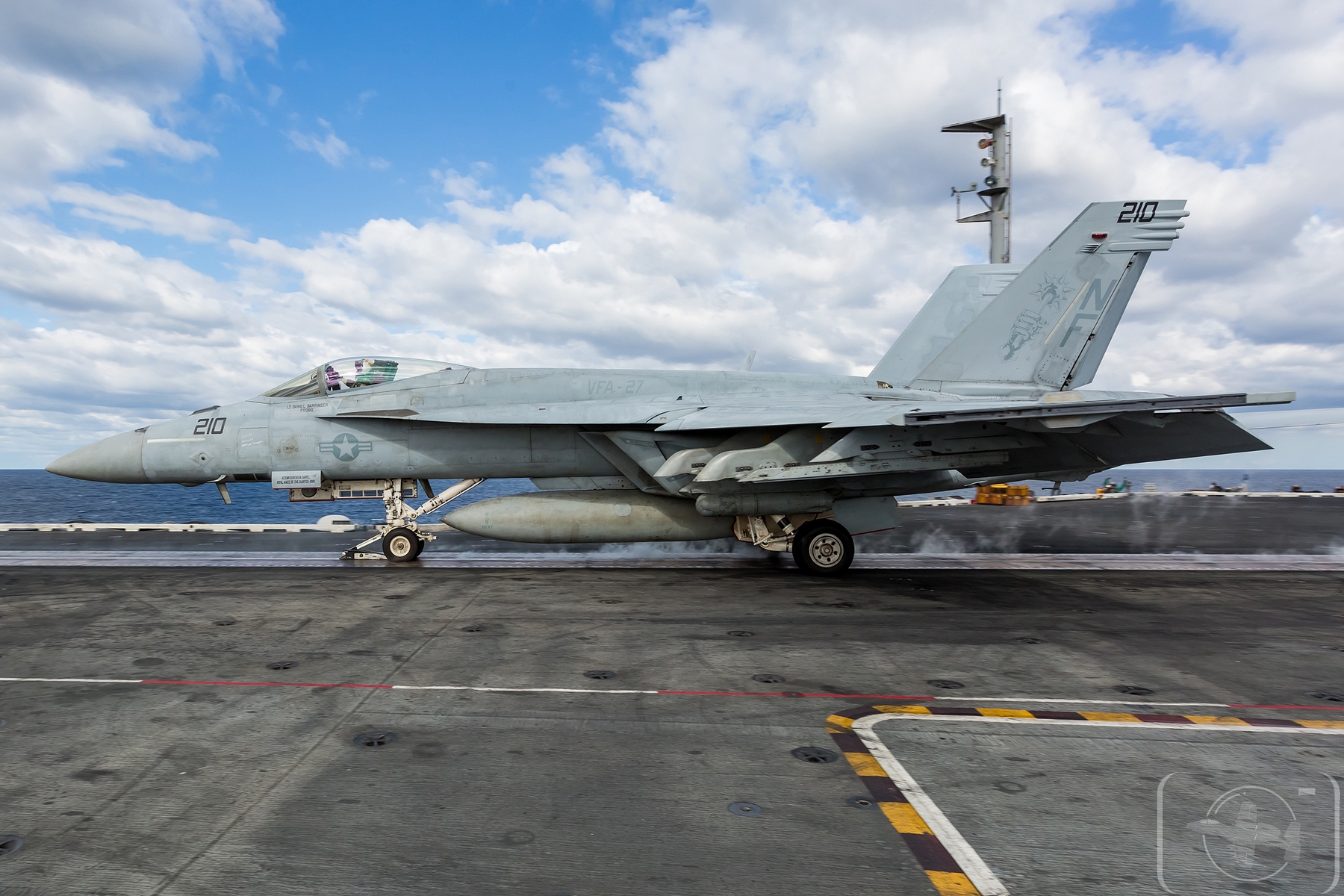
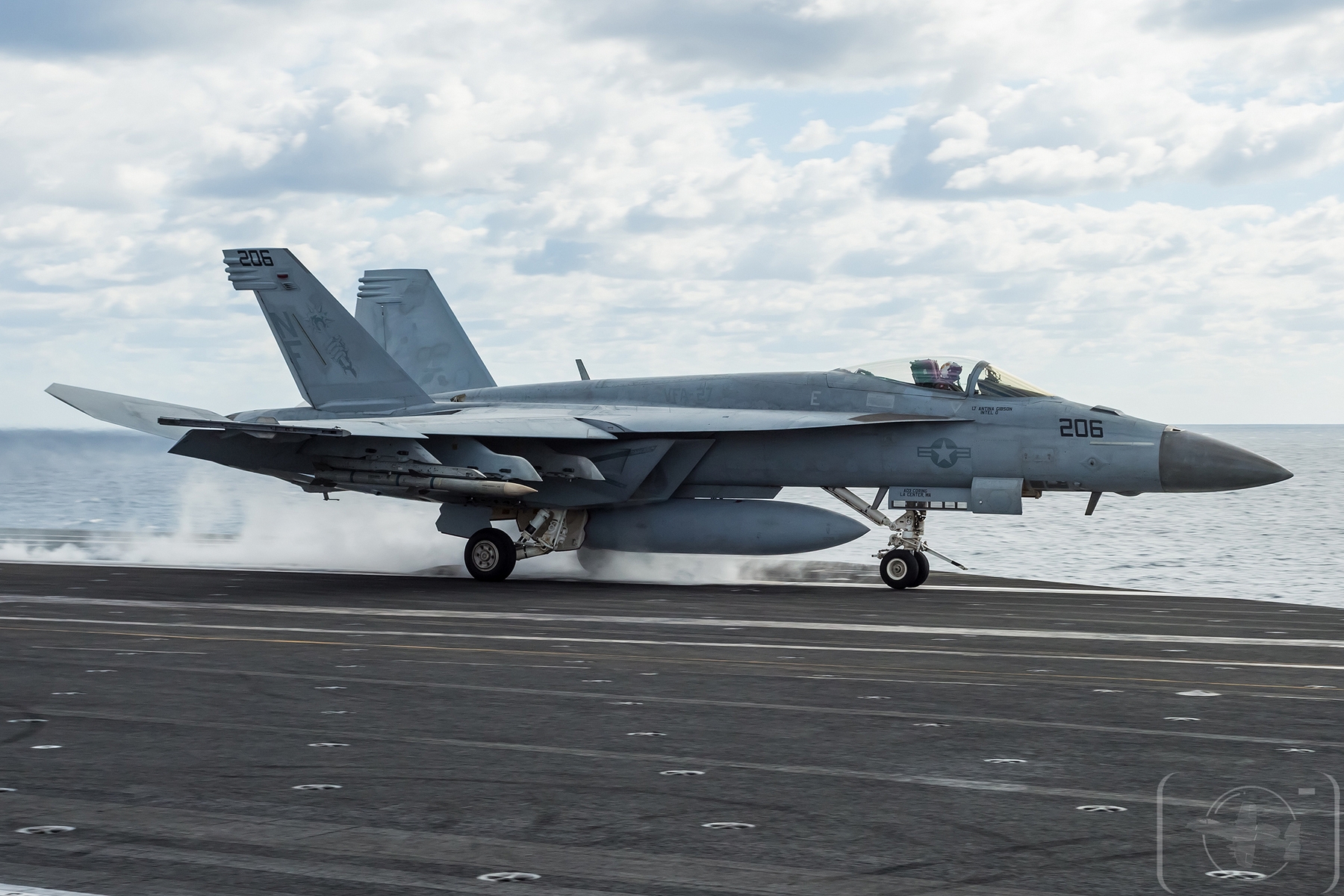
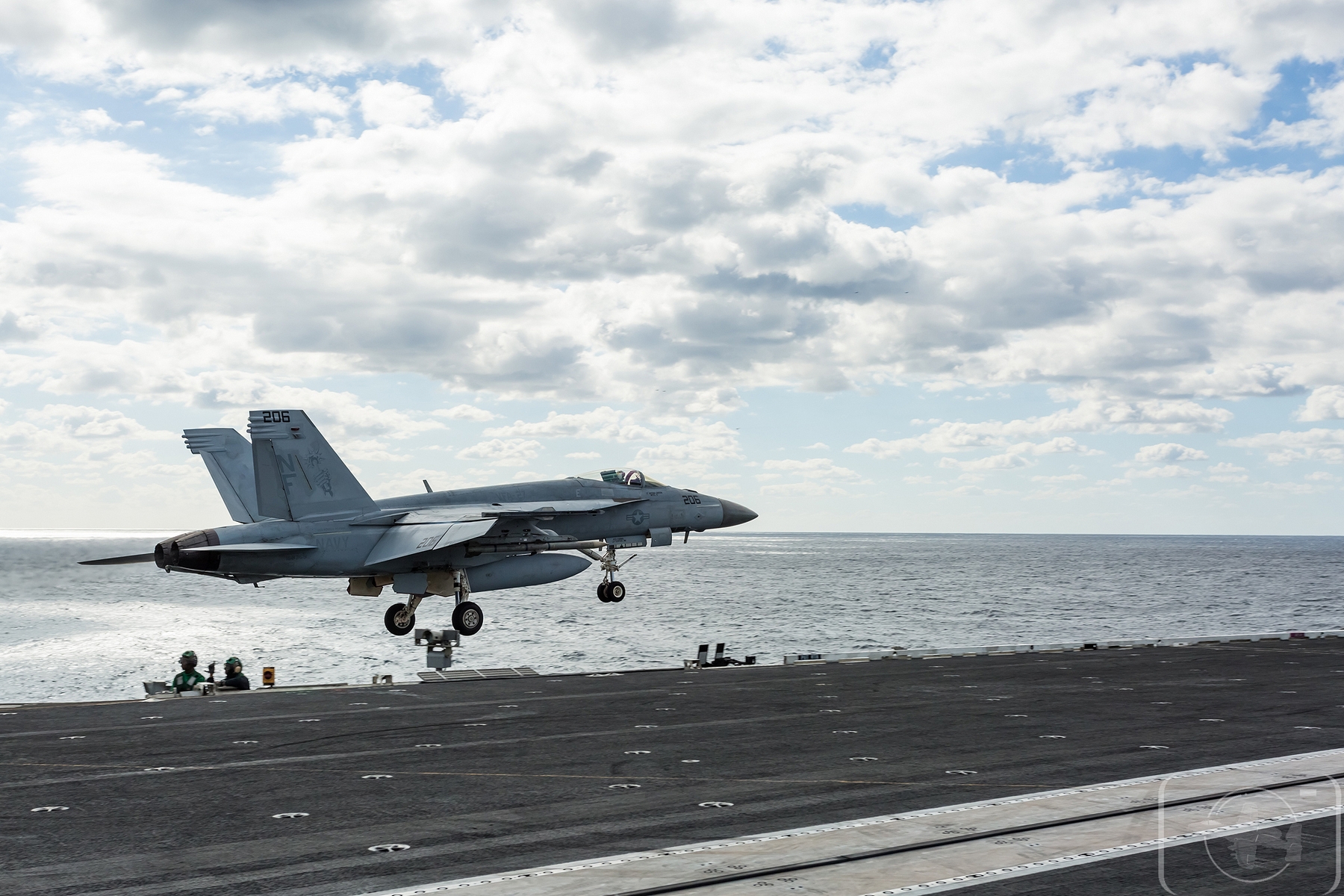
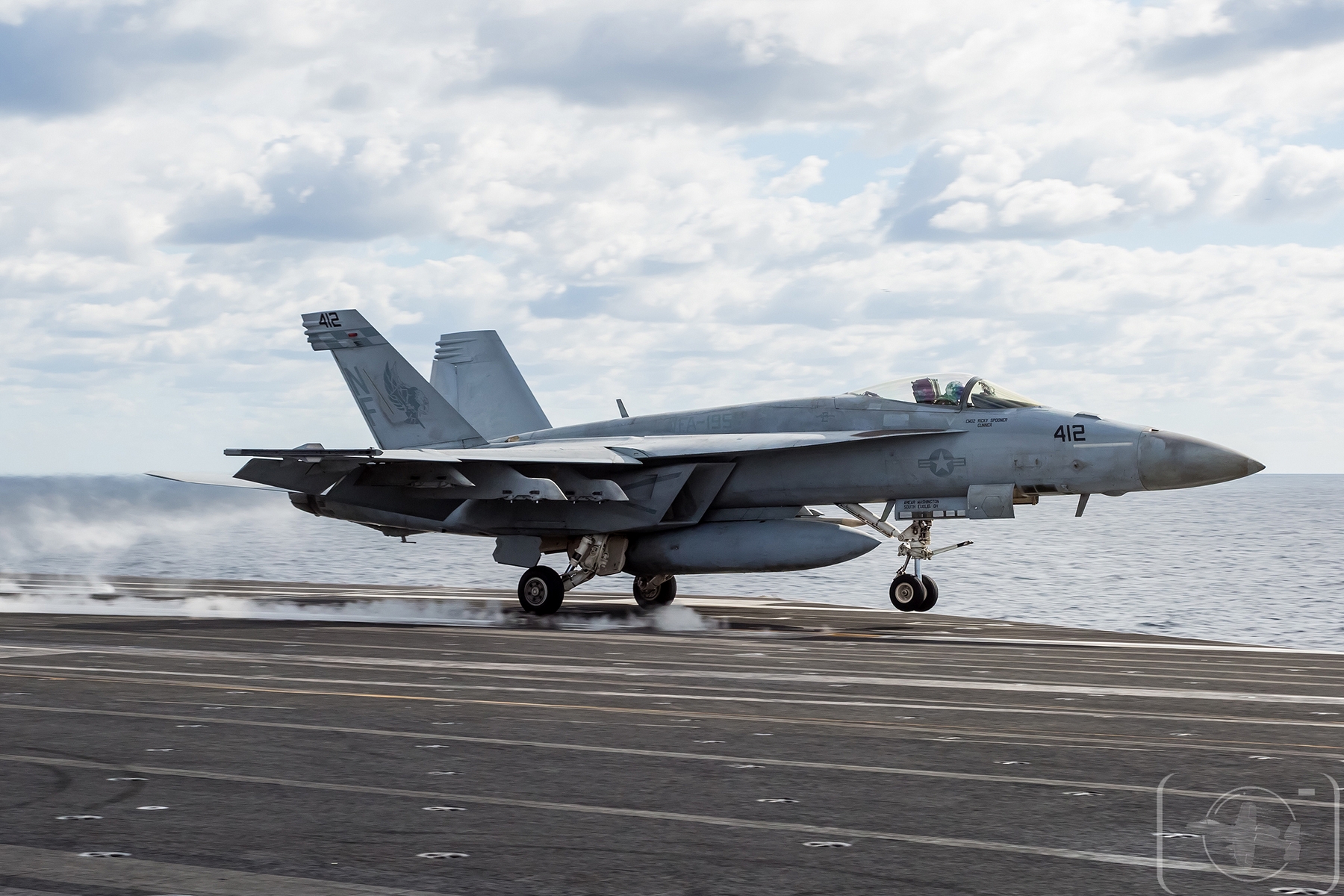

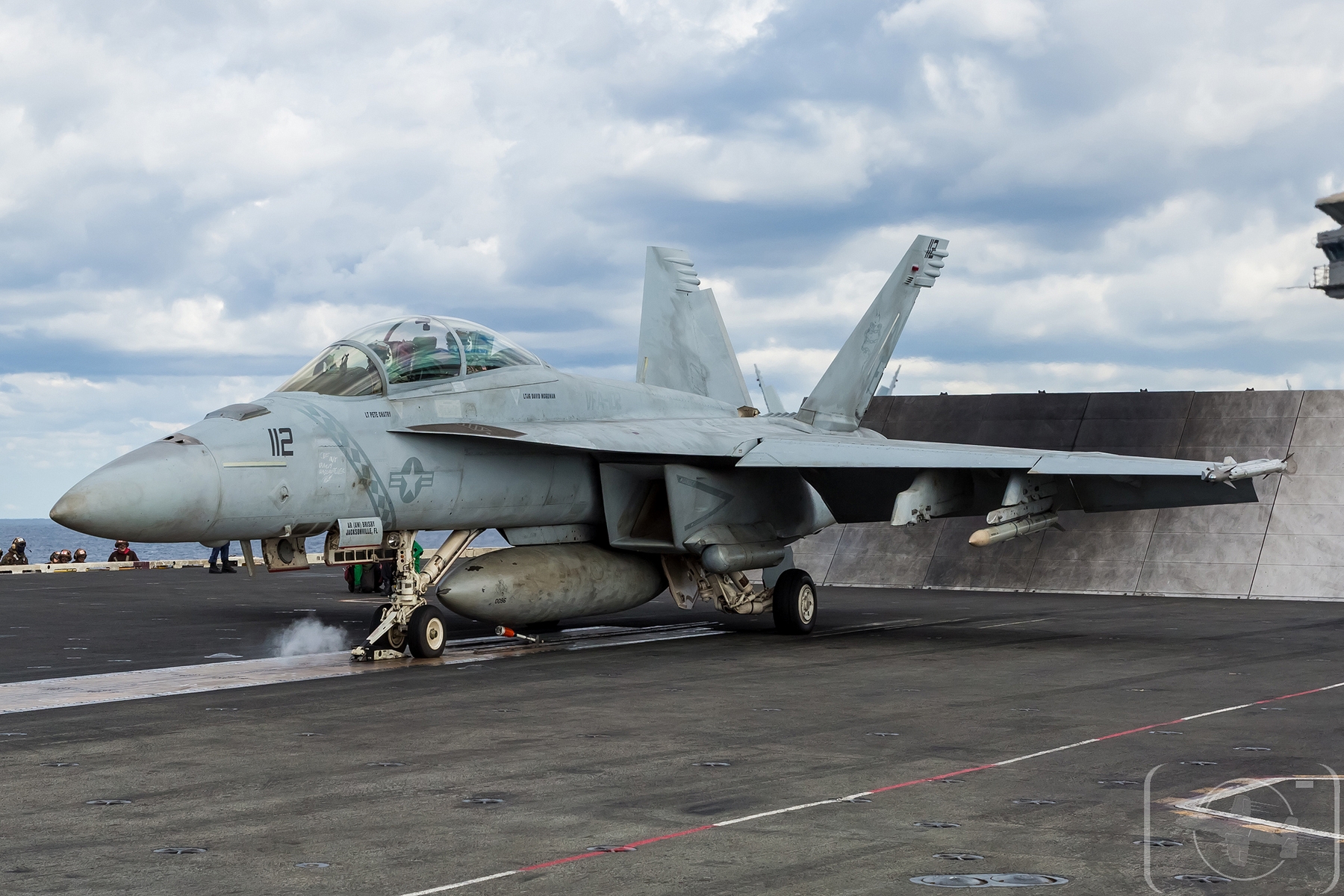
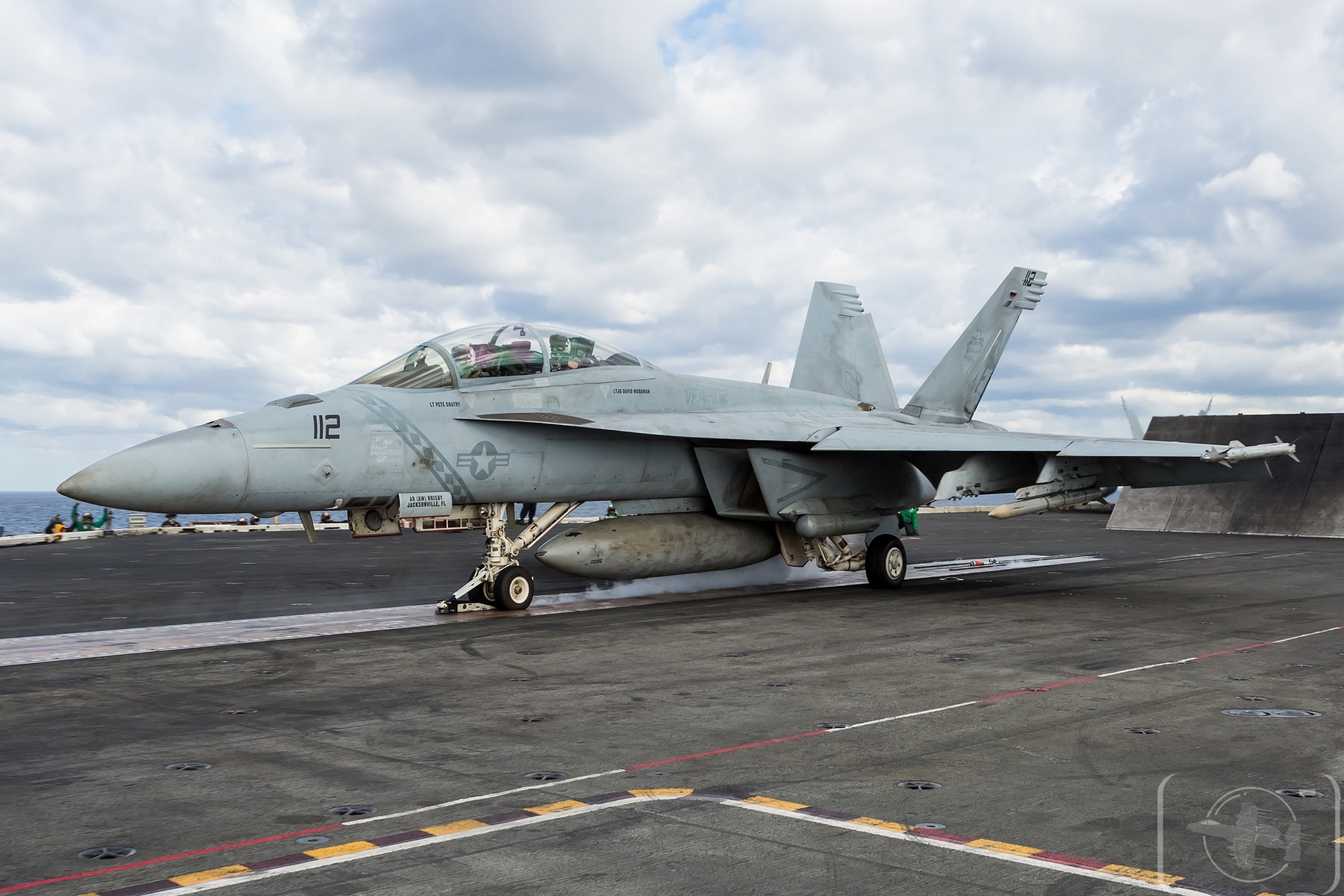
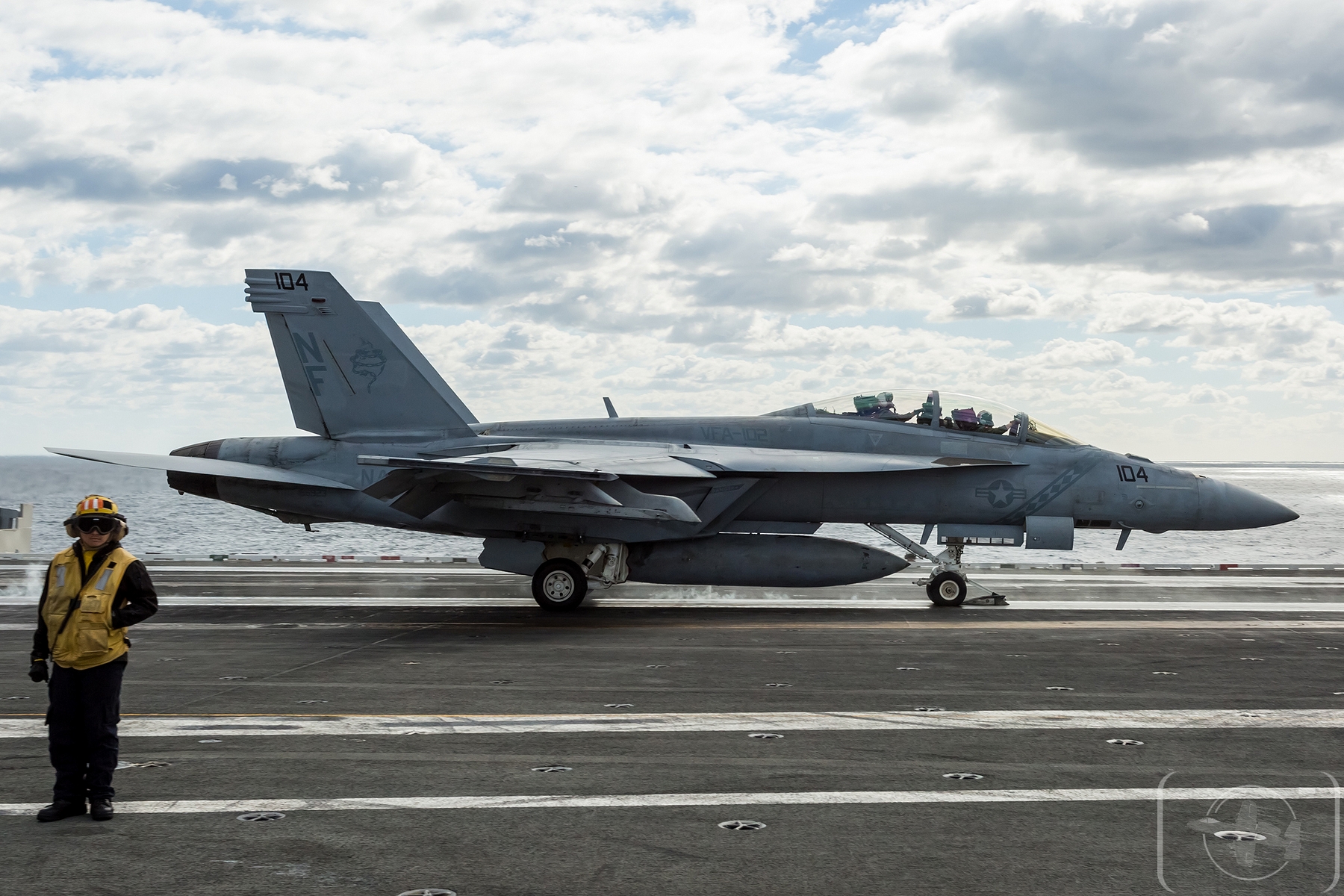
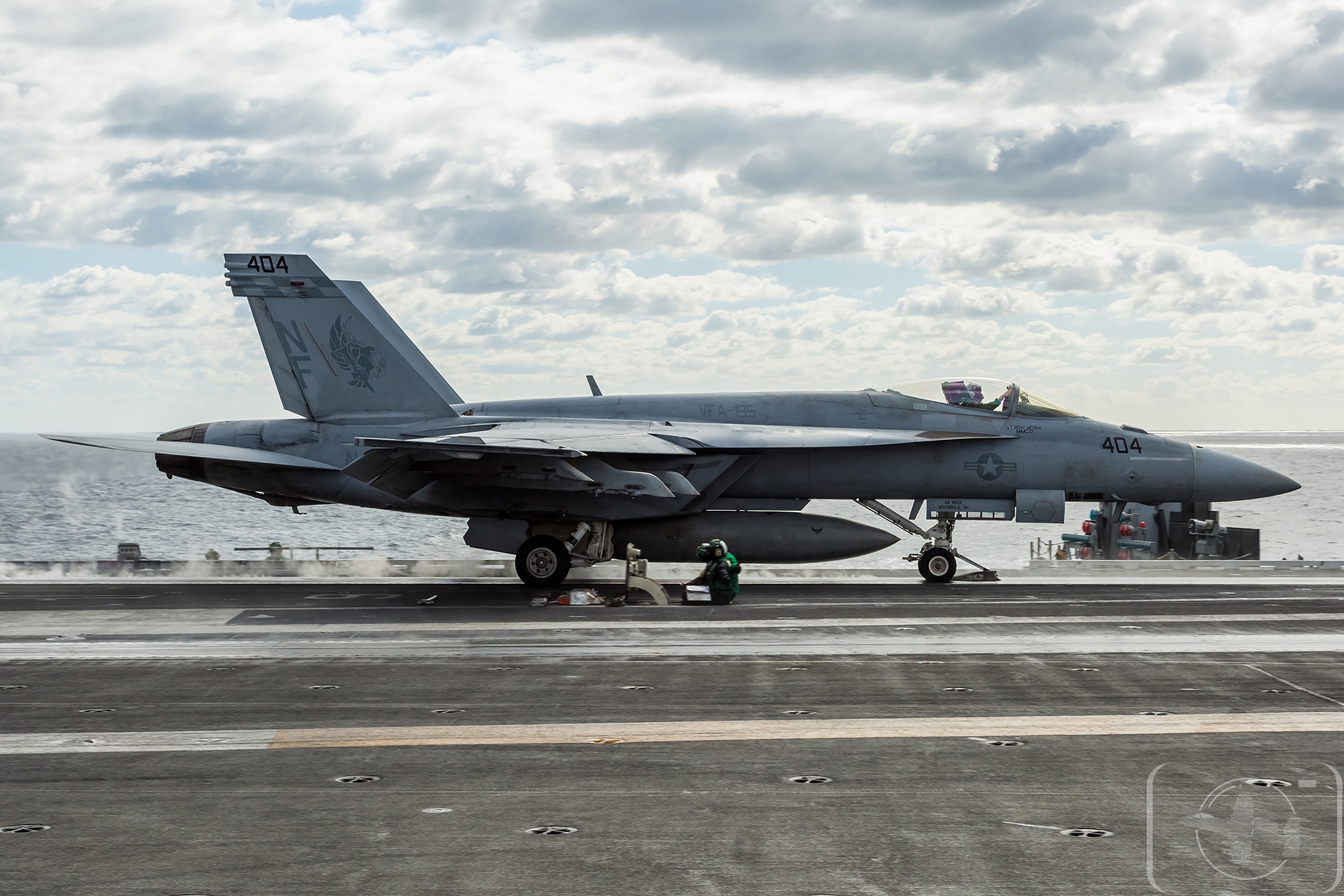
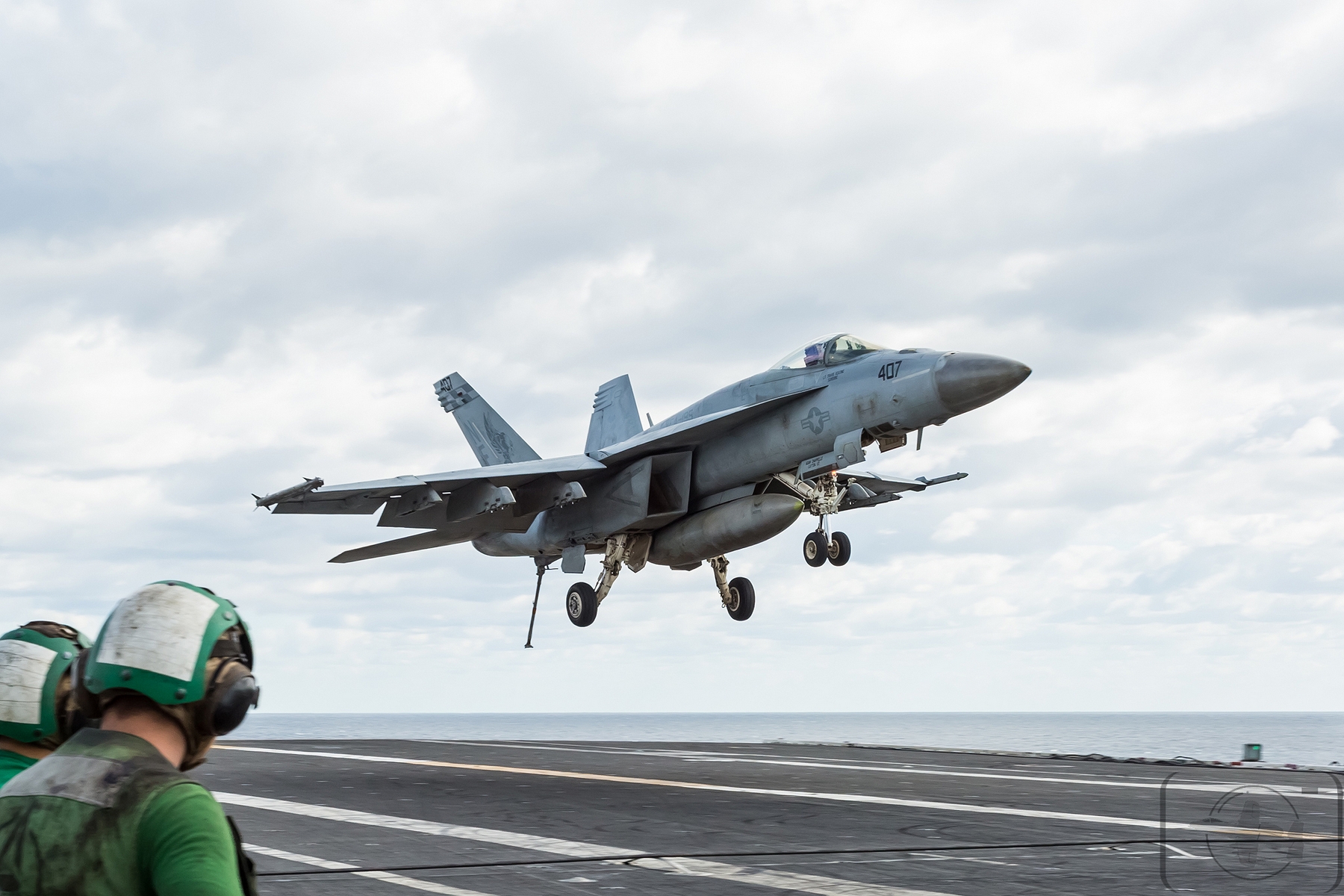
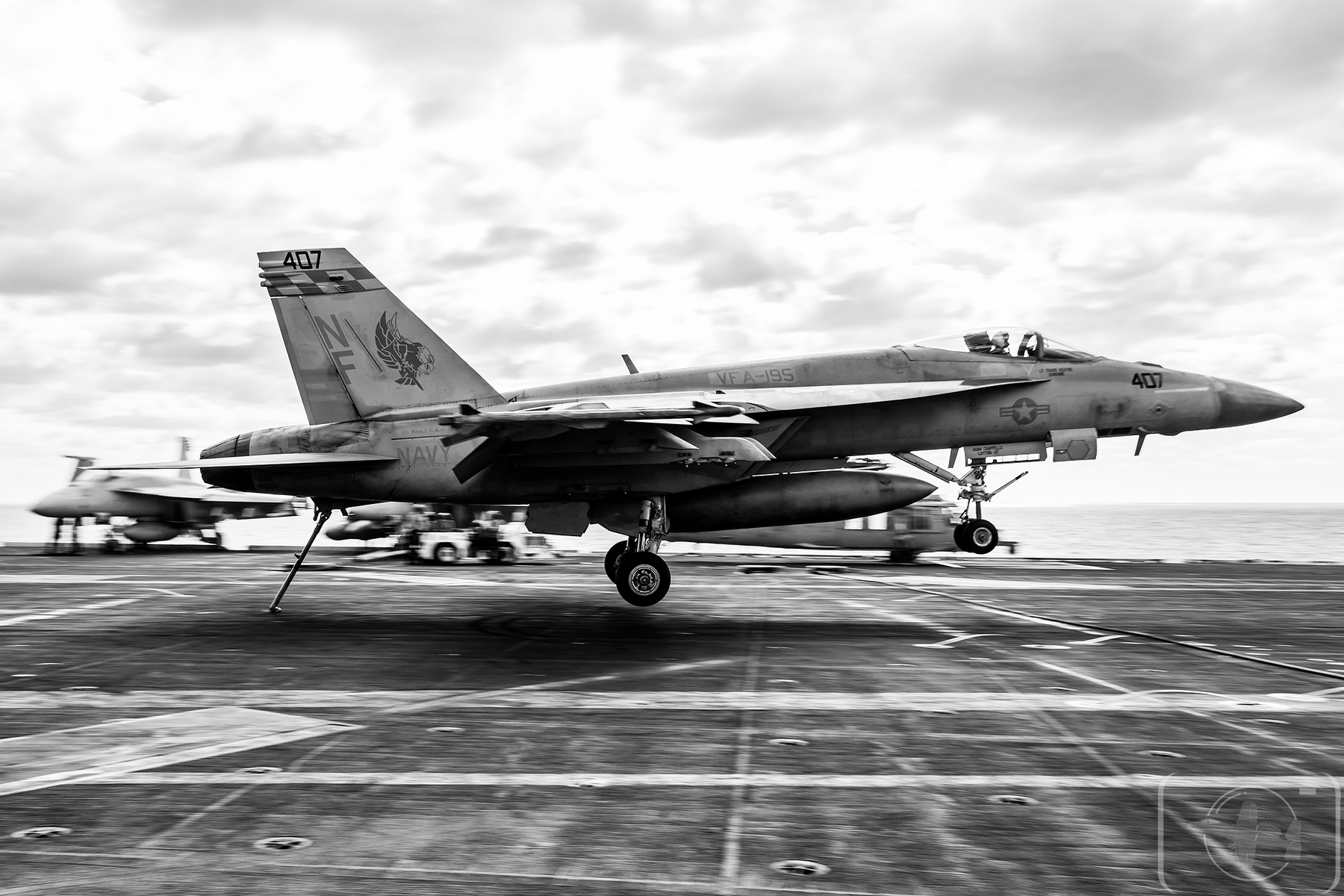
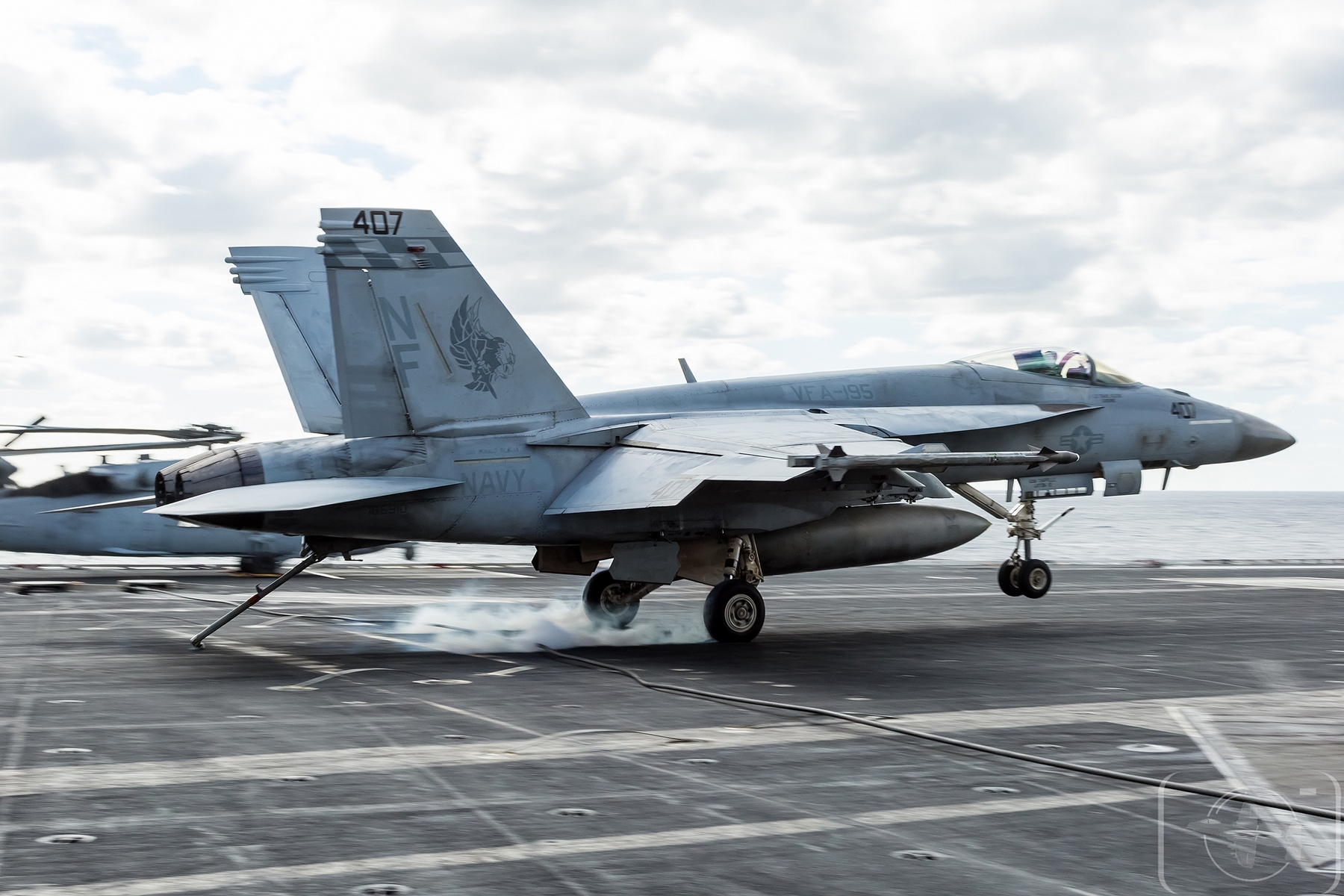
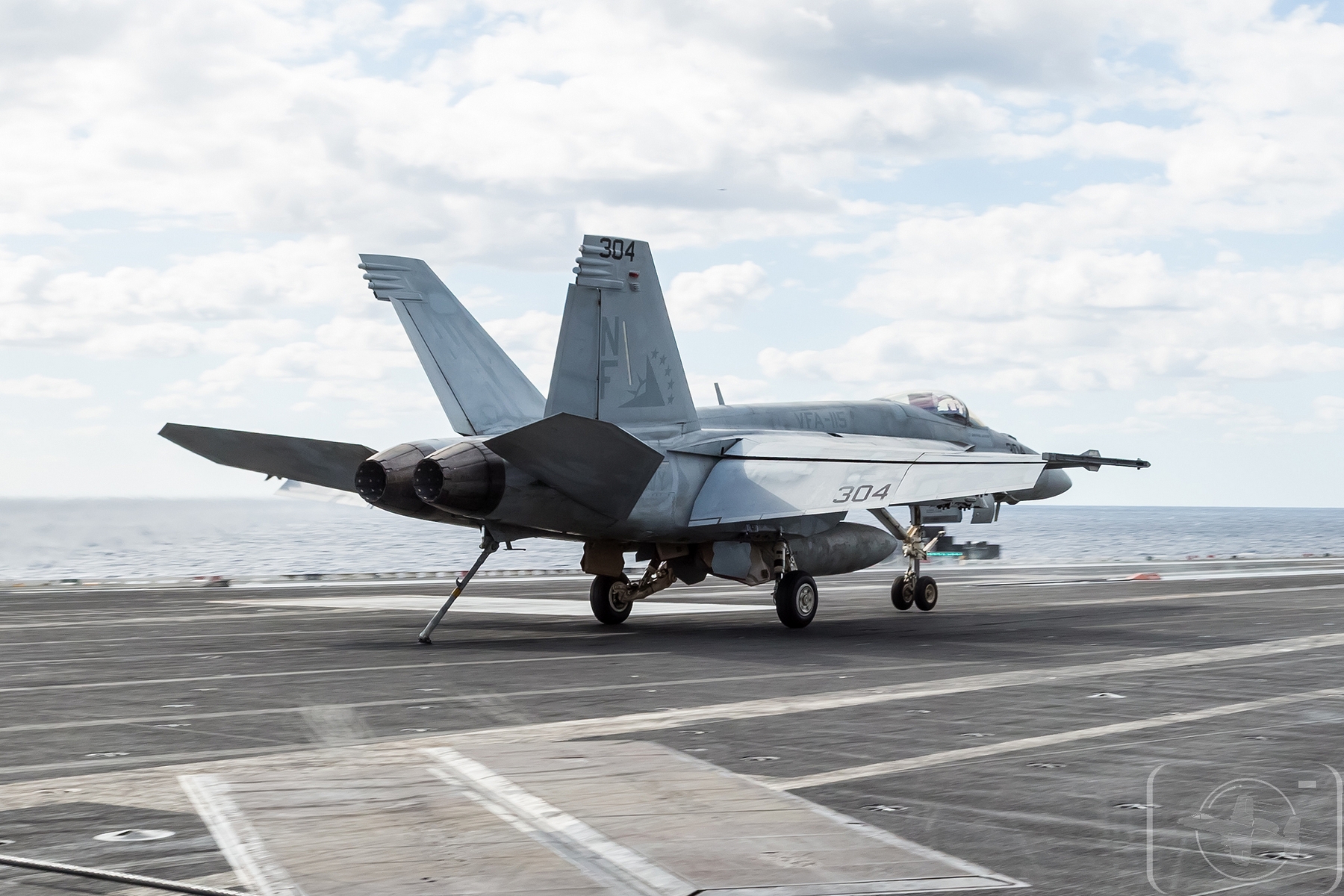
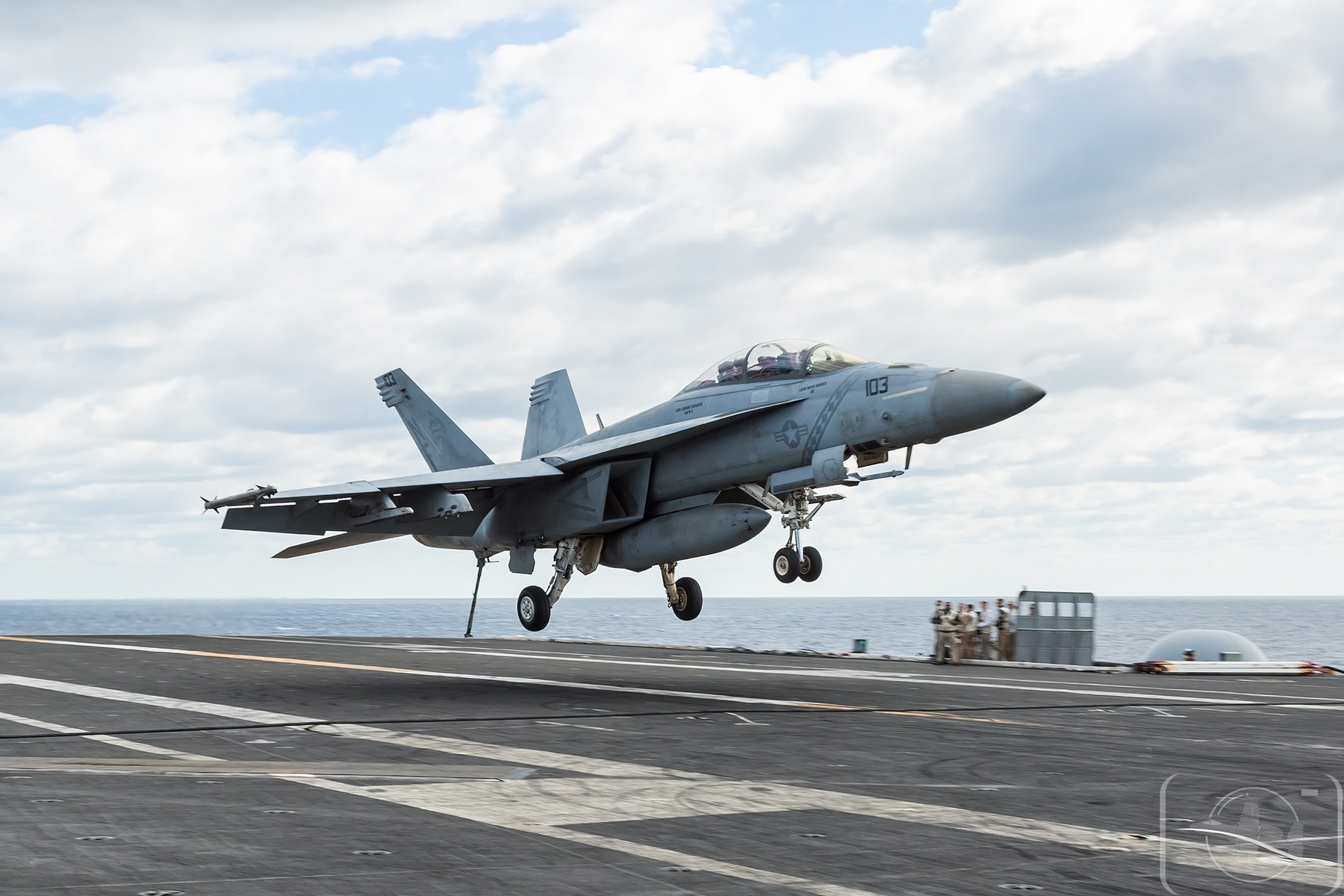
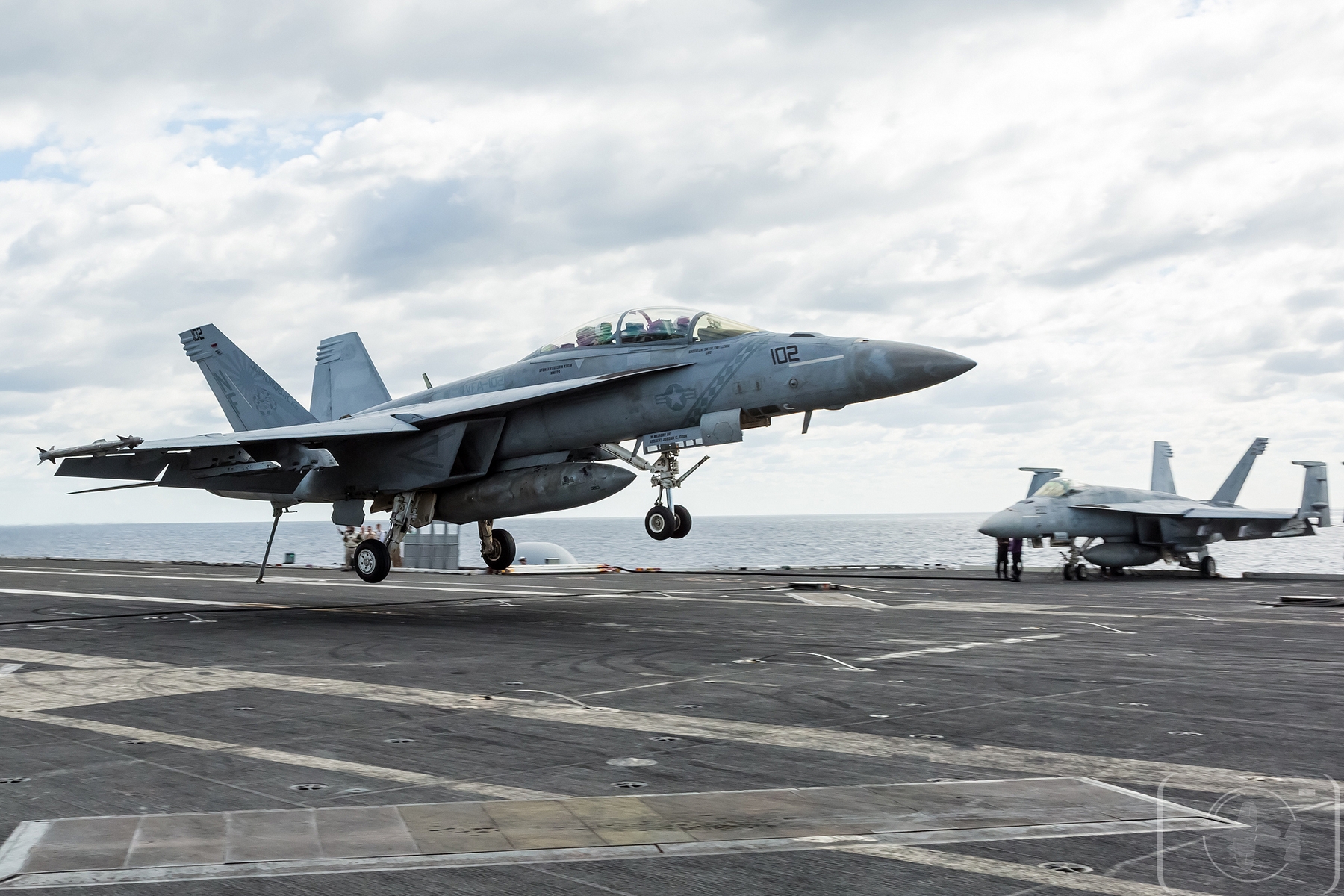
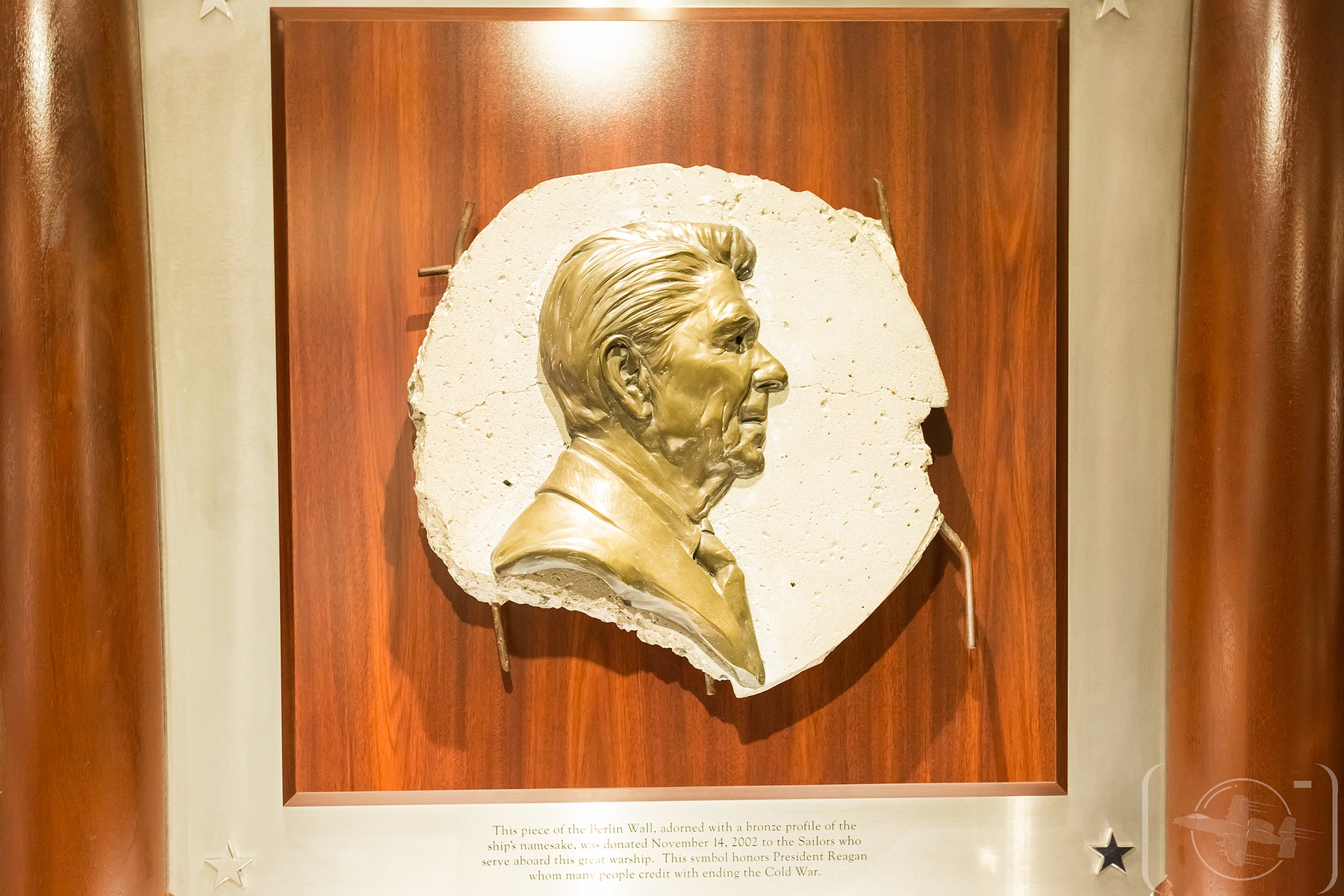
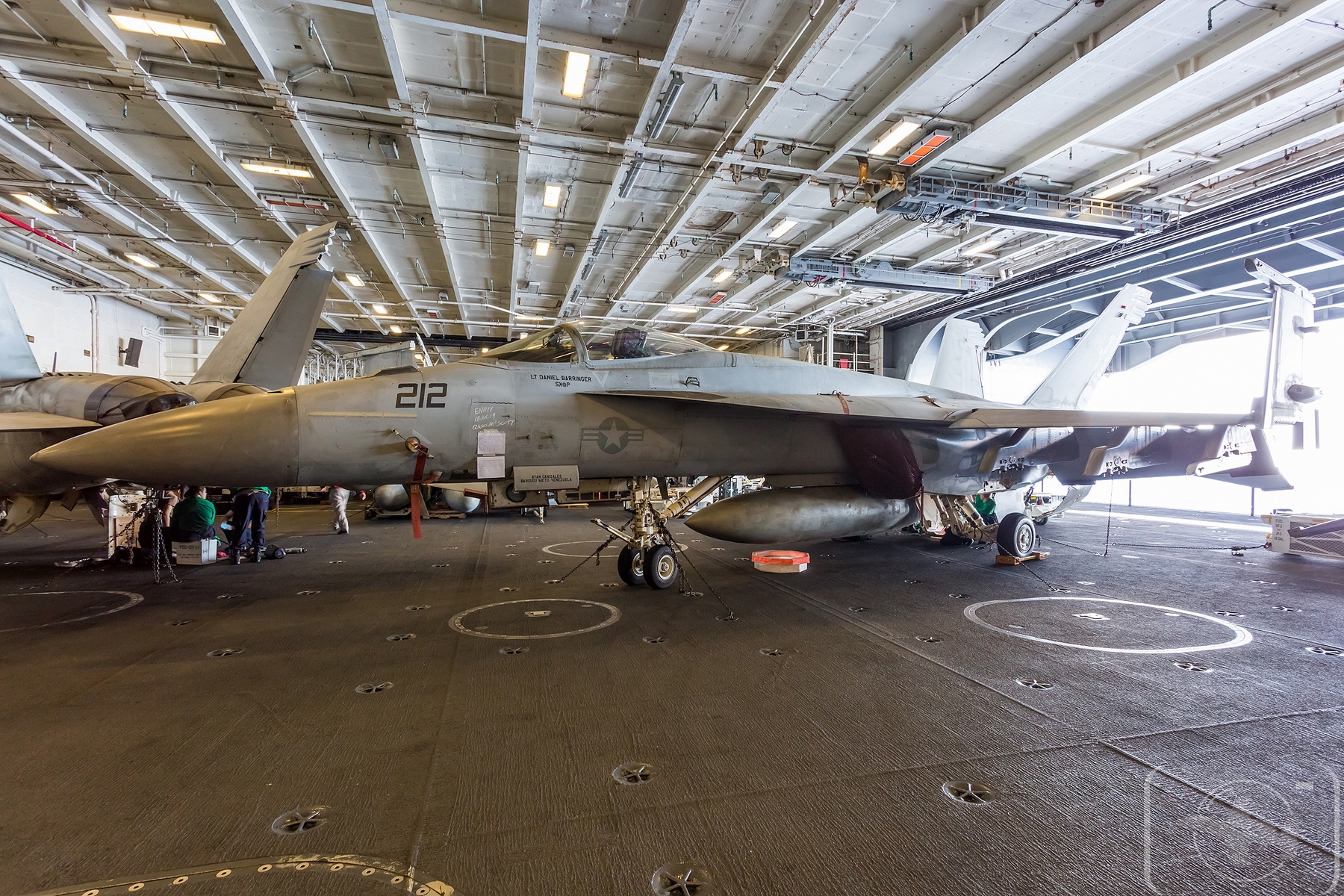
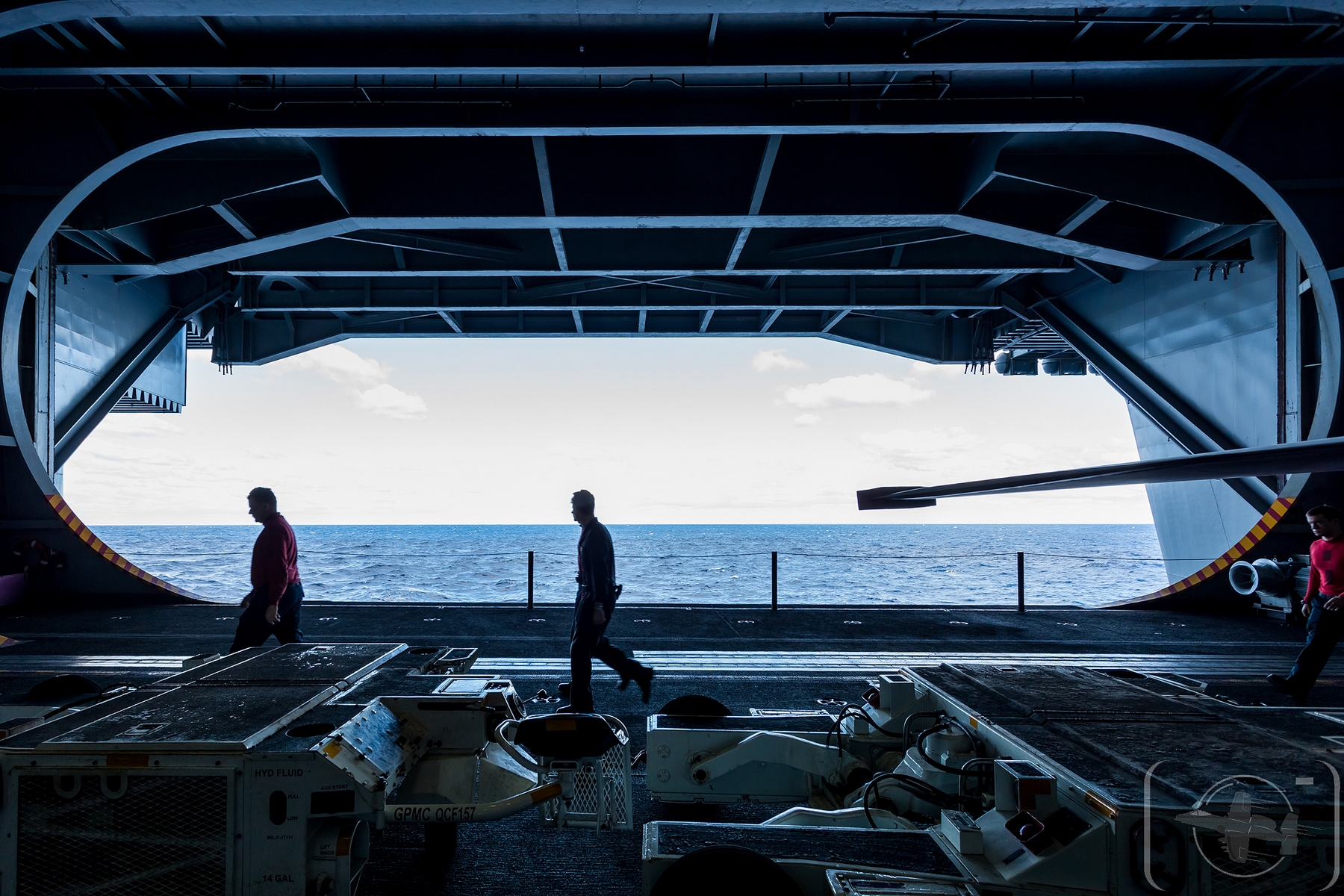
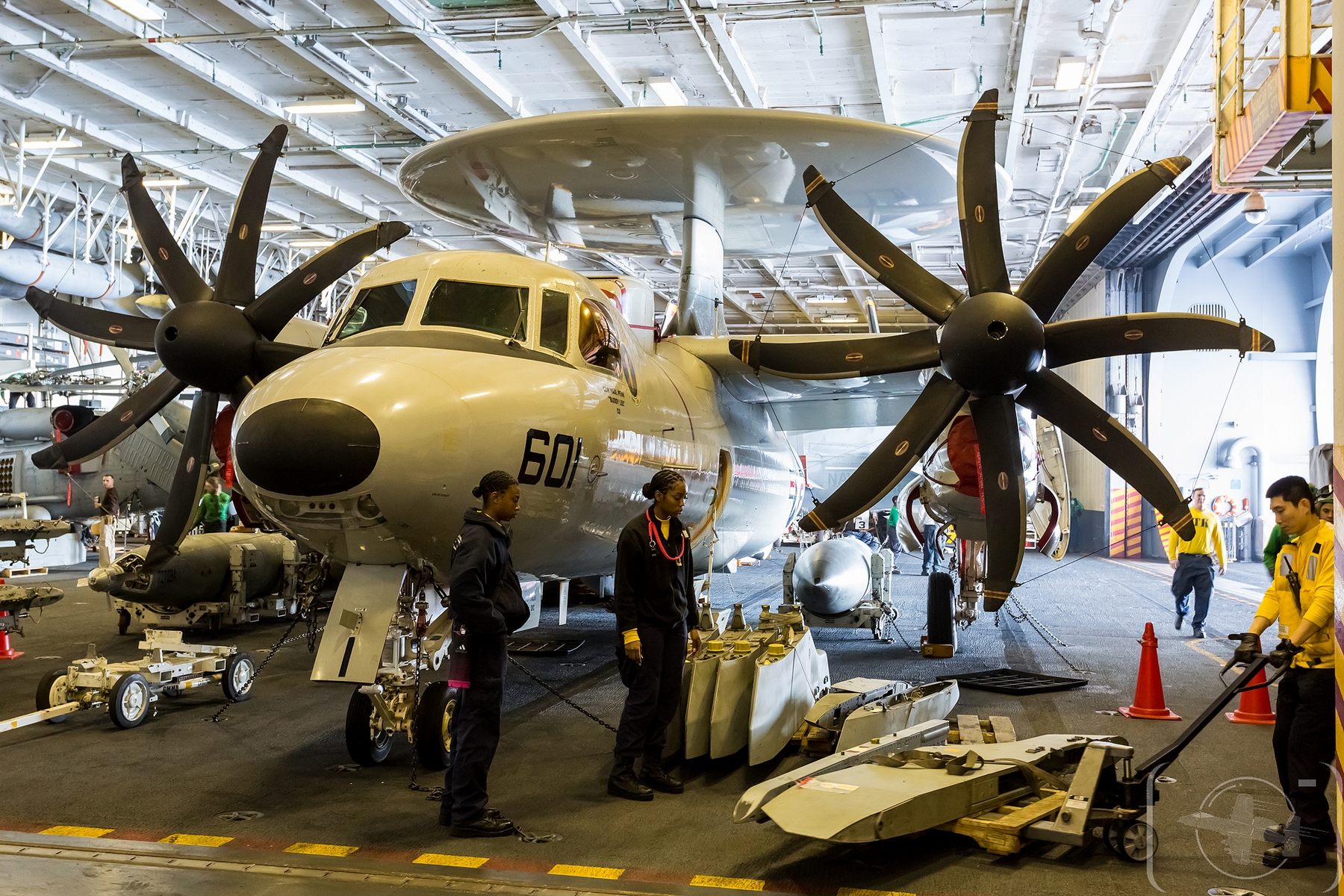
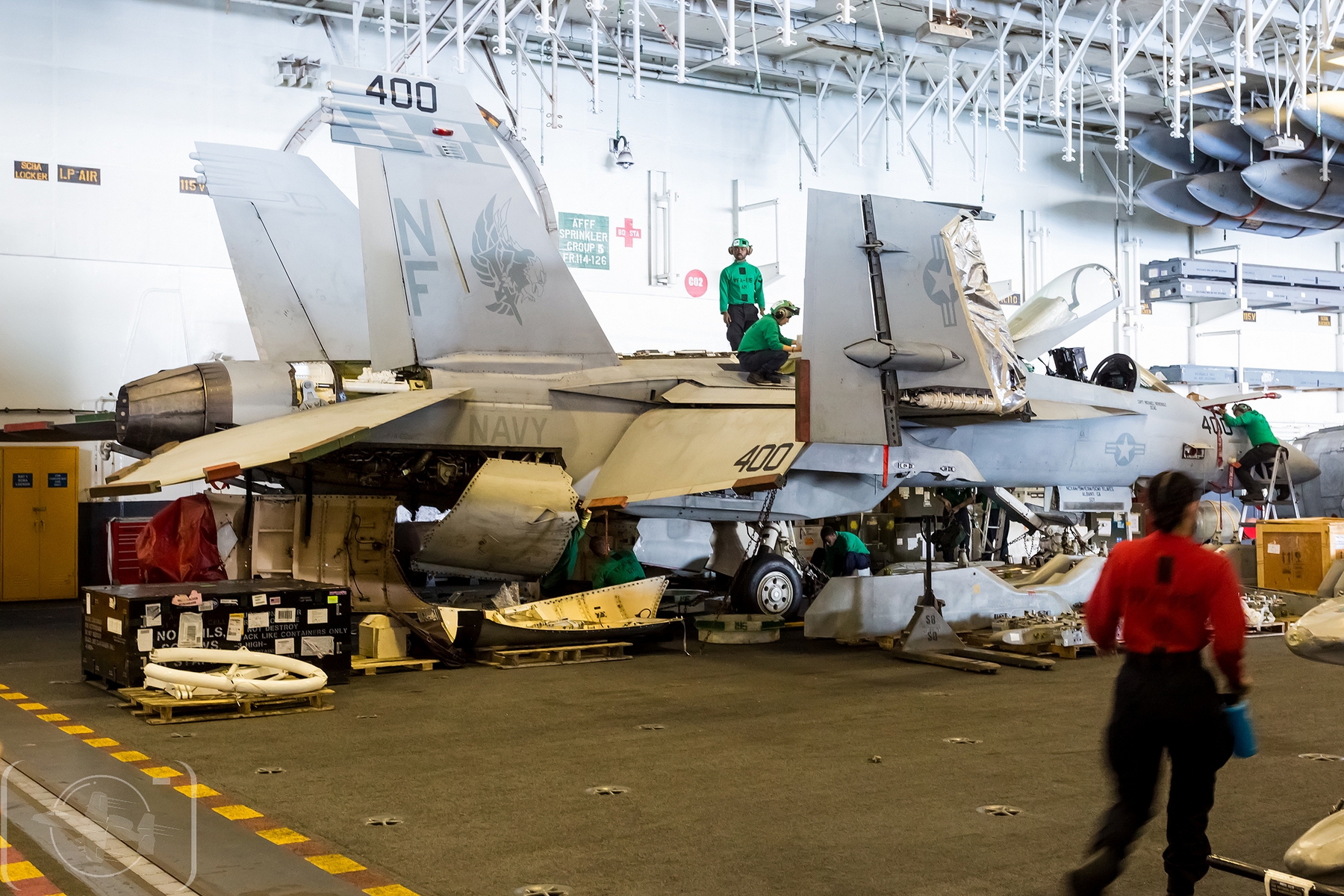
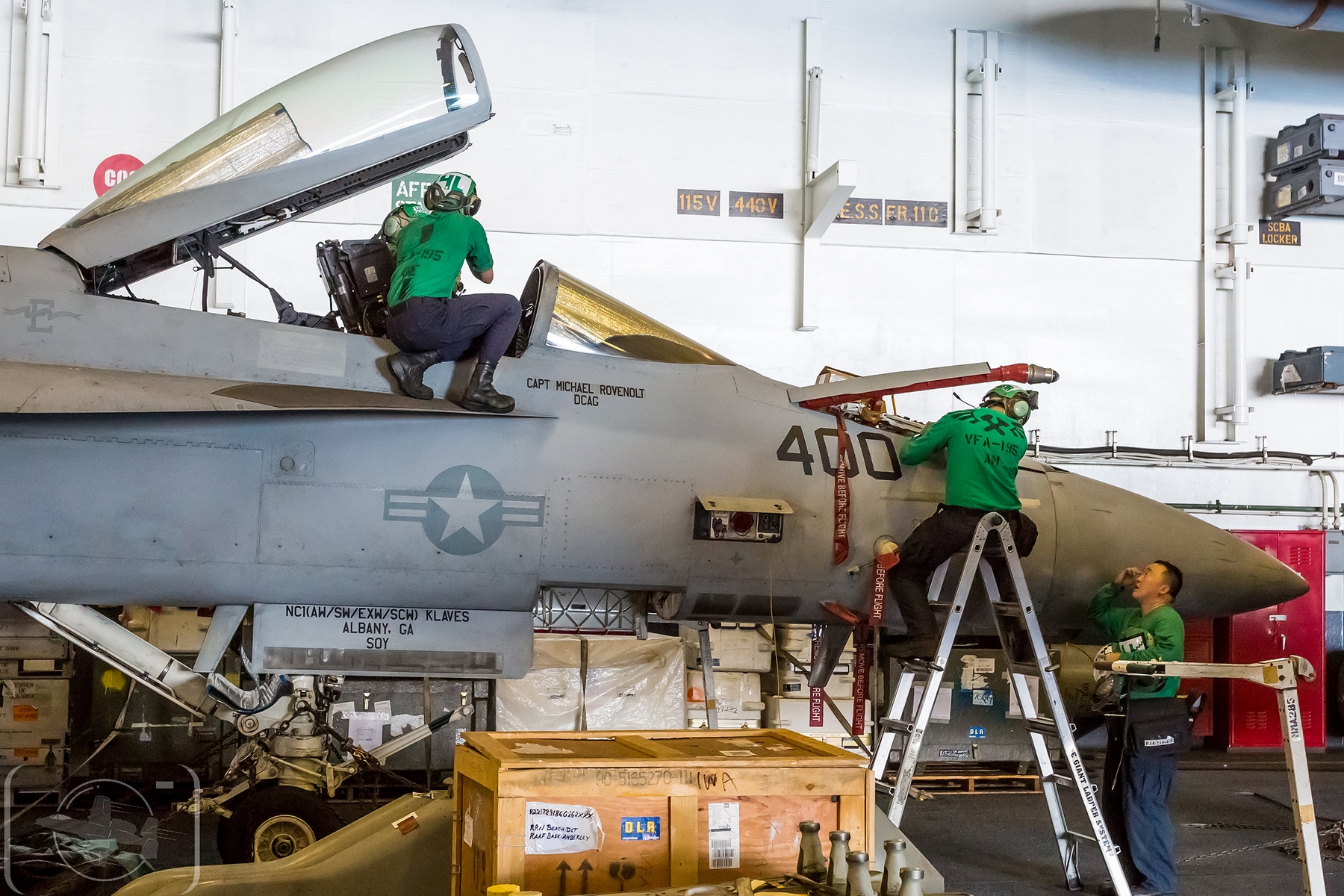
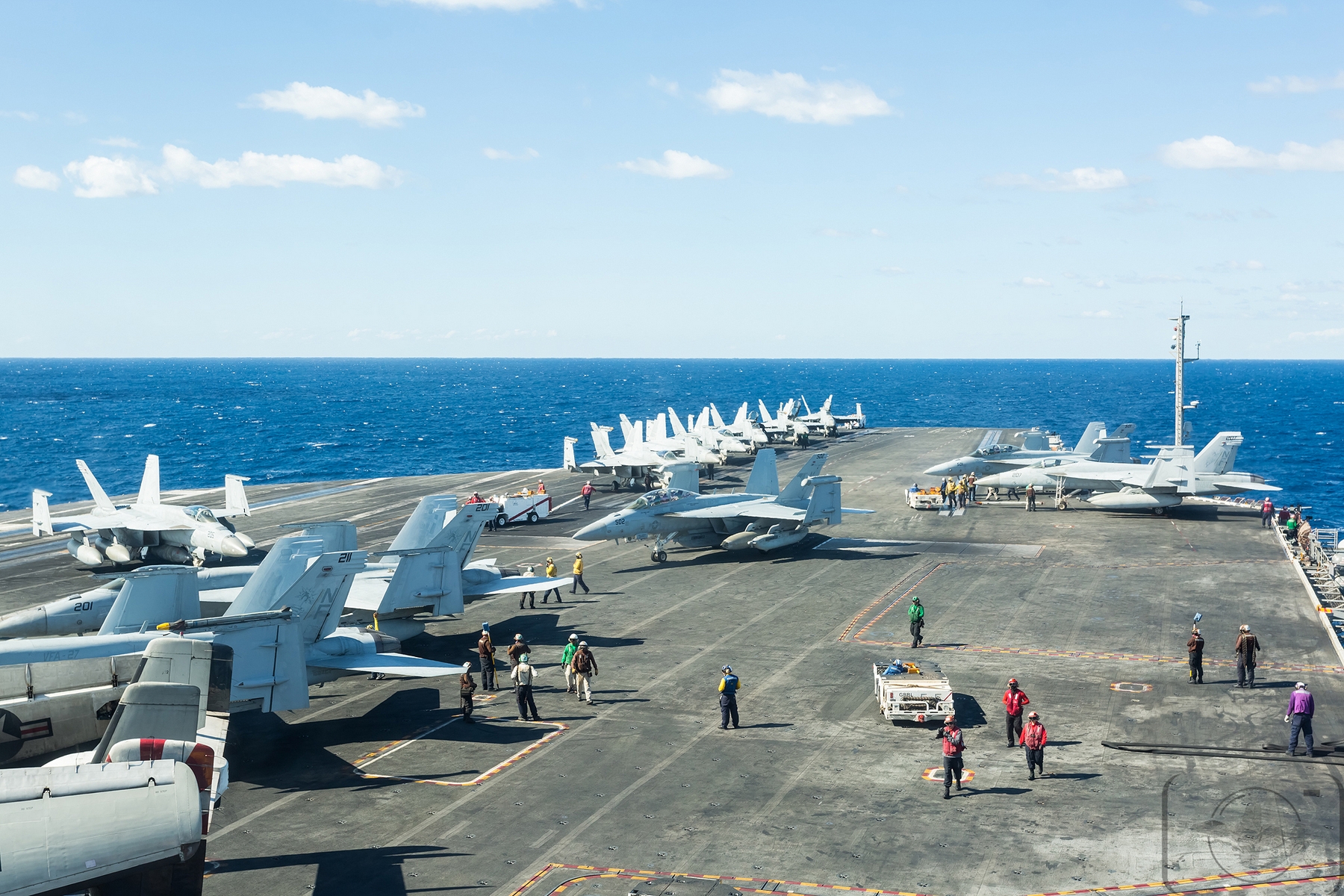
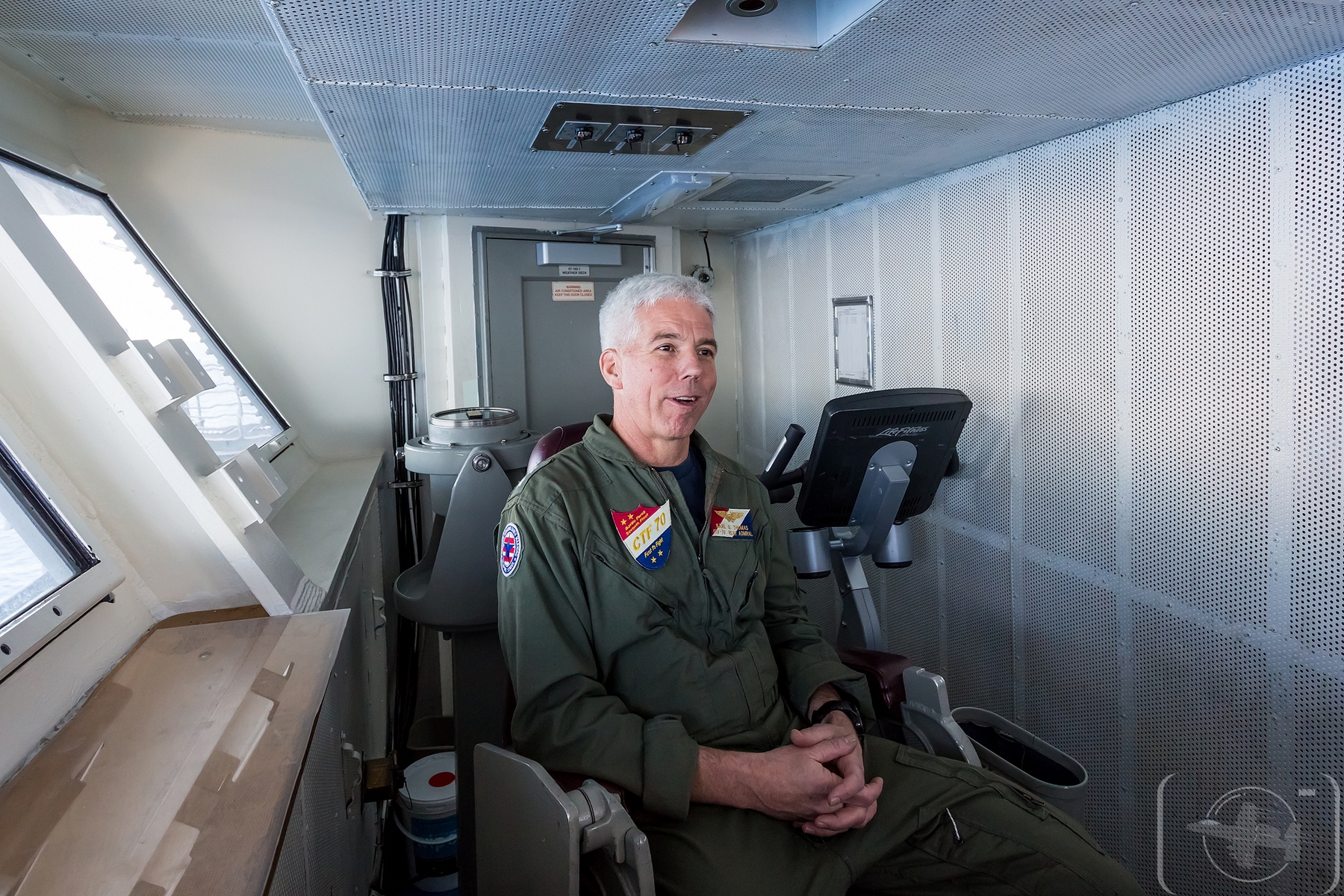
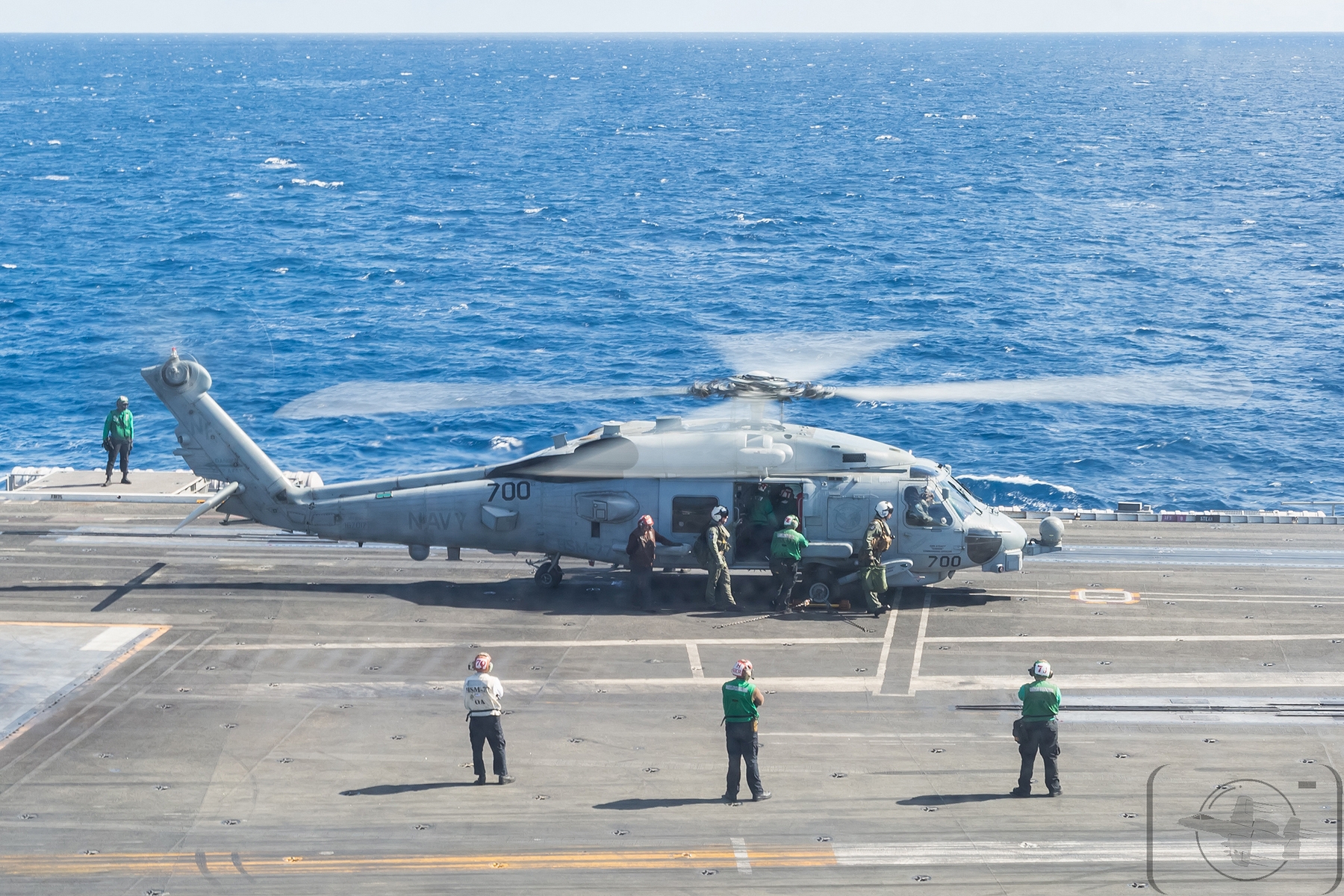
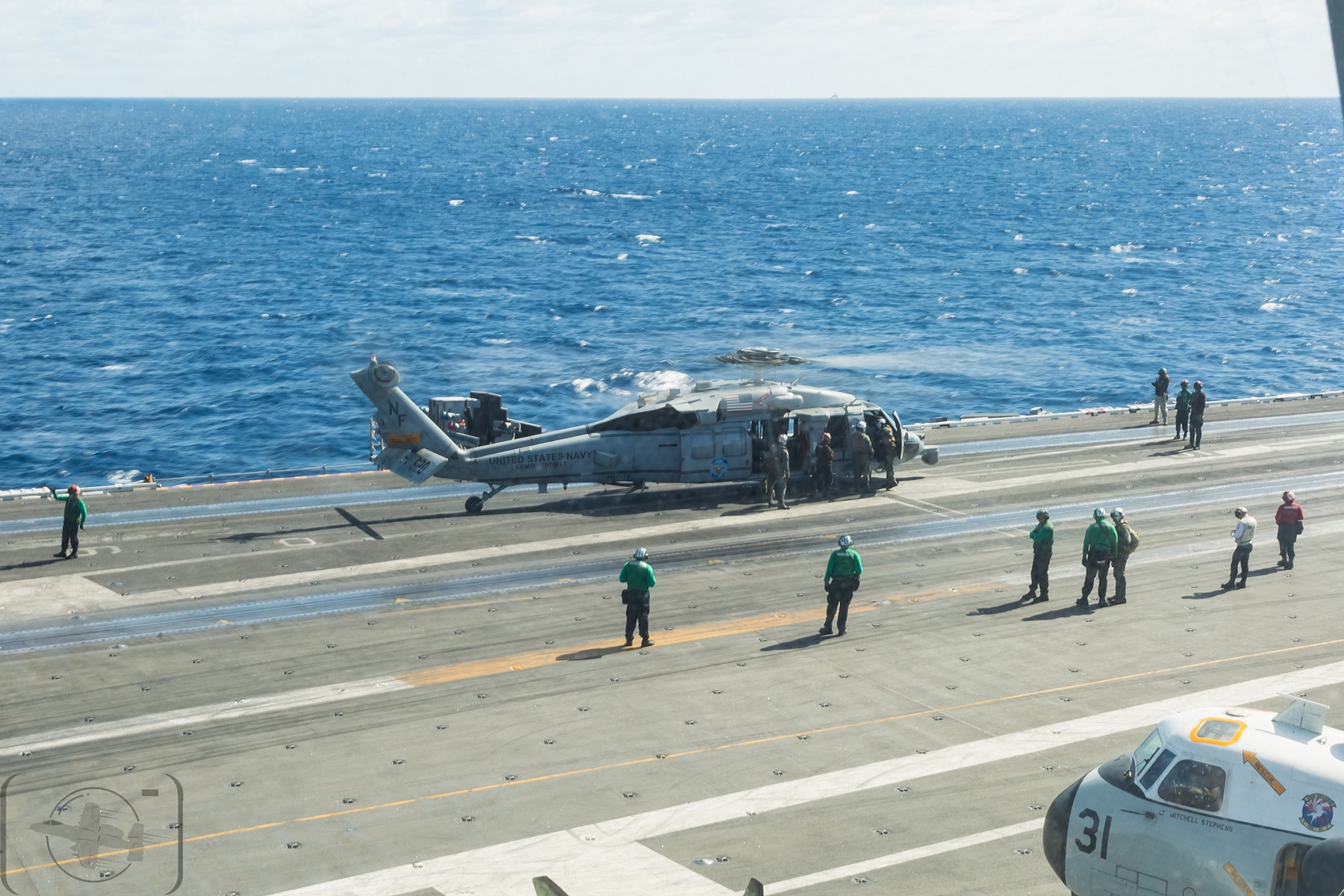
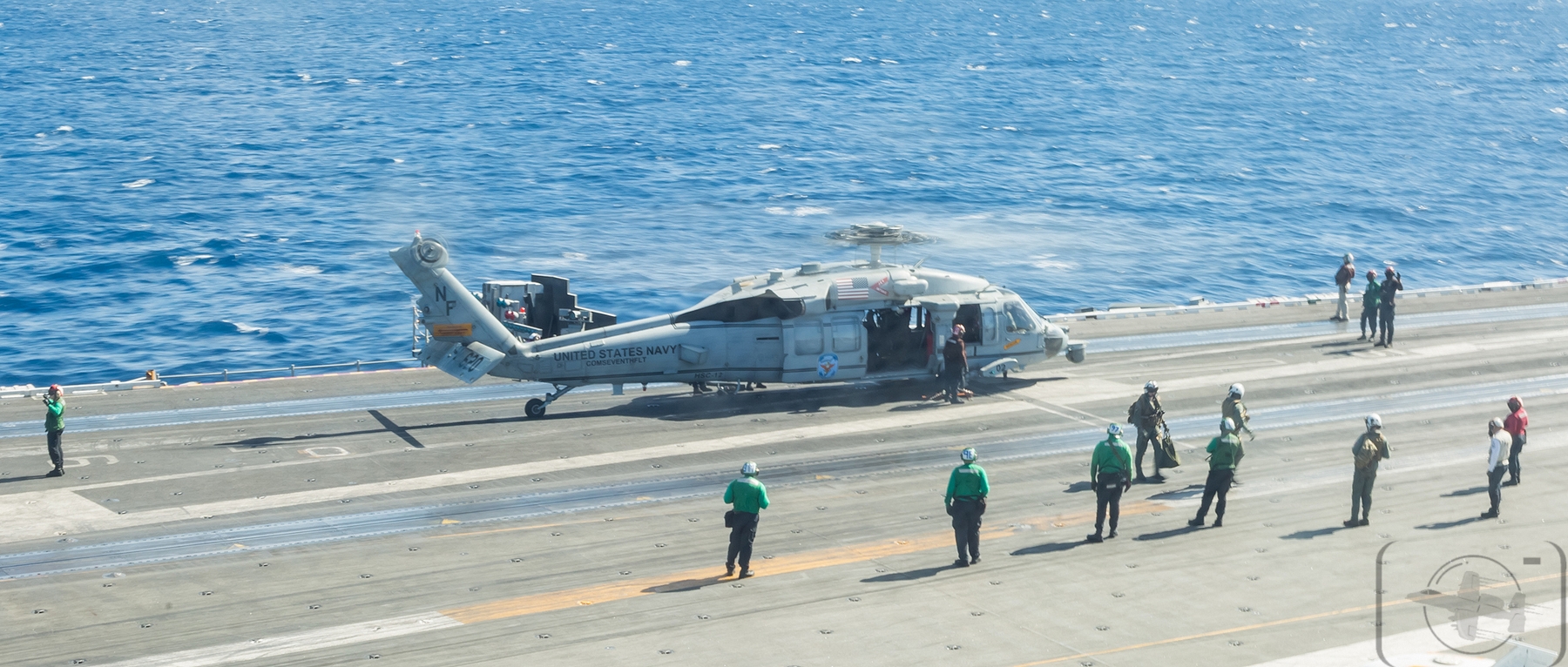
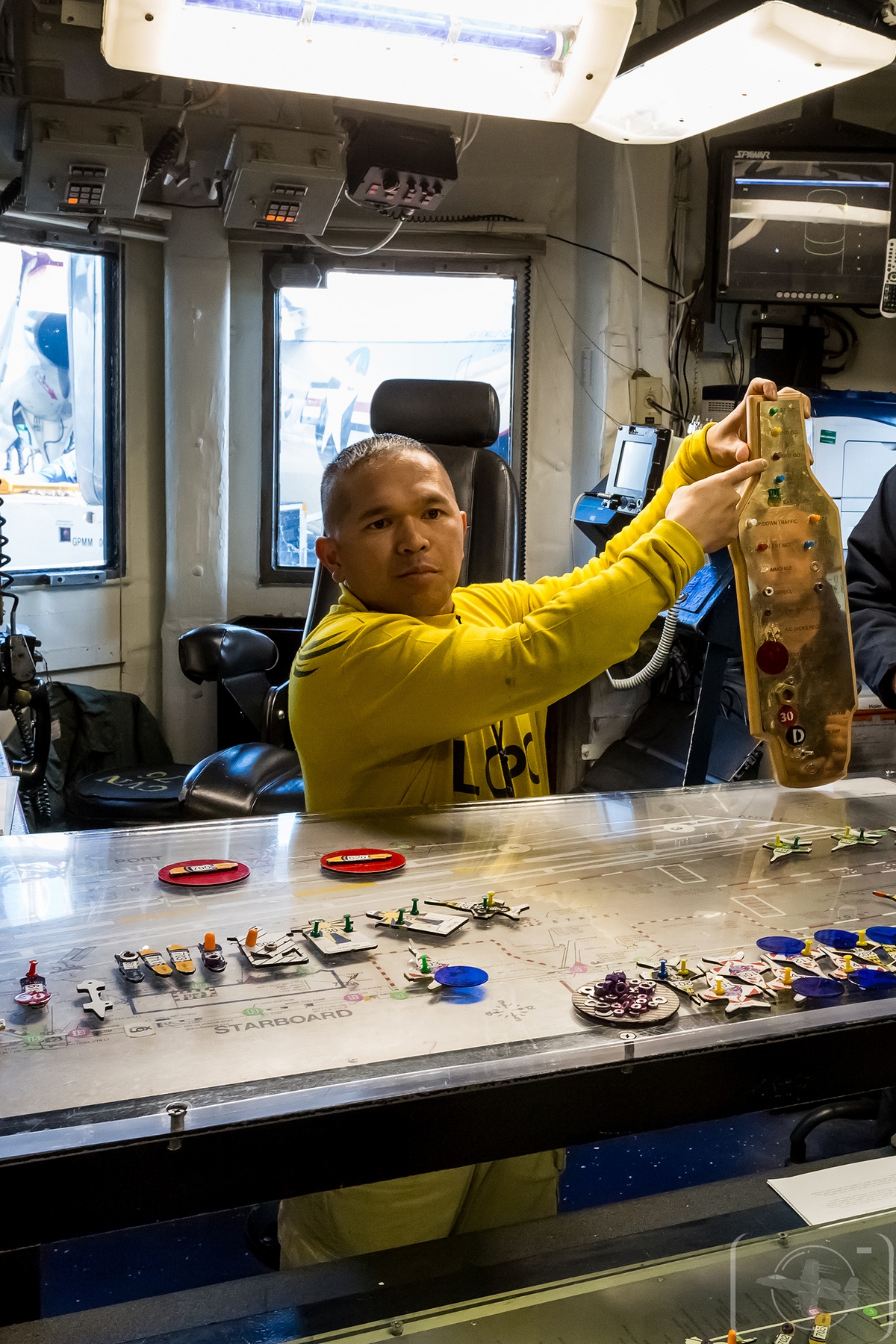
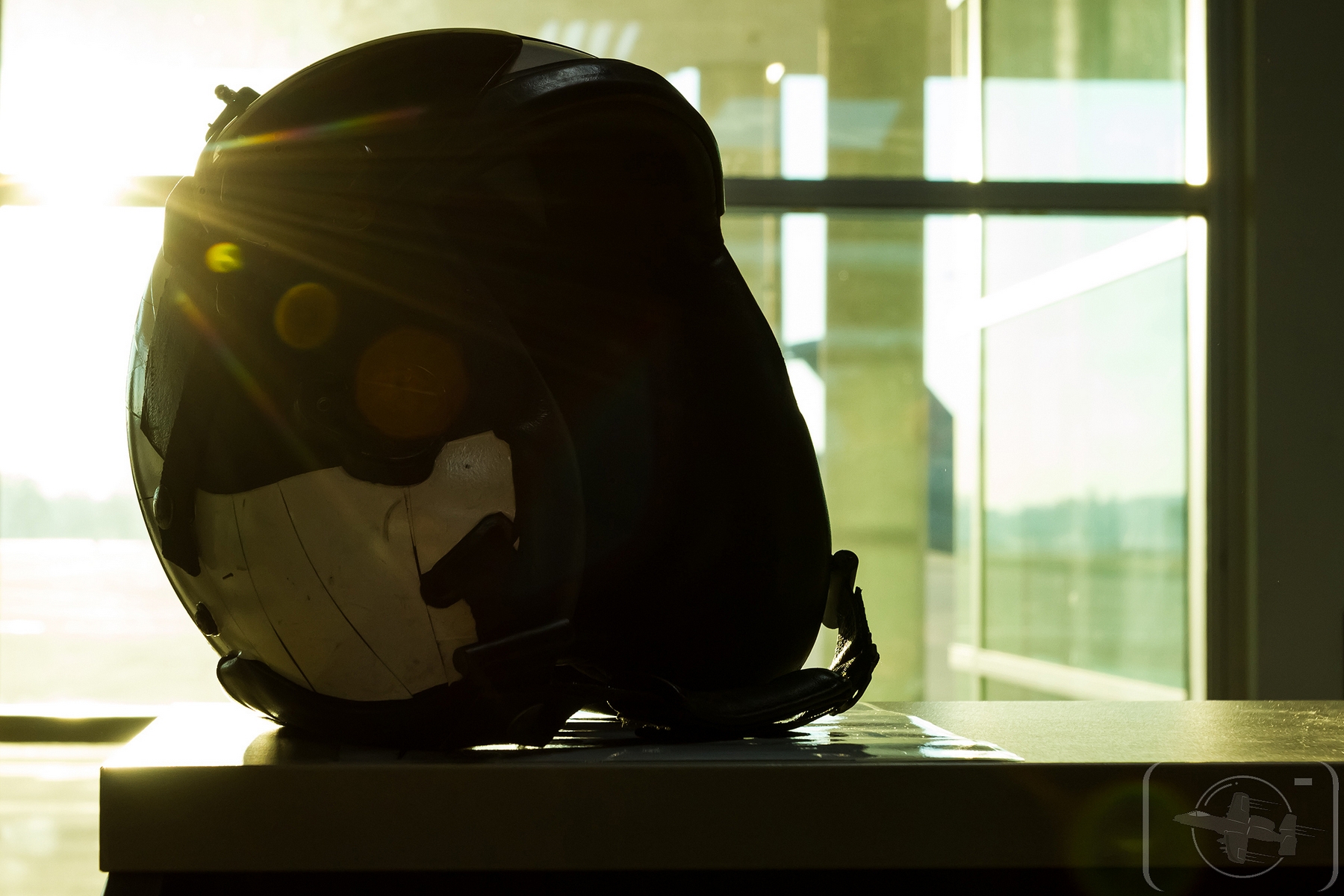
Daniel Vorbach is based in Ipswich, Queensland but born and bred in Sydney. With a passion for Military & General aviation he made the jump in 2002 & moved to Ipswich just to get closer to the mighty F-111. Growing up in the shadows of Sydney’s Bankstown Airport he quickly developed a passion for aviation at a very early age. A late convert from film to digital SLR cameras, Daniel uses Canon equipment.


